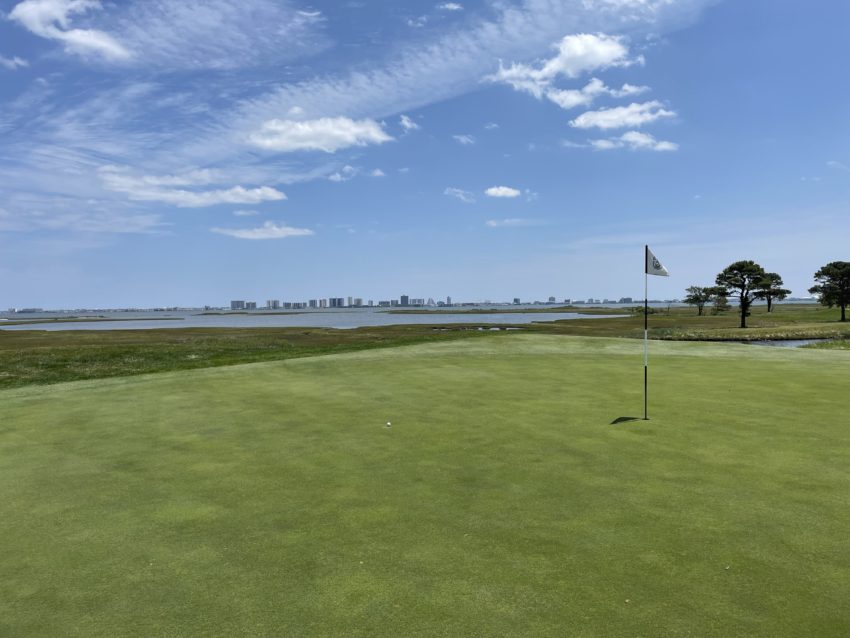
The Links at Lighthouse Sound – Played June 2023
- Rankings: Golf Magazine Public #82
- Location: 12723 Saint Martins Neck Road, Bishopville, Maryland
- Year: 2000
- Architect: Arthur Hills
- Course Access: Public
- Walking Rules: Carts Available
Score Card Information:
- Black: 7,051 yards, Par 72, 74.6 Rating/138 Slope
- Gold: 6,600 yards, Par 72, 72.2 Rating/133 Slope
- Green: 6,345 yards, Par 72, 71.2 Rating/131 Slope
- Blue: 6,033 yards, Par 72, 69.8 Rating/126 Slope
- White: 5,471 yards, Par 72, 67.7 Rating/120 Slope (Men’s), 72.8 Rating/136 Slope (Women’s)
- Red: 4,548 yards, Par 72, 67.8 Rating/115 Slope
The property for The Links at Lighthouse Sound was a functioning farm up until the 1960s. Like so much rural land, a larger development was planned for the area. Thankfully, the project stopped soon after commencing. However, it took until the 1990s for the Ruark family to get ahold of the site and determine to conserve the beauty of the parcel as well as add a golf course.
The residential development that endured was not along the water, meaning that the area could be conserved and also used for some great views from golf holes. To minimize disturbance, large wooden bridges were erected, including the longest cart bridge in the USA.
Before we get into the tour, I have to talk about two of the guys playing in front of us…
They were on the younger side and were wearing pants (on a warmer day). It seemed they were playing a scramble from the tips. Their foursome was painfully slow. They played music loudly and used the word bro about 150 times 🤣. I just had to laugh at the whole situation.
Hole 1 – 332 yards – Par 4
There was a good bit of rain so the course wasn’t playing firm. The opening hole is a generous tee shot where good drives will set you up with a short club into the green.

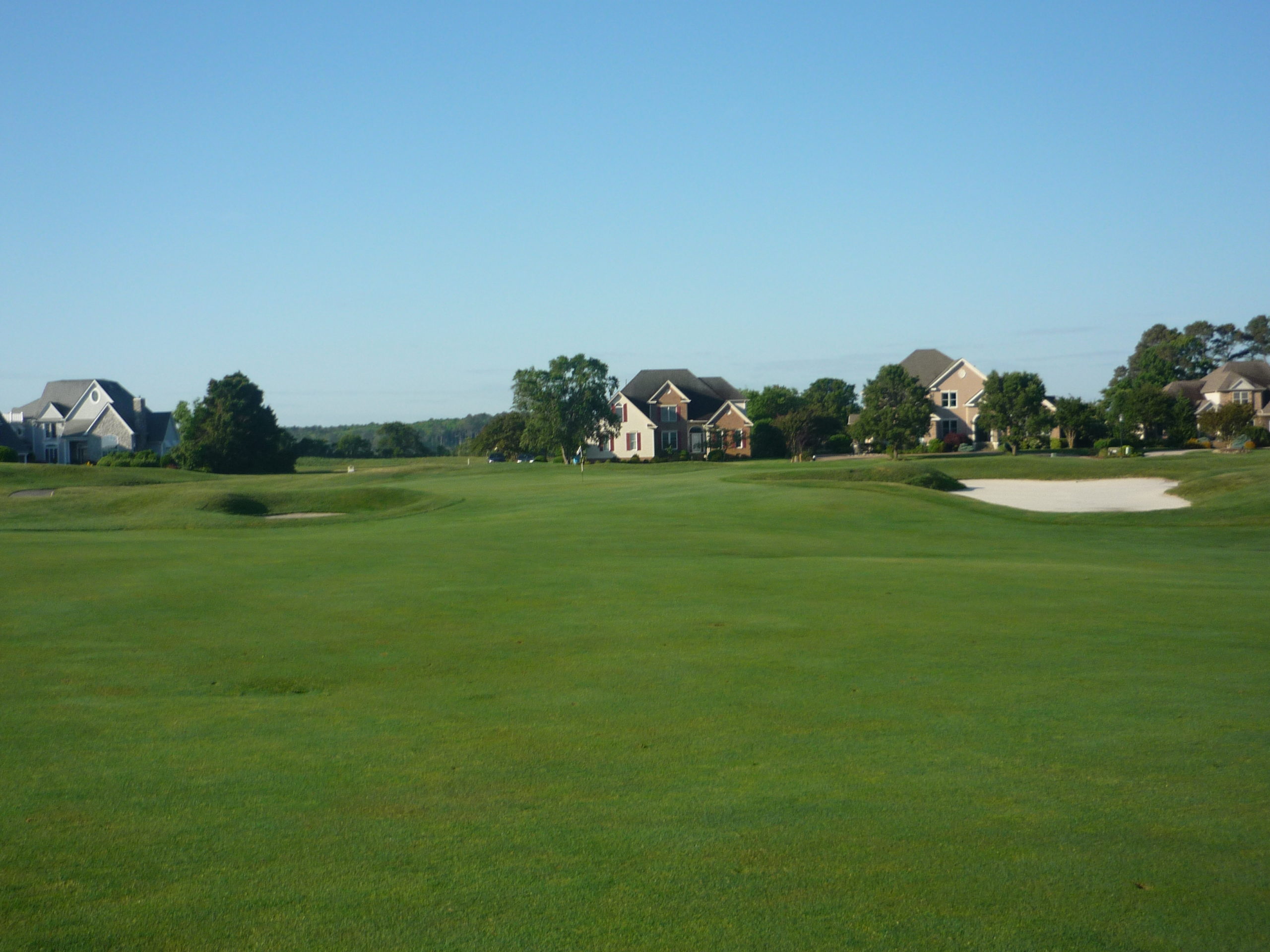
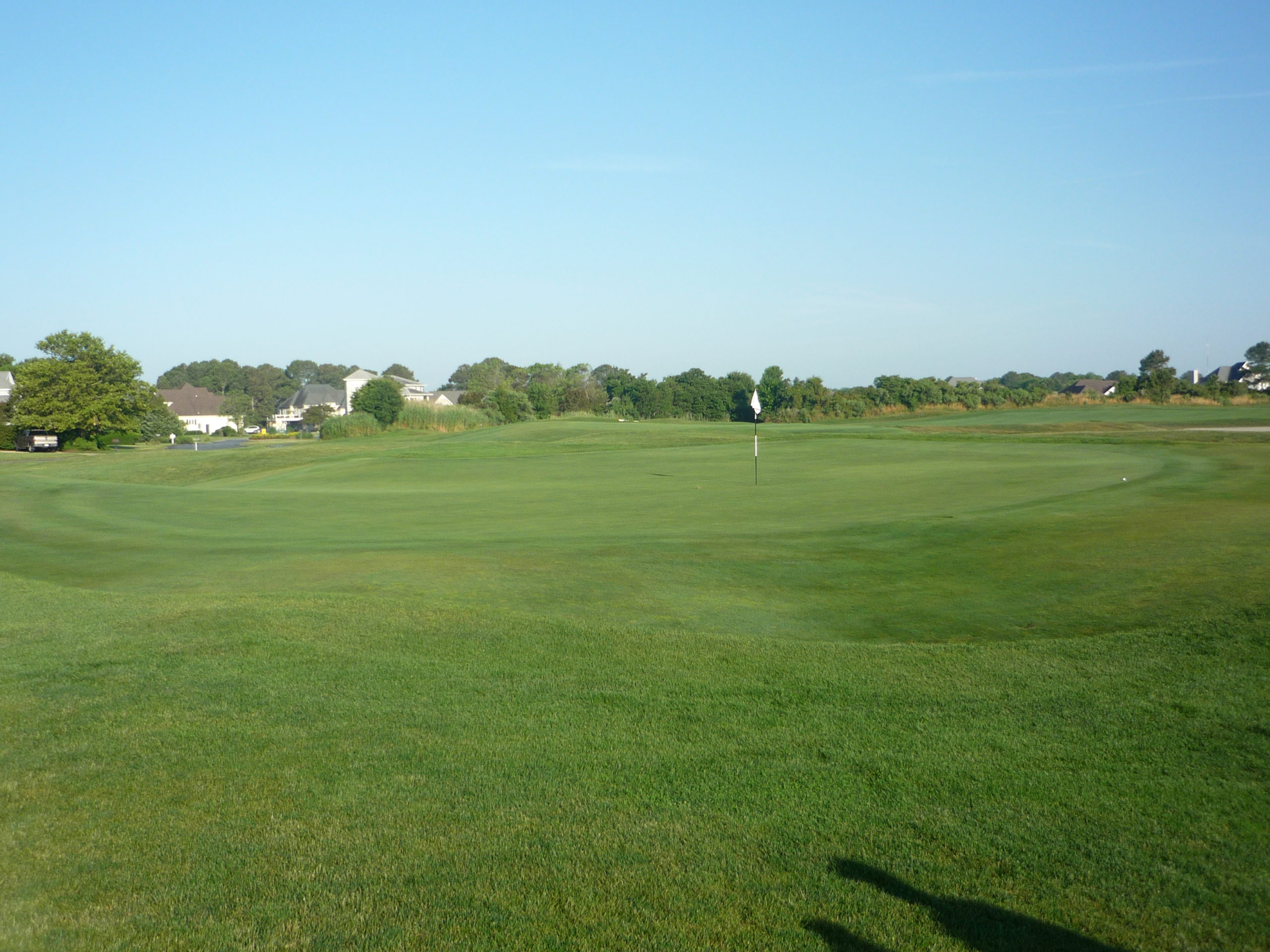
Hole 2 – 496 yards – Par 5
Another generous fairway on this shorter par five is best attacked up the left side.
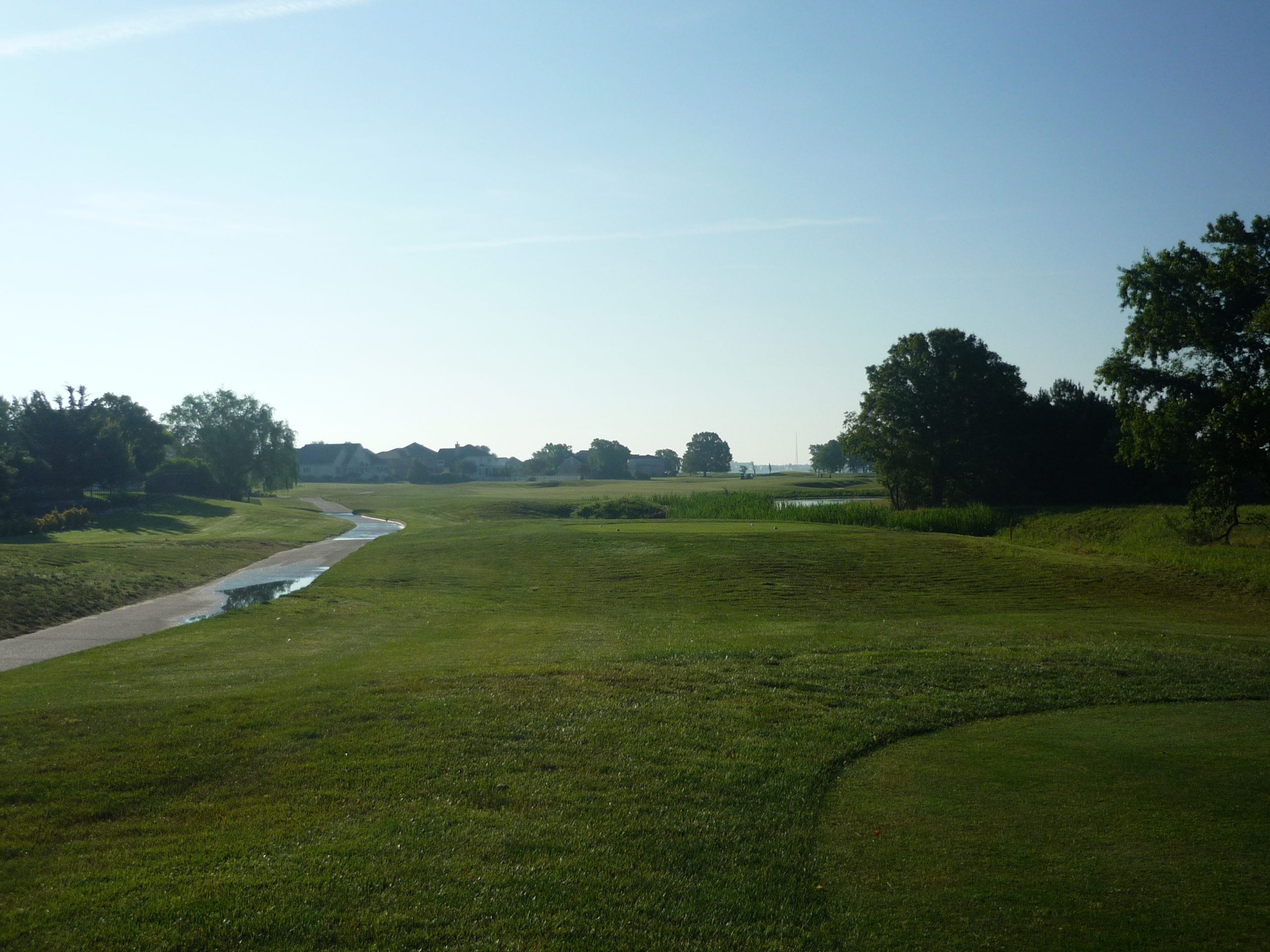
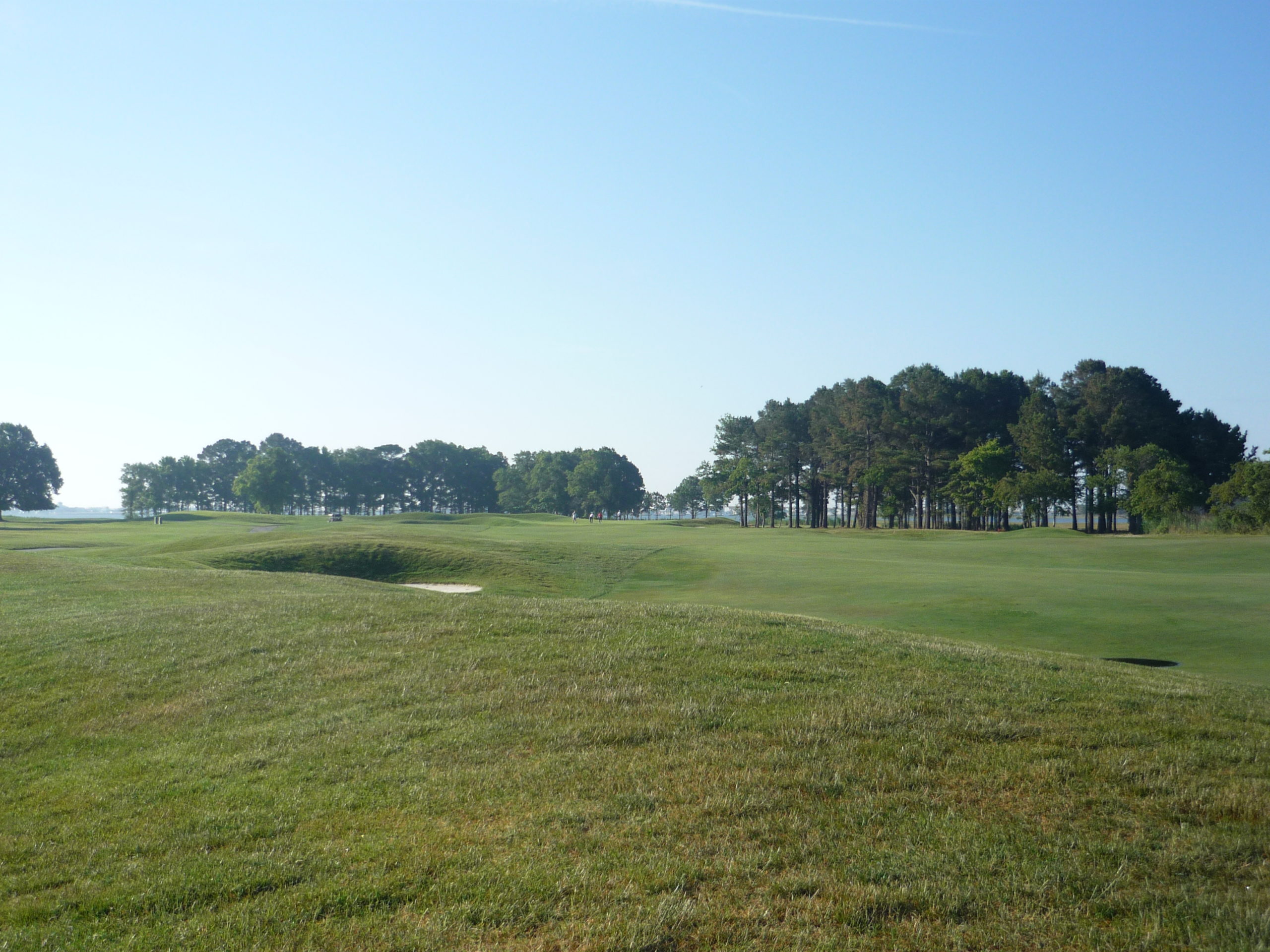
The green is a large target. It also extends to form a double green with the next hole.
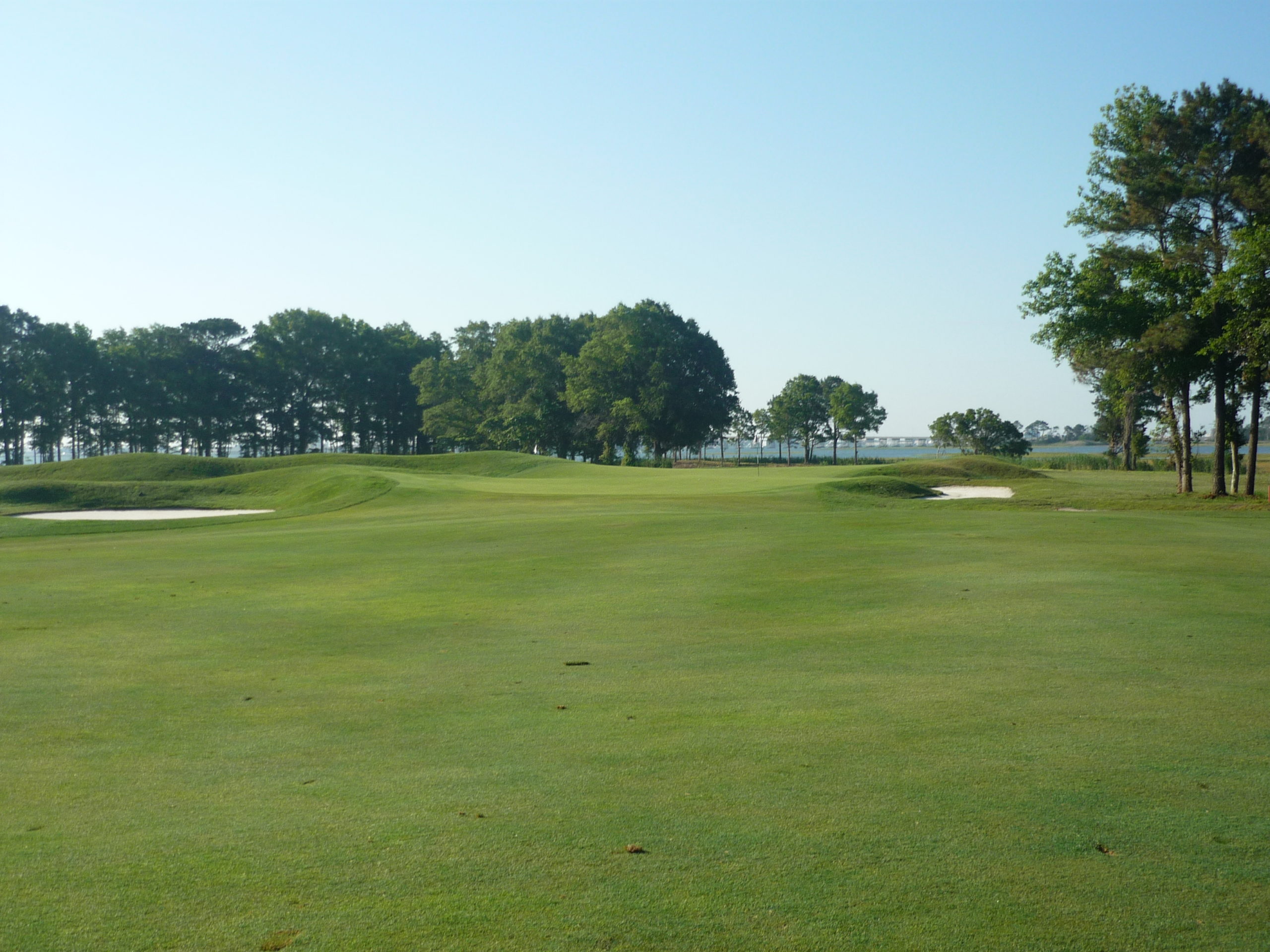
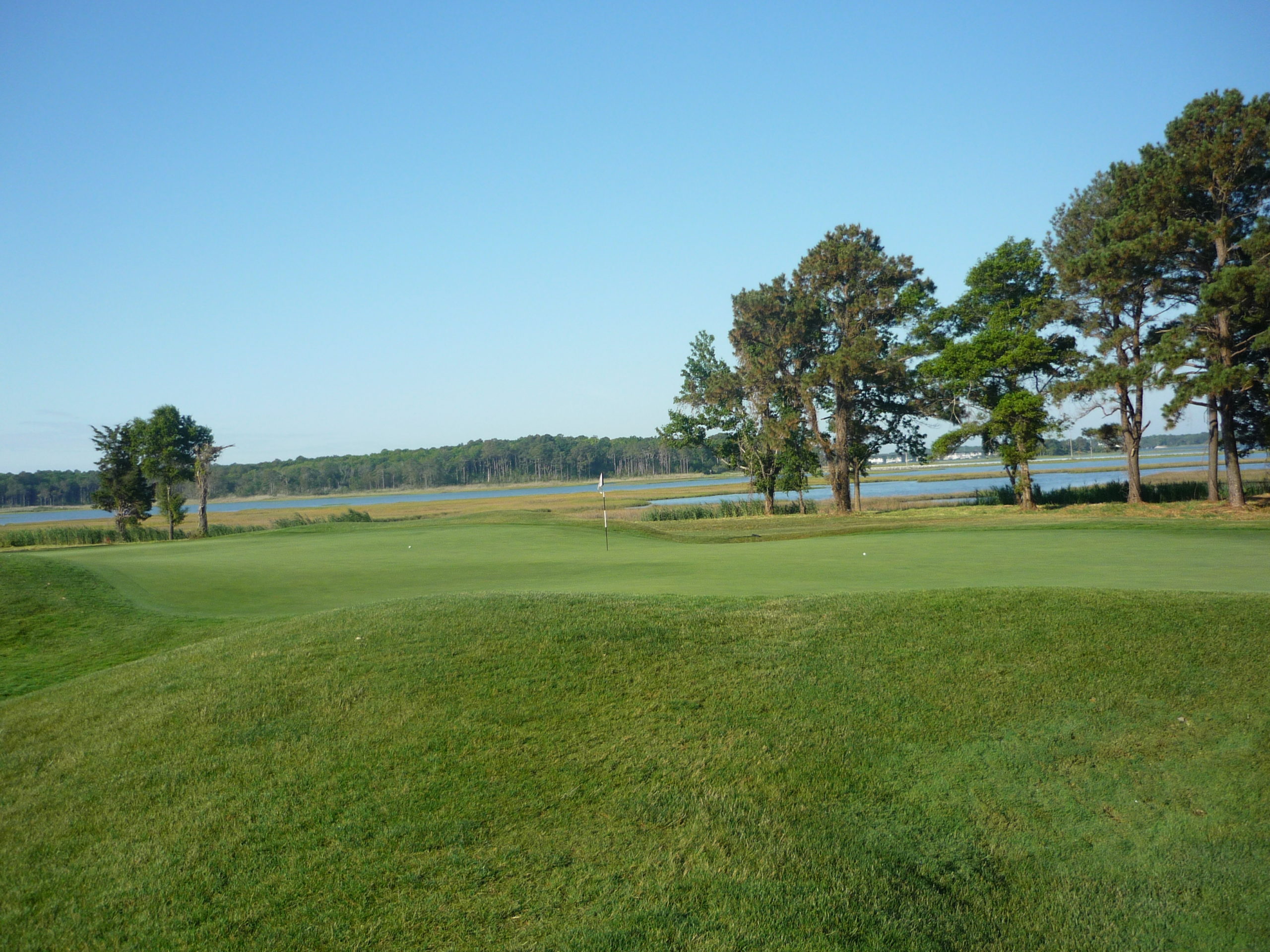
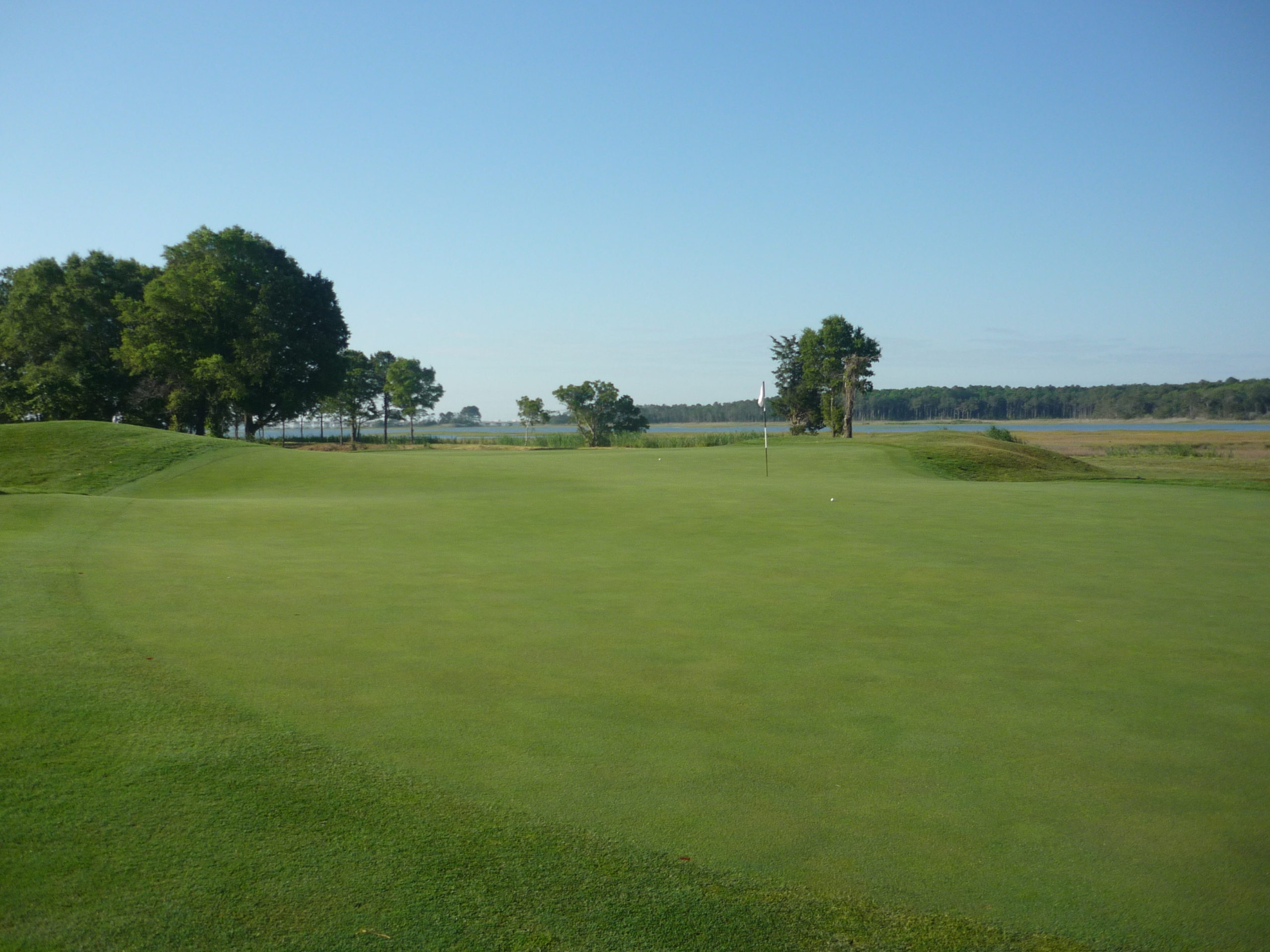
Hole 3 – 162 yards – Par 3
The green connection I mentioned is behind the bunker and mound on the right side of the photo below. There is not much movement around this green but missing left gives you more green to work with.
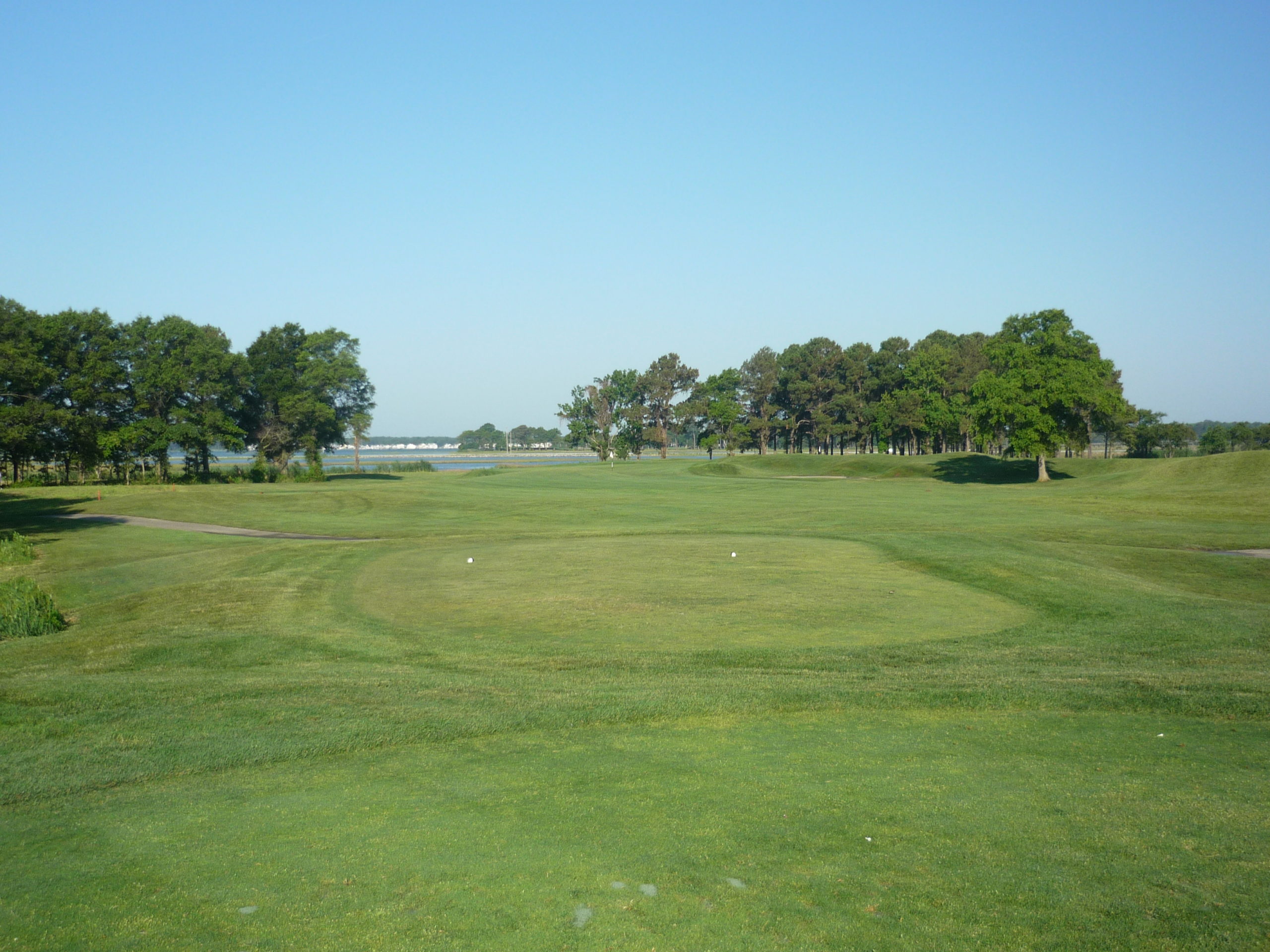
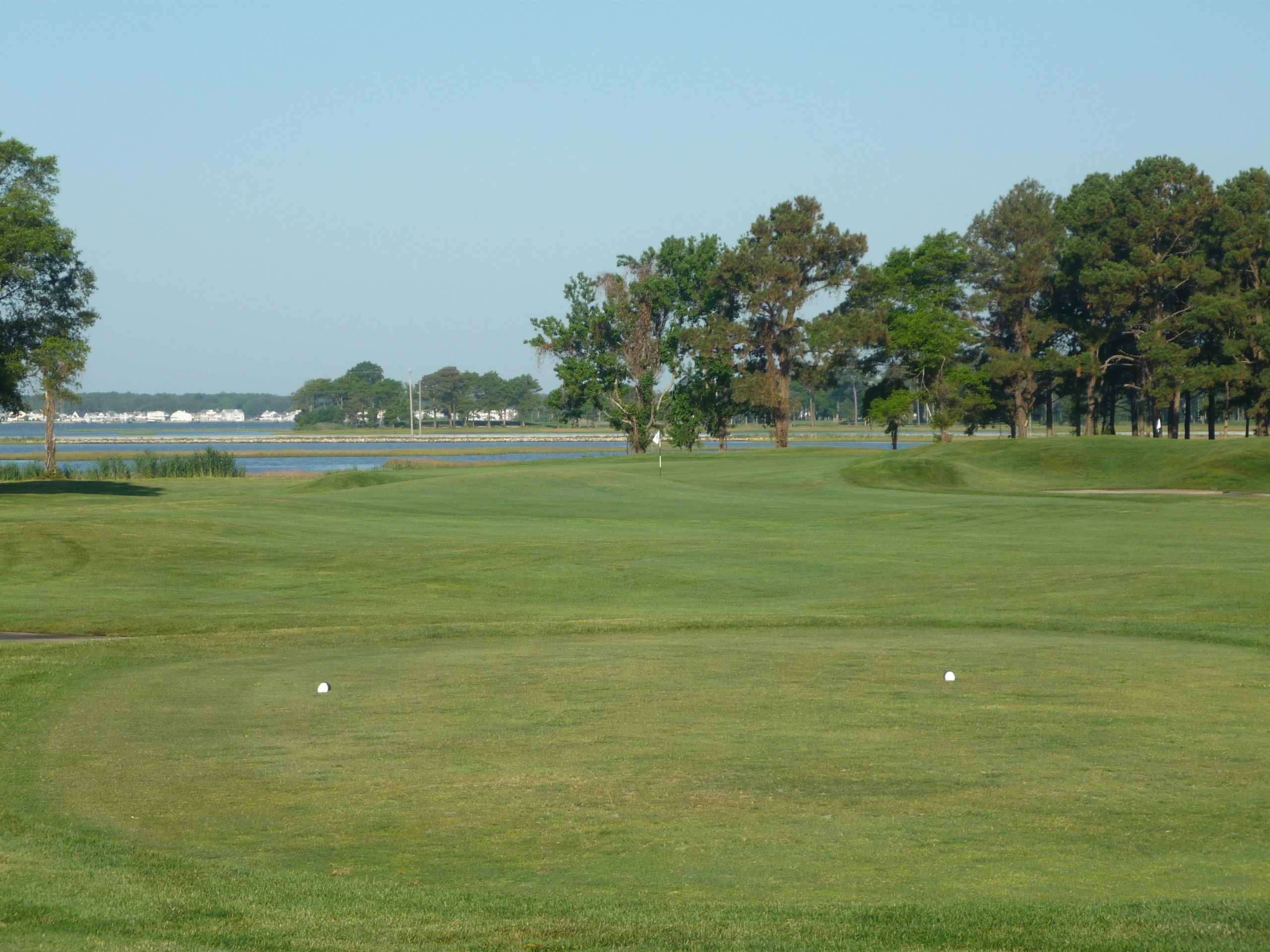
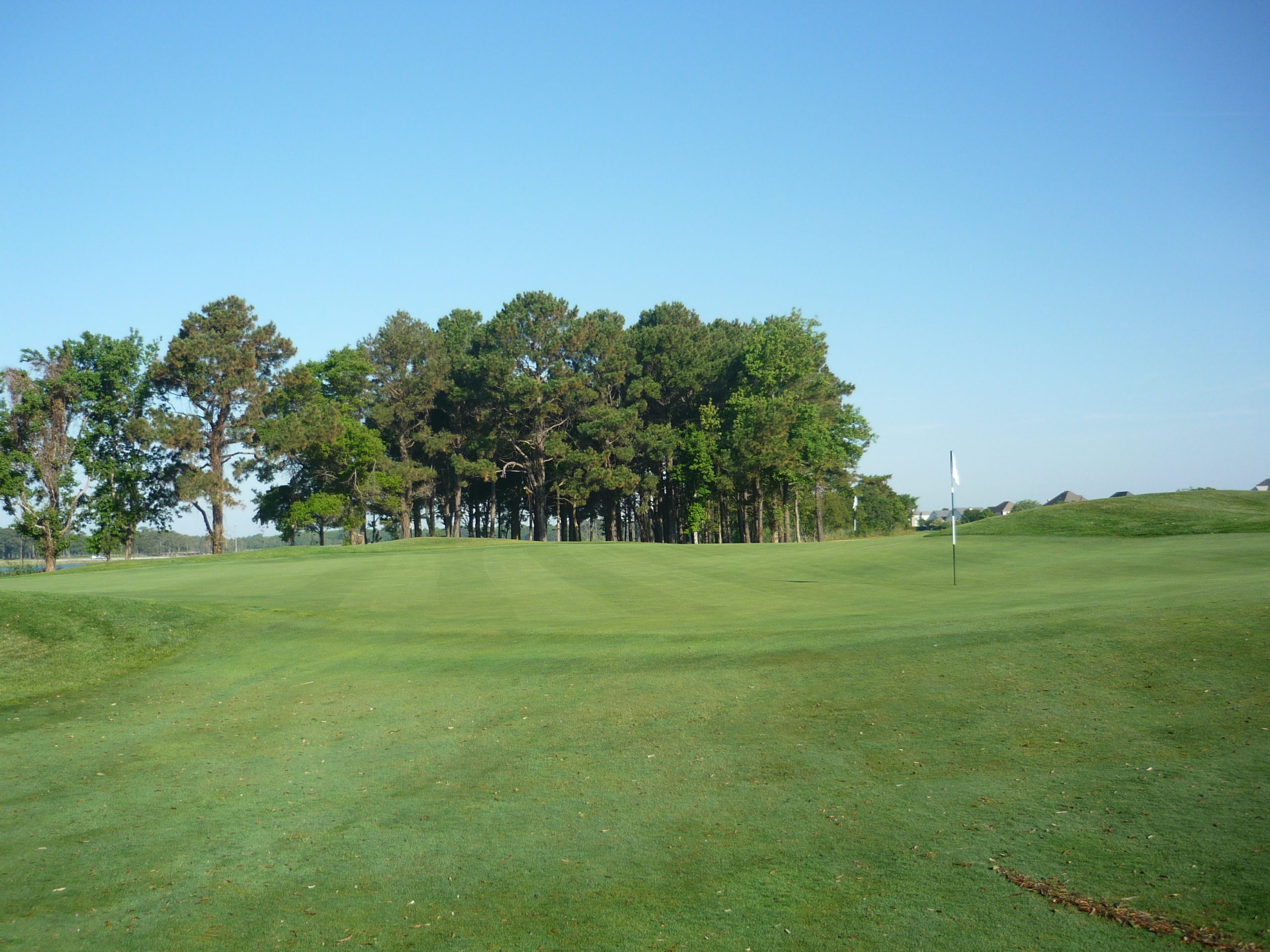
Hole 4 – 385 yards – Par 4
This dogleg right was playing into the sun so it was hard to see. The farther right you go, the longer the carry.
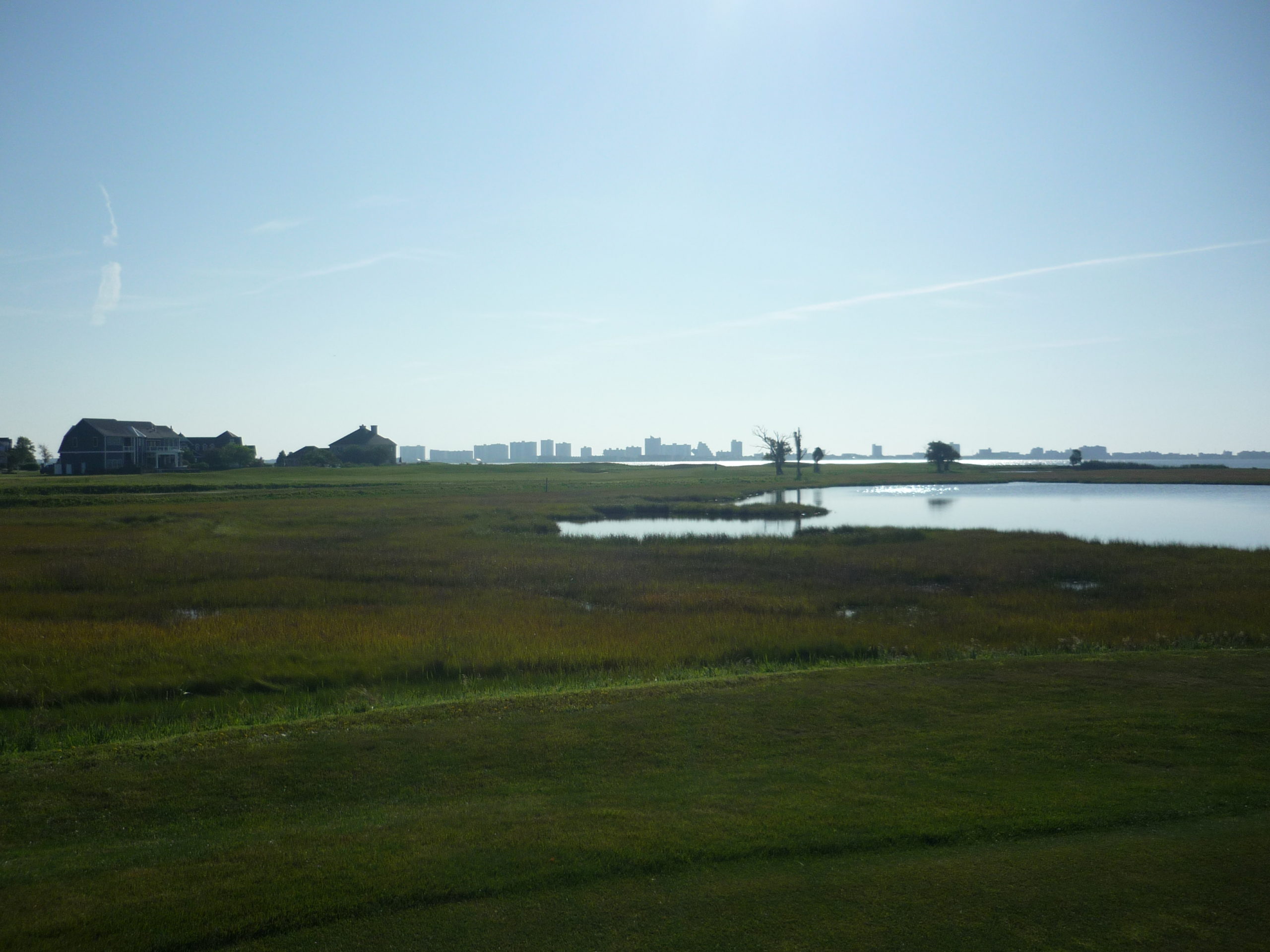
As you can see below, the green has a lot of internal sloping.
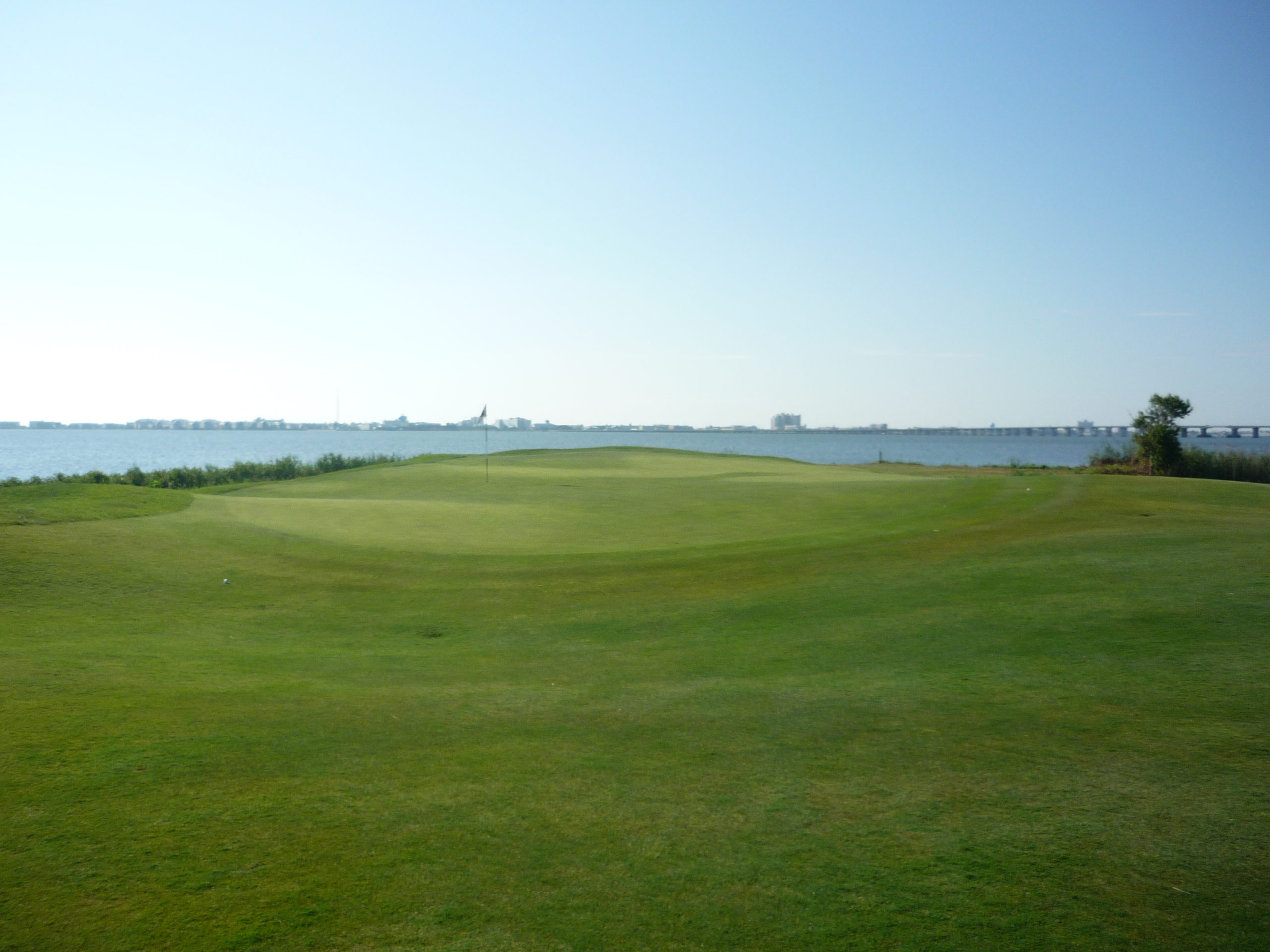
Hole 5 – 160 yards – Par 3
We had some wind blowing on this exposed green that is near the water. The green is on the shallow side and is guarded by bunkers with trademark Dye railroad ties.
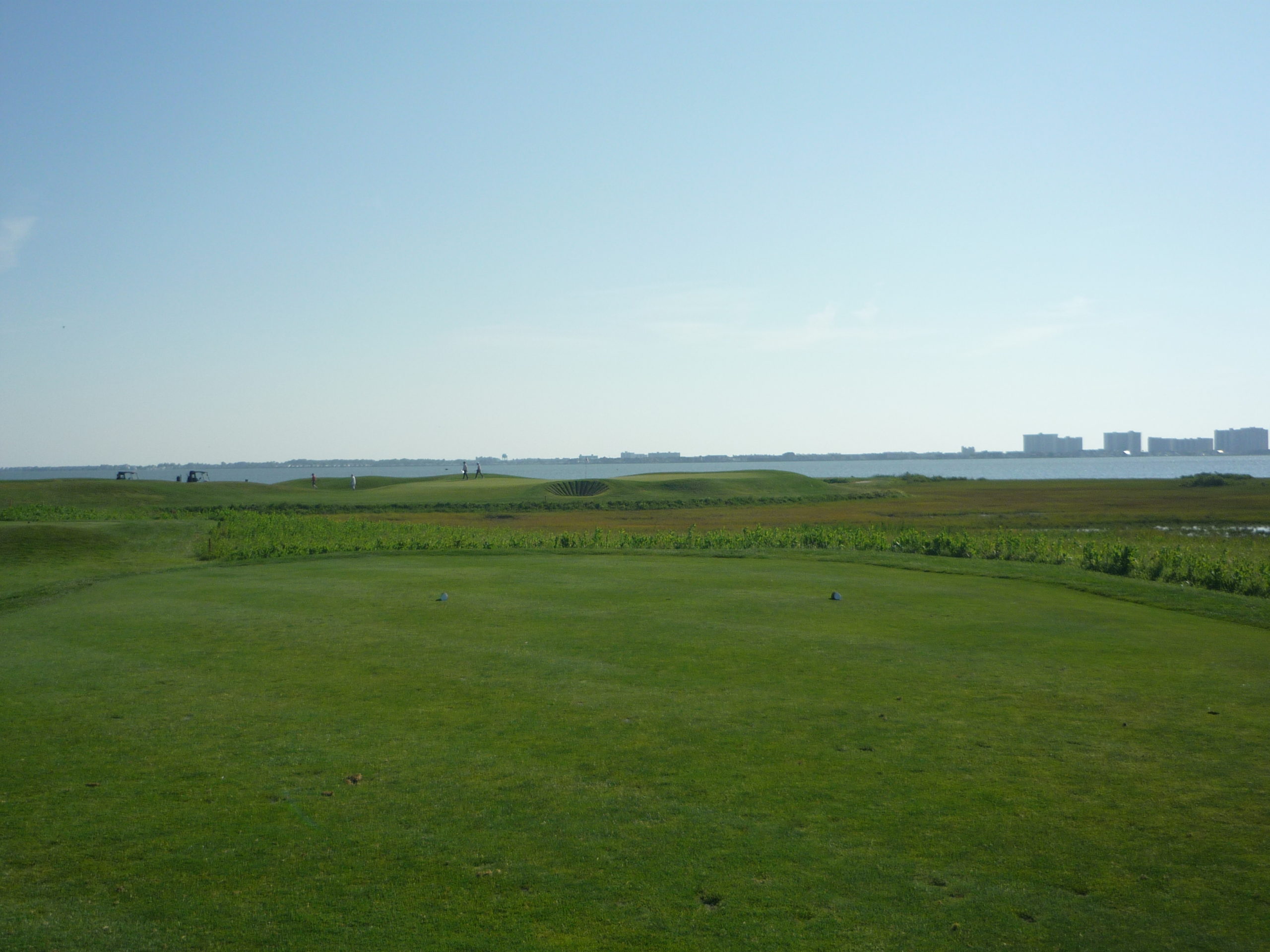
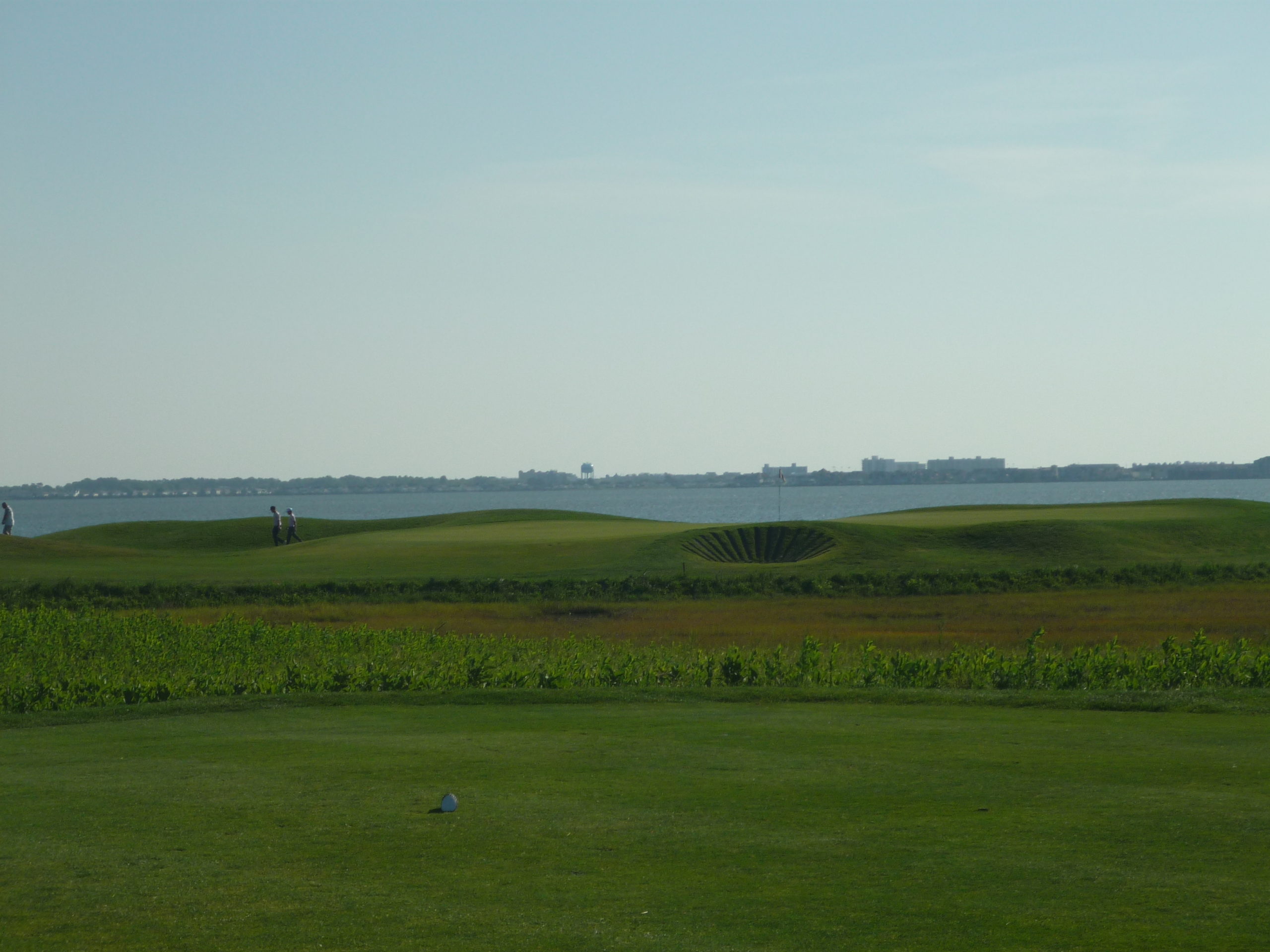
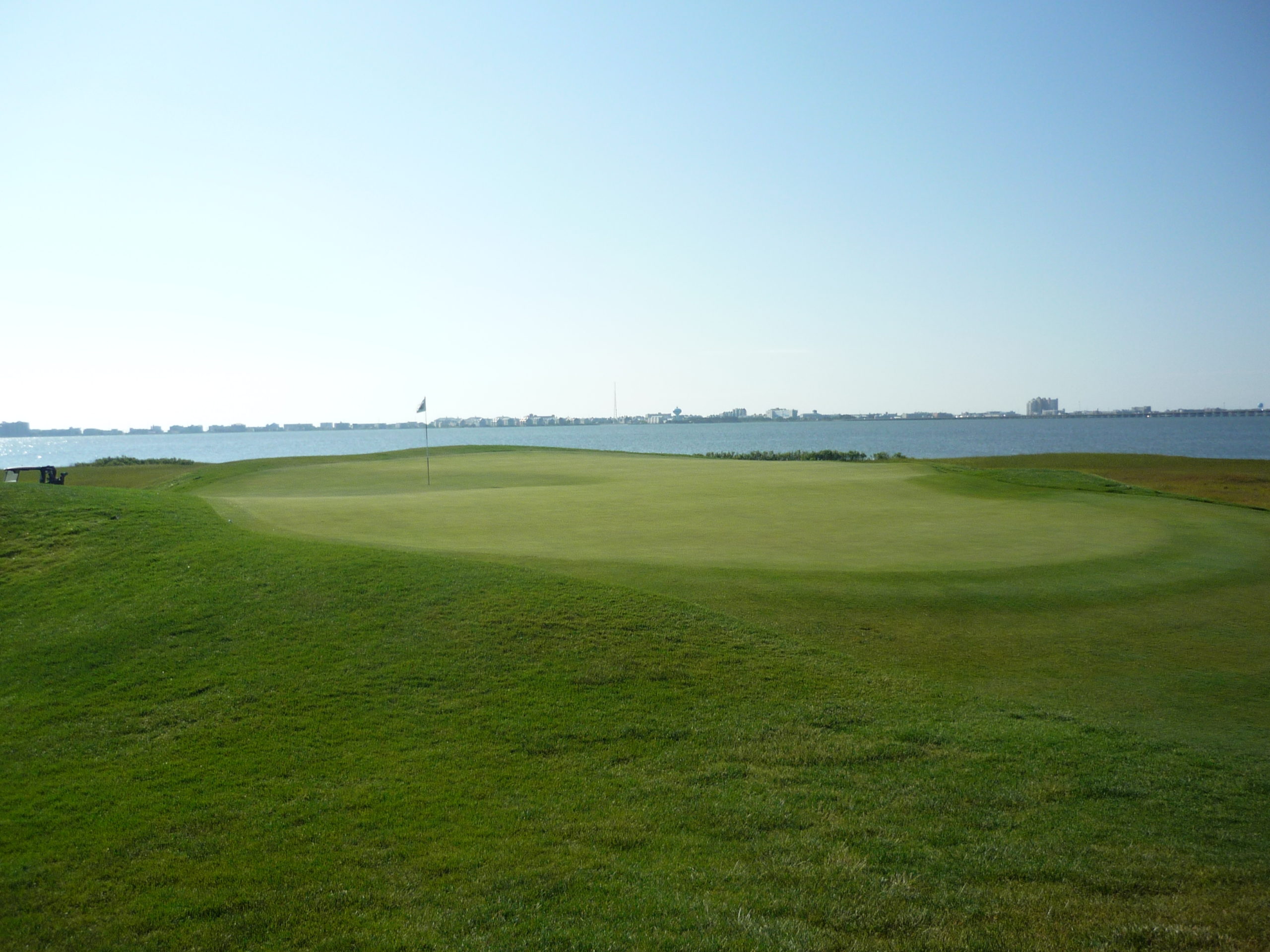
Hole 6 – 385 yards – Par 4
The flatness of this hole hides the bunker that crosses the fairway and the two up the left side. Be intentional when picking your target and don’t miss right!
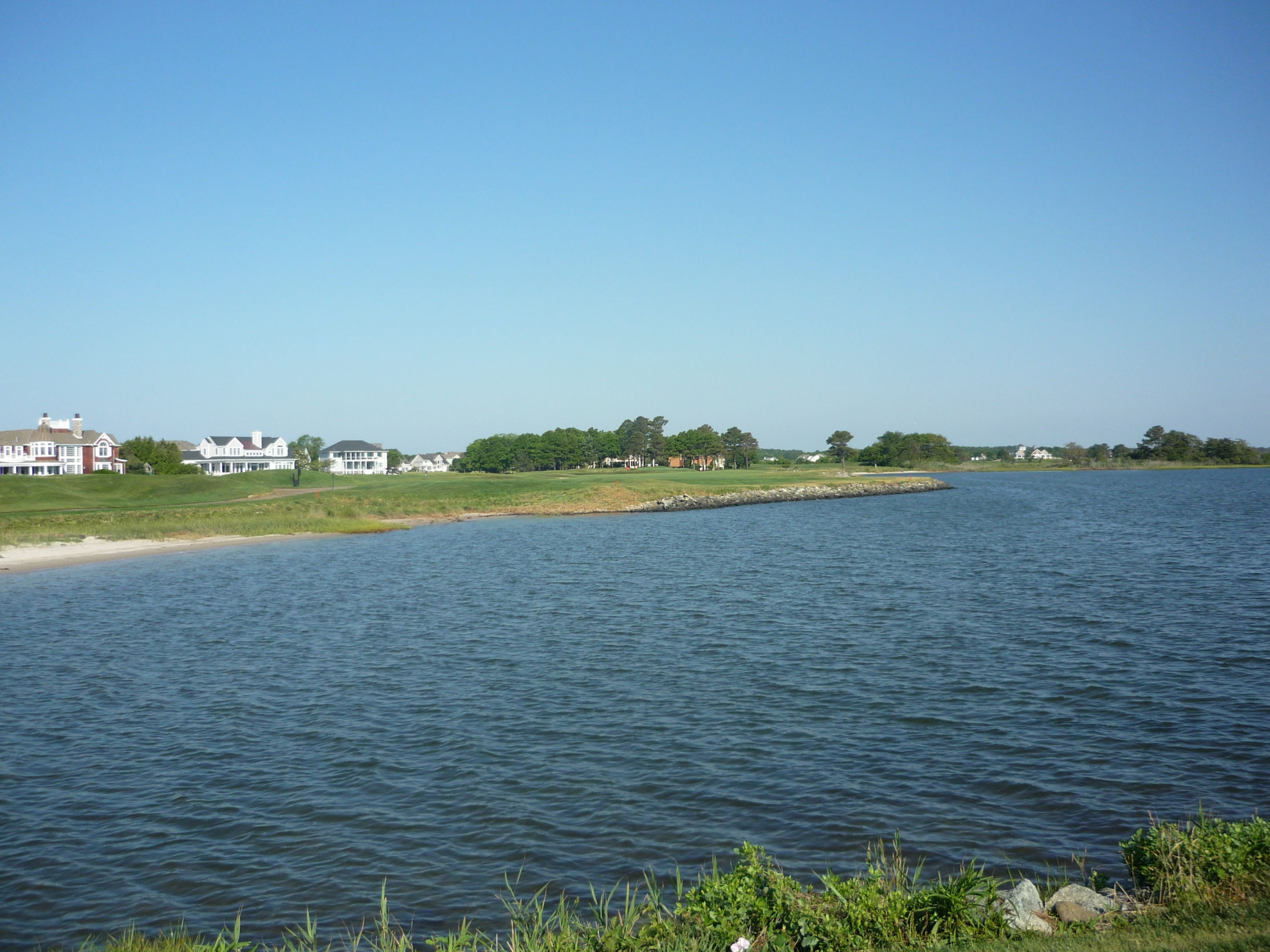
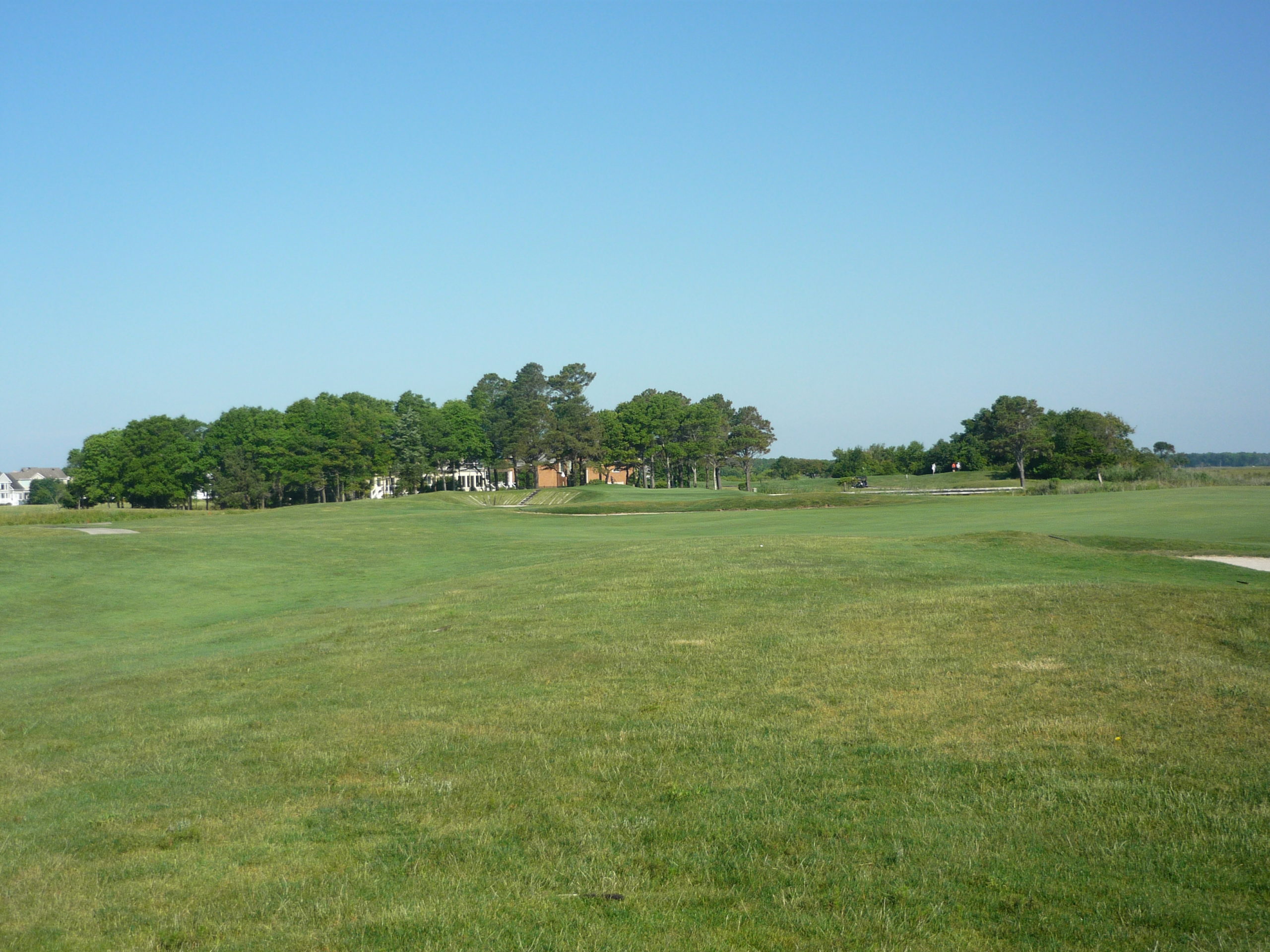
Stay out of the front left bunker at all costs. There is nothing but trouble down there.
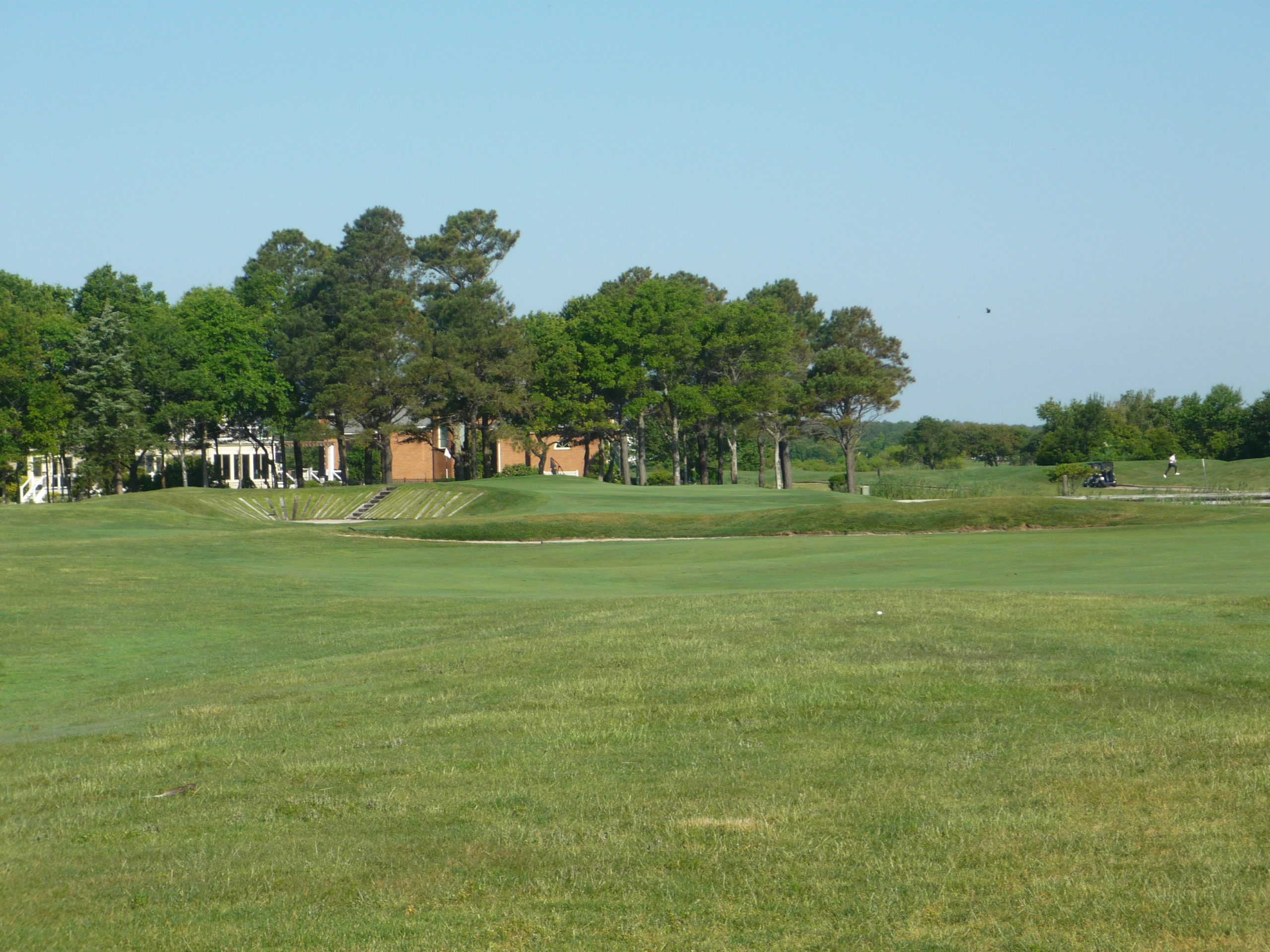

Hole 7 – 550 yards – Par 5
I didn’t get a photo of the tee shot here but it plays straightaway before the hole turns right and crosses this hazard. The green is guarded in front by two small bunkers.
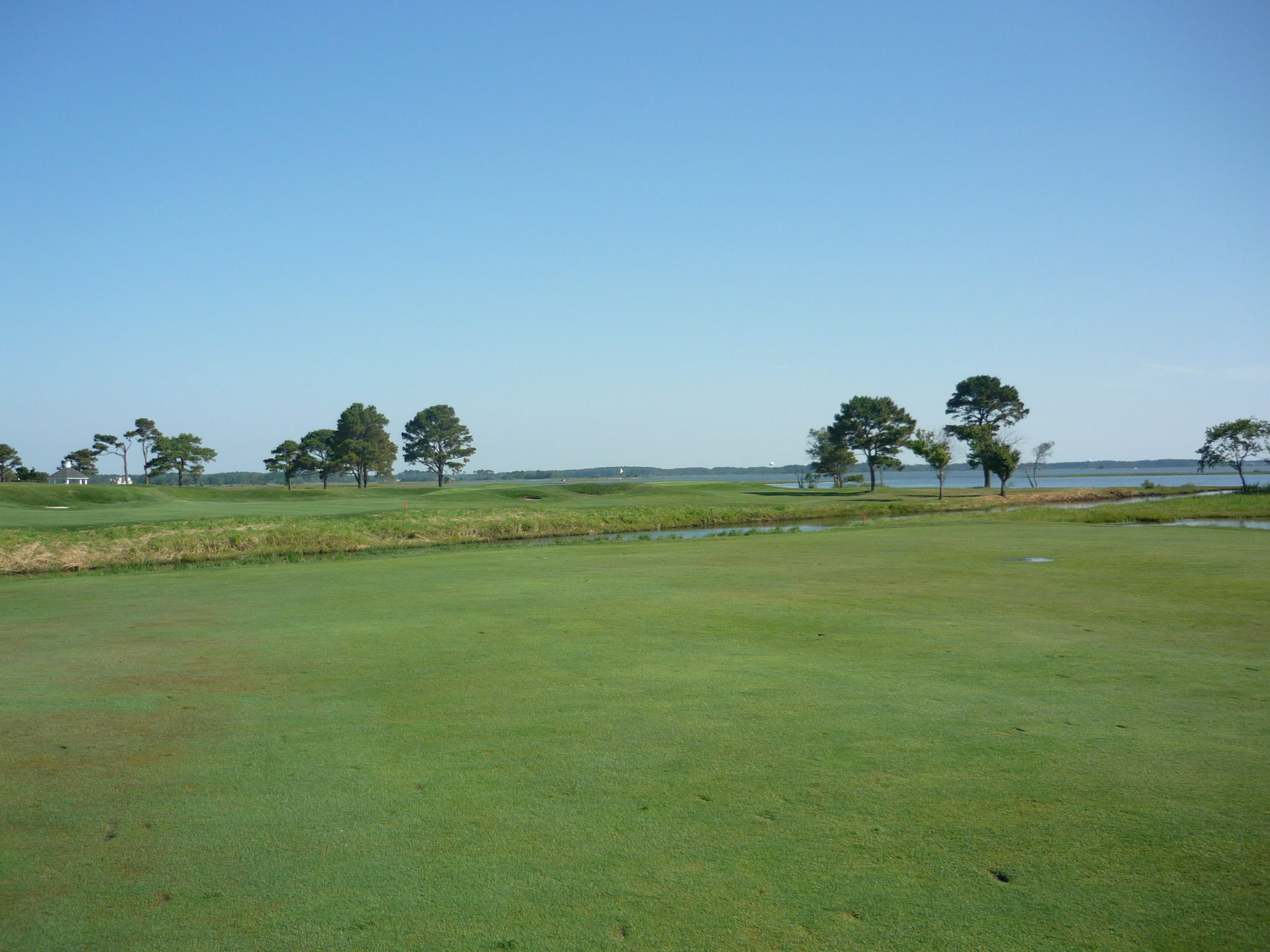
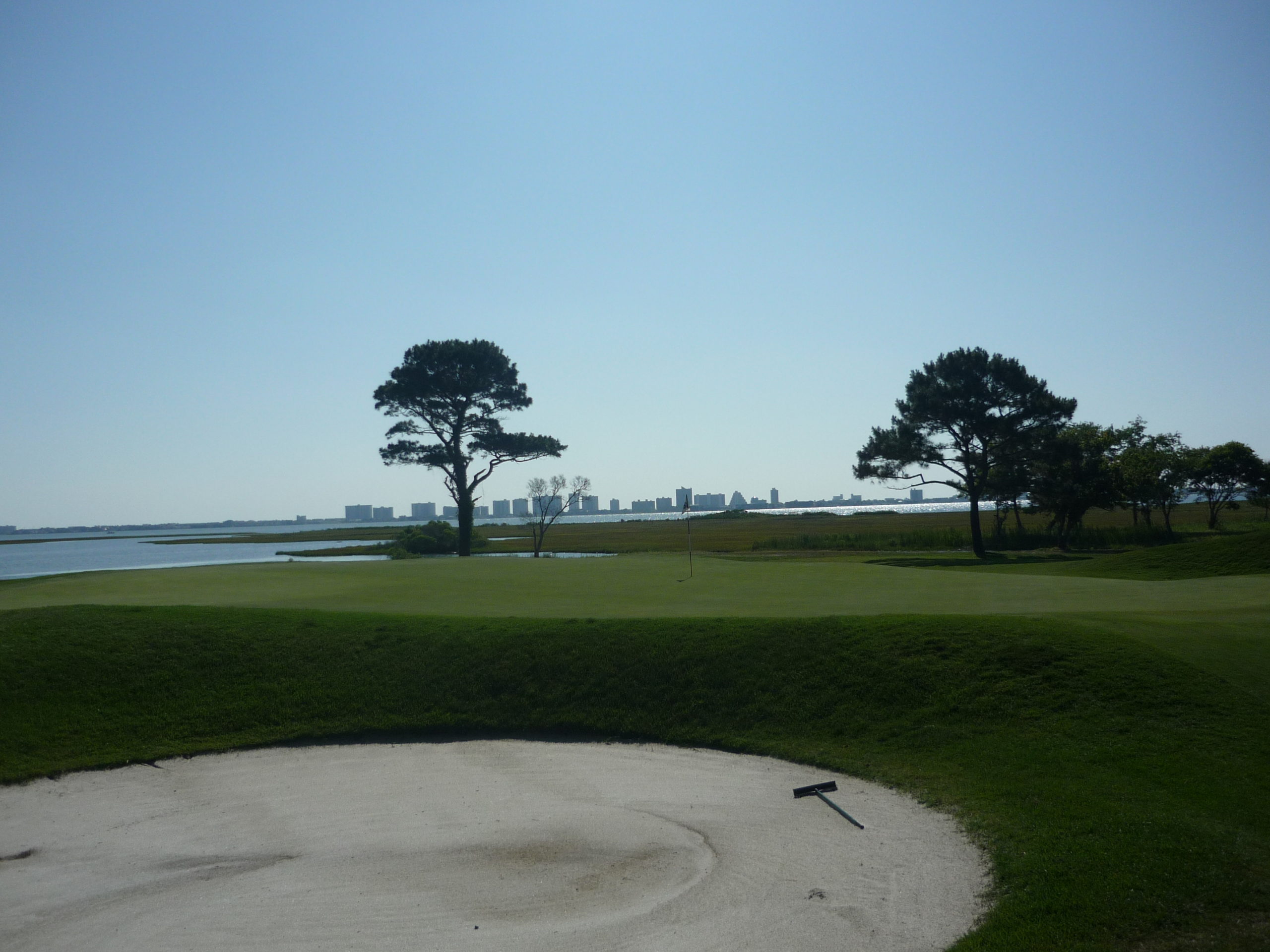
Hole 8 – 326 yards – Par 4
A massive bunker guards the entirety of the left side of this hole. At this distance, you could forego the driver and play for some accuracy.
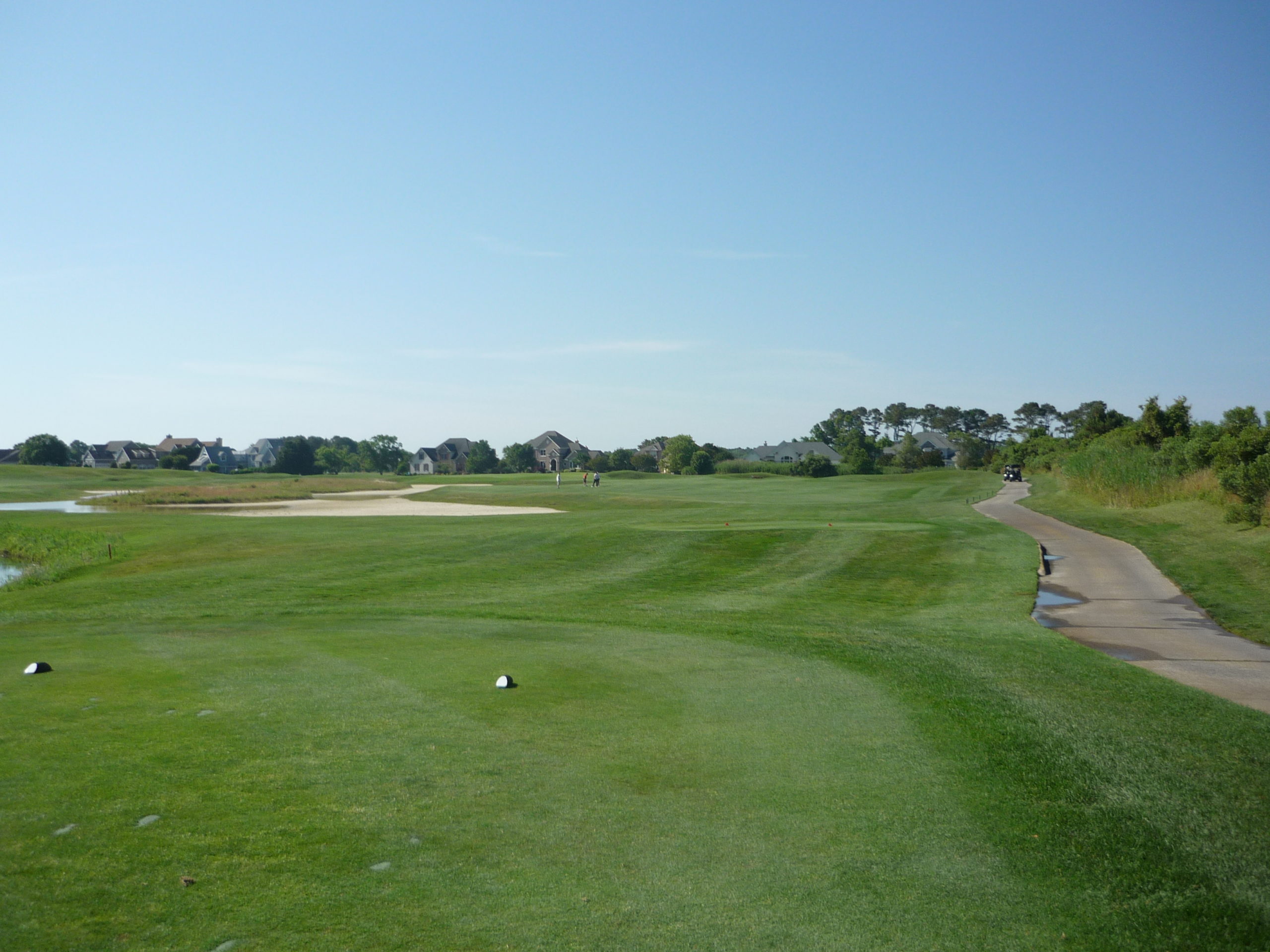
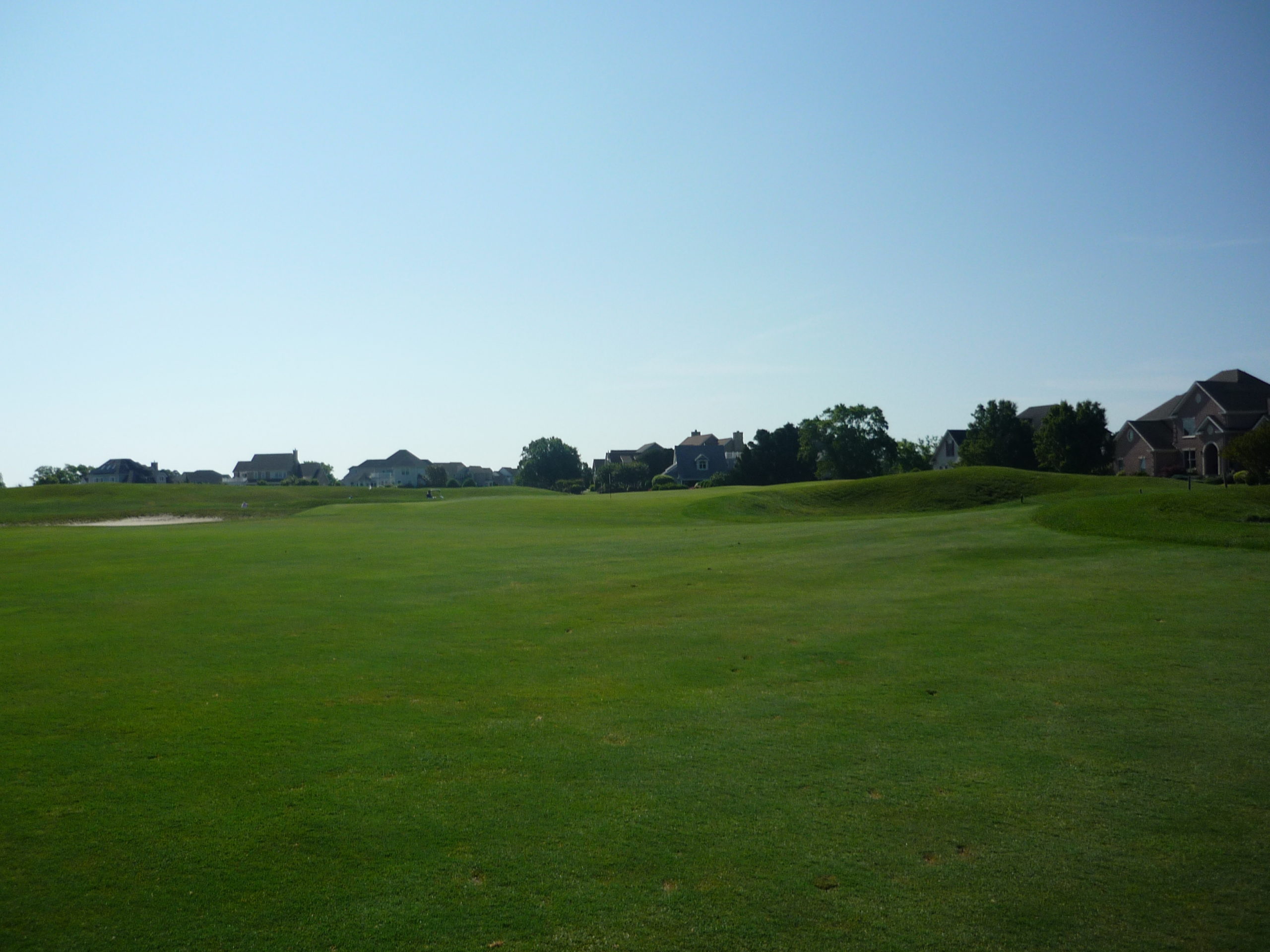
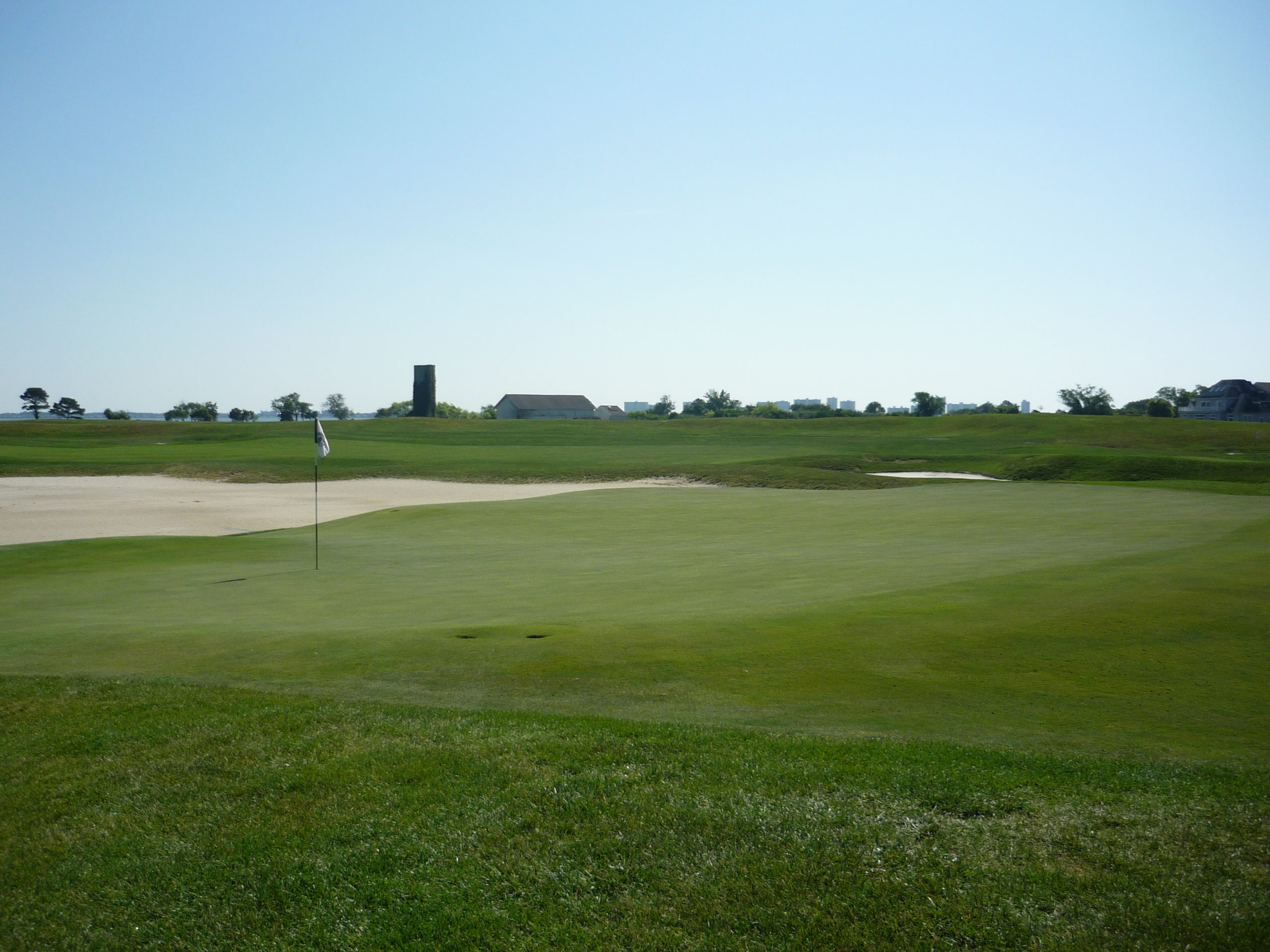
Hole 9 – 389 yards – Par 4
I mentioned the longest cart bridge in America and here it is. You can see it when you pull up but the sign below confirms it.
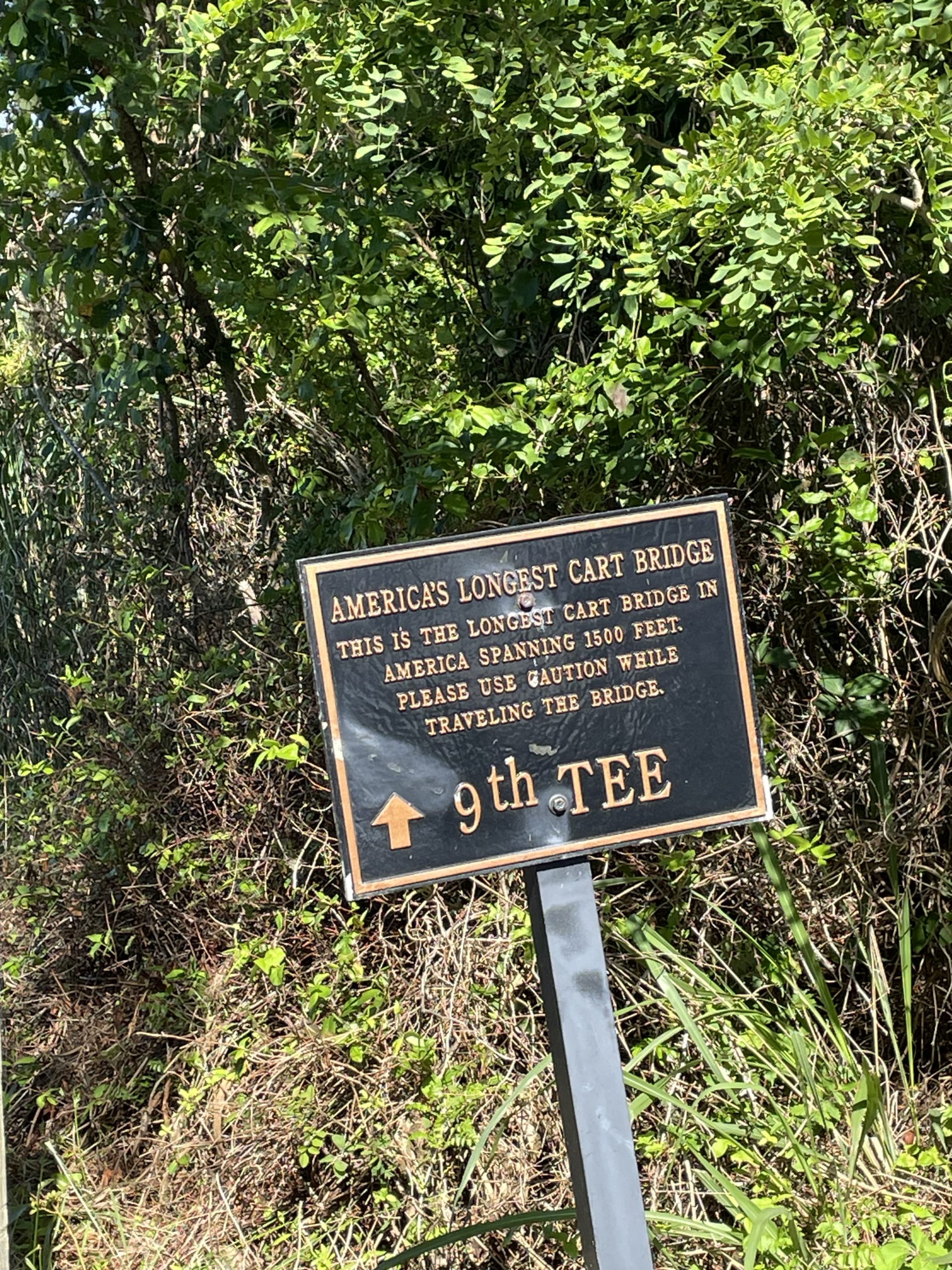
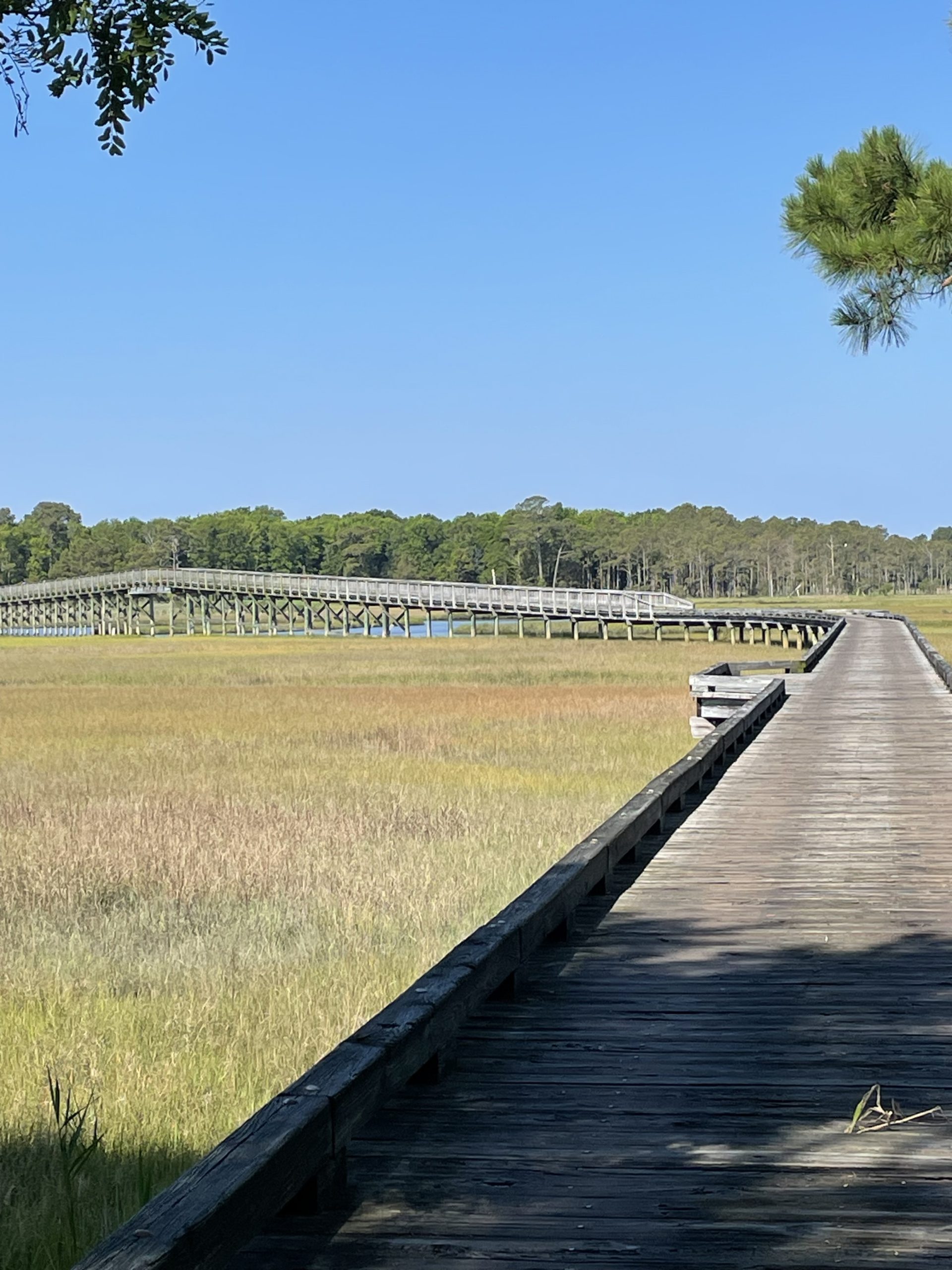
For this stretch of the course, we play back into the woods. Trees pinch each side of this hole and demand more accuracy than the previous holes.
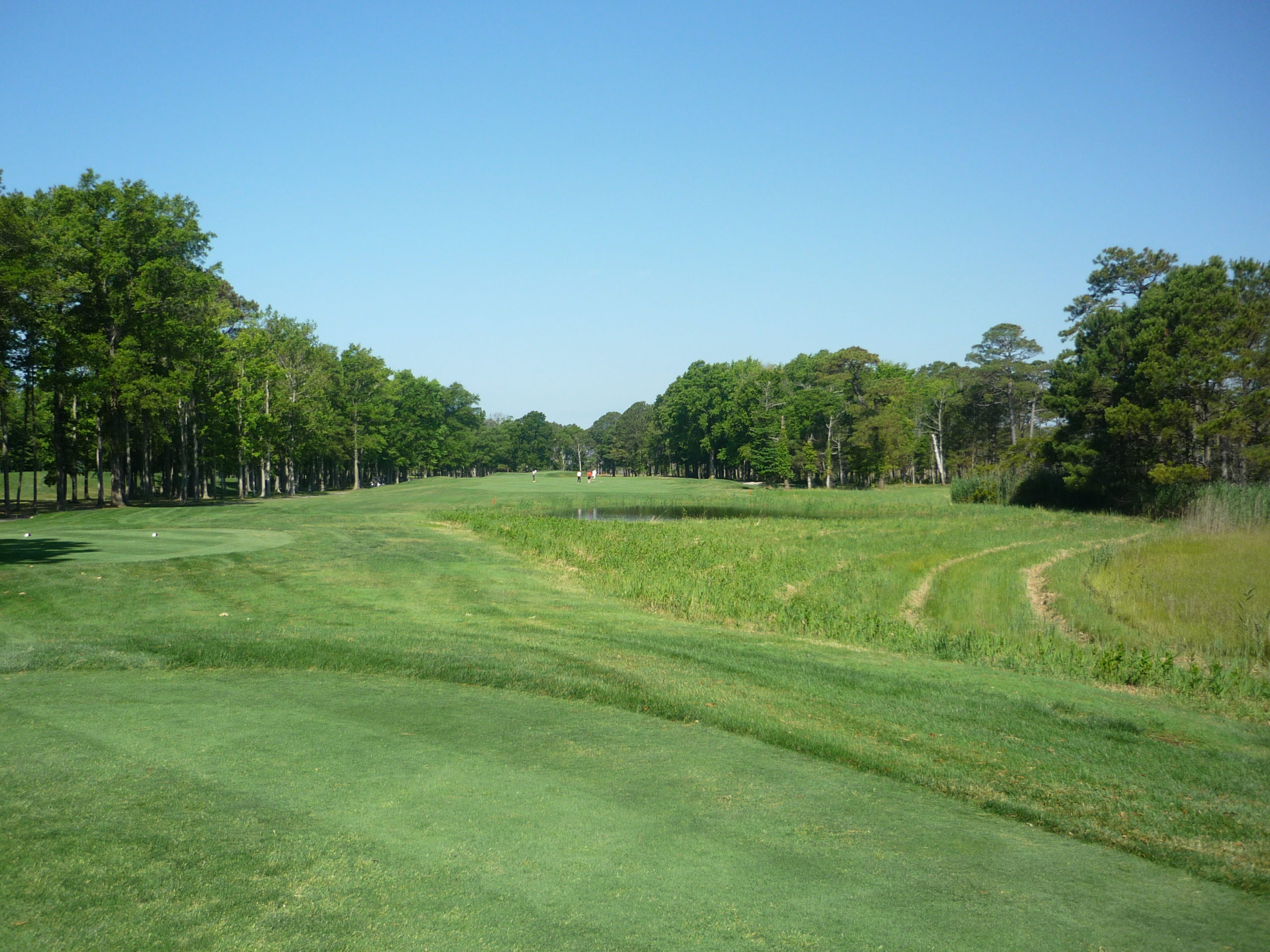
We also have a perched green which we haven’t really seen to this point.
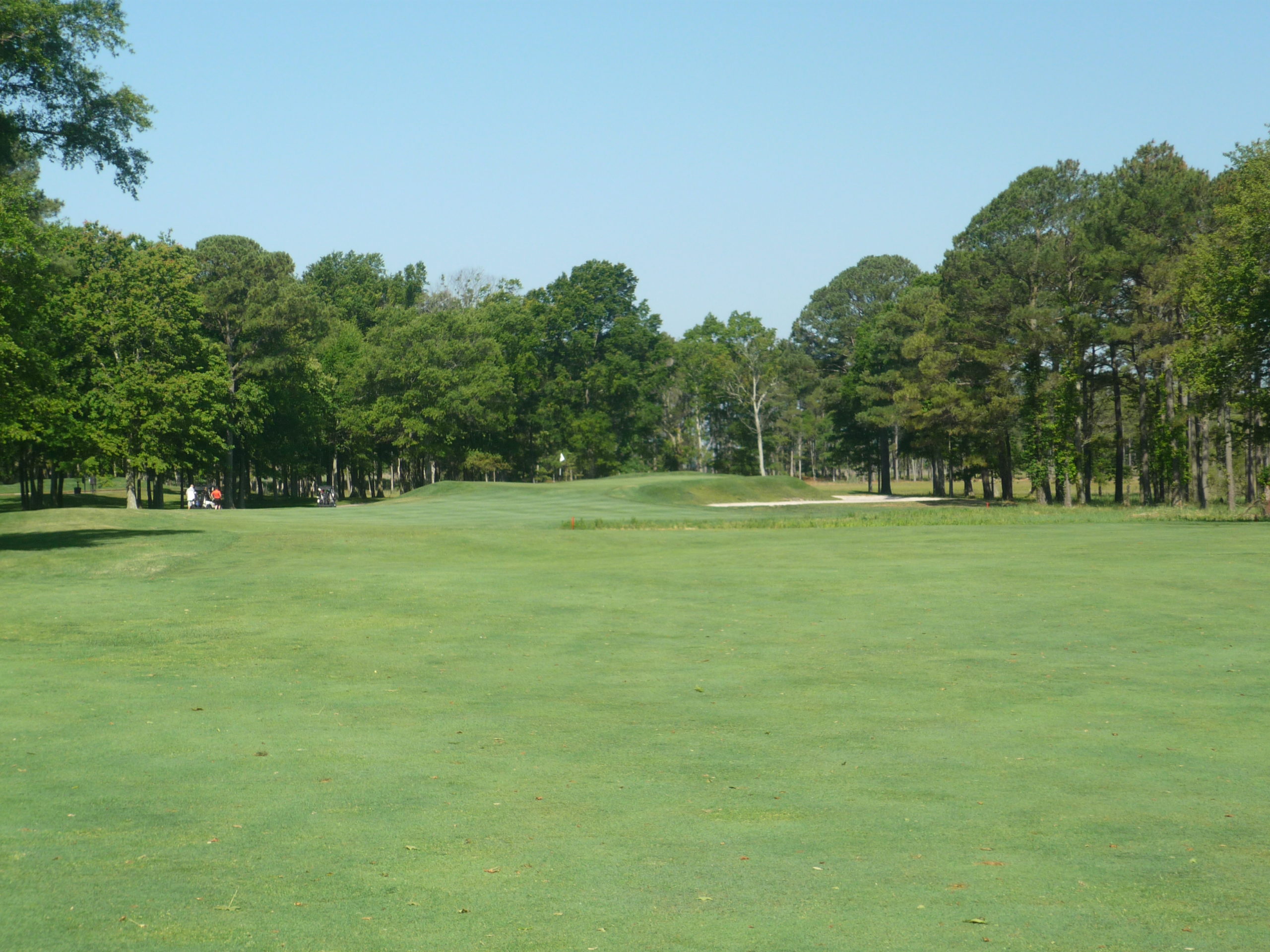
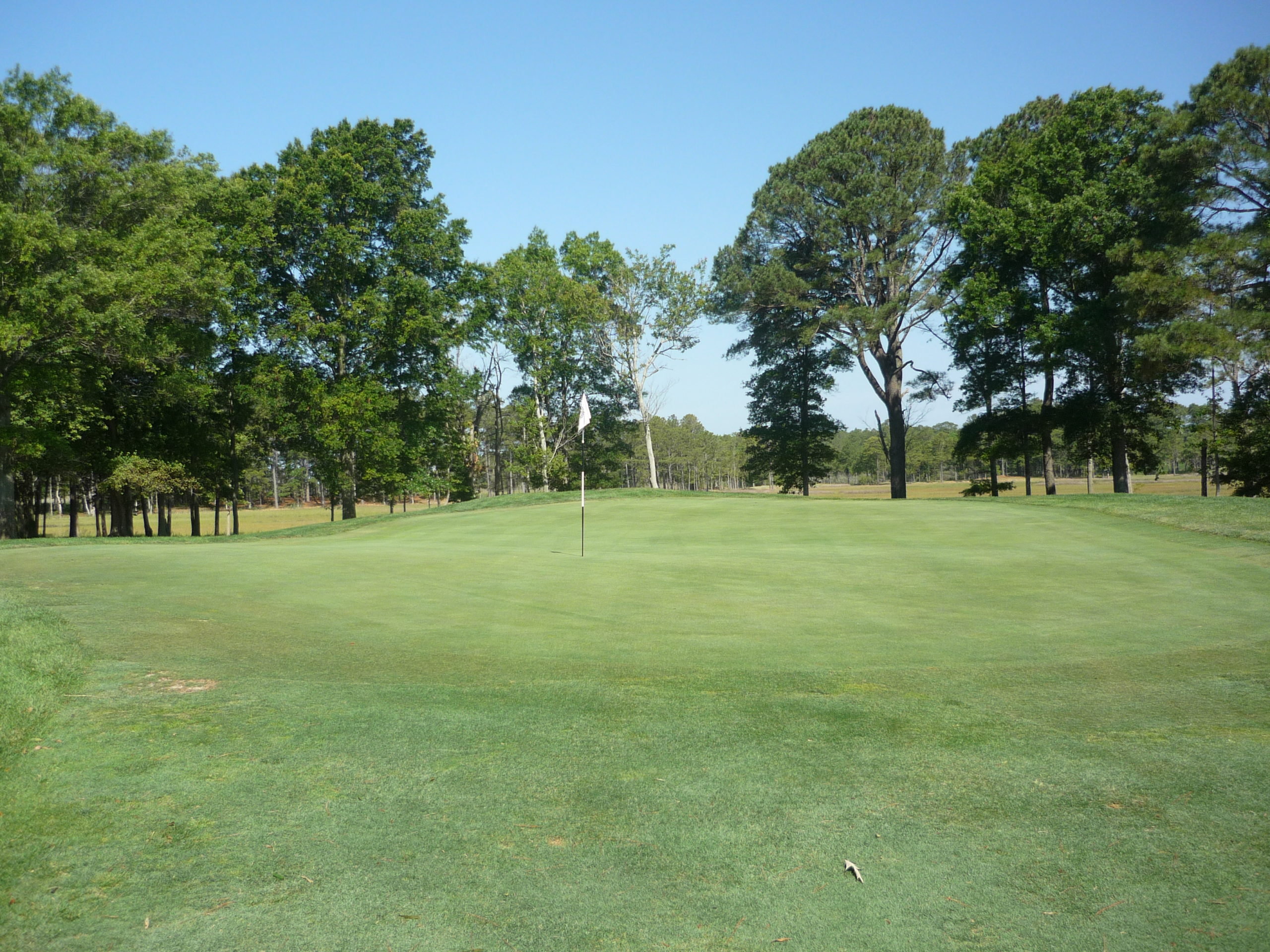
Hole 10 – 296 yards – Par 4
For longer hitters that can draw the ball, this green is reachable. Two bunkers on the right side of the green will catch a lot of people trying for the green.
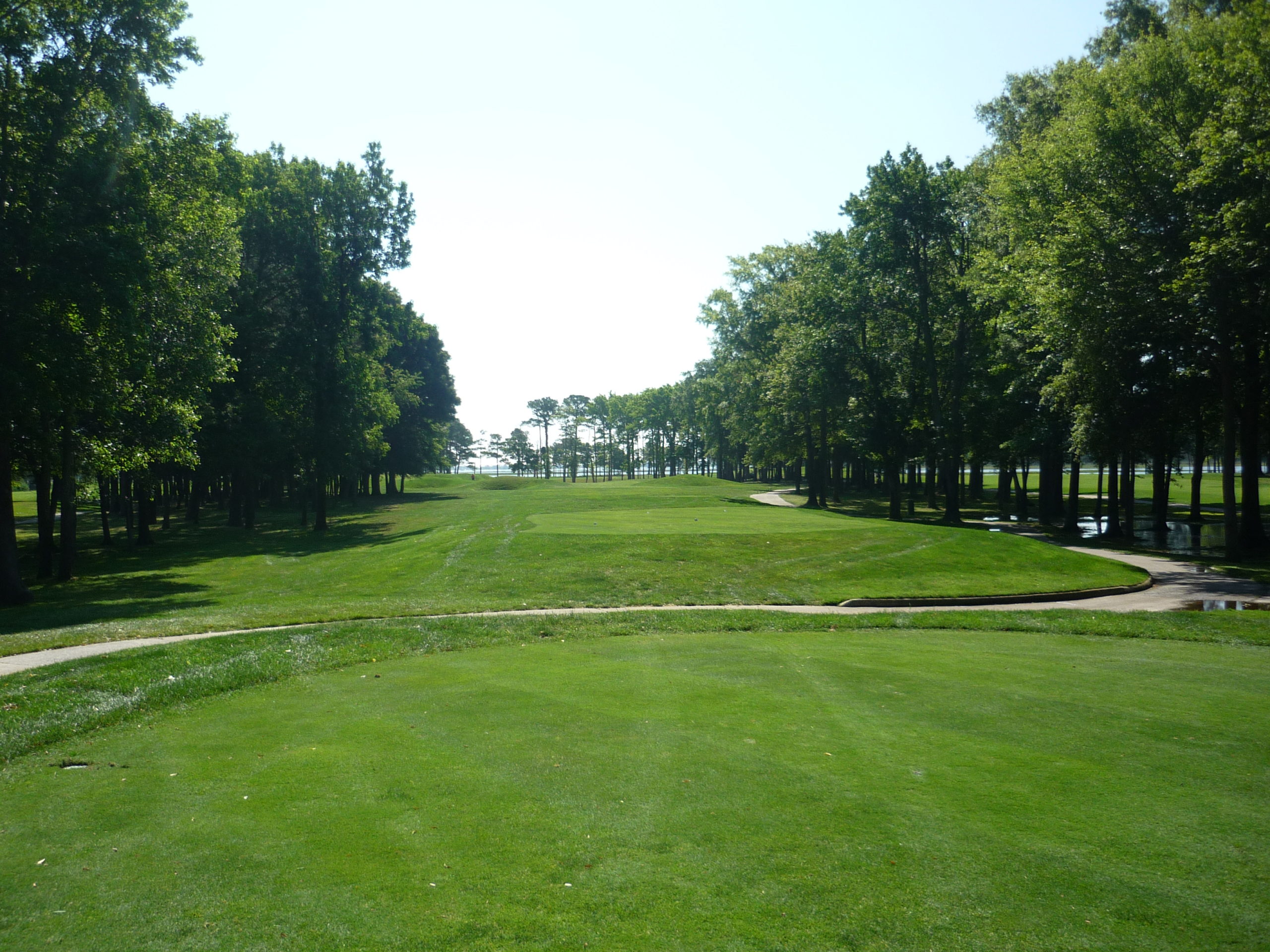
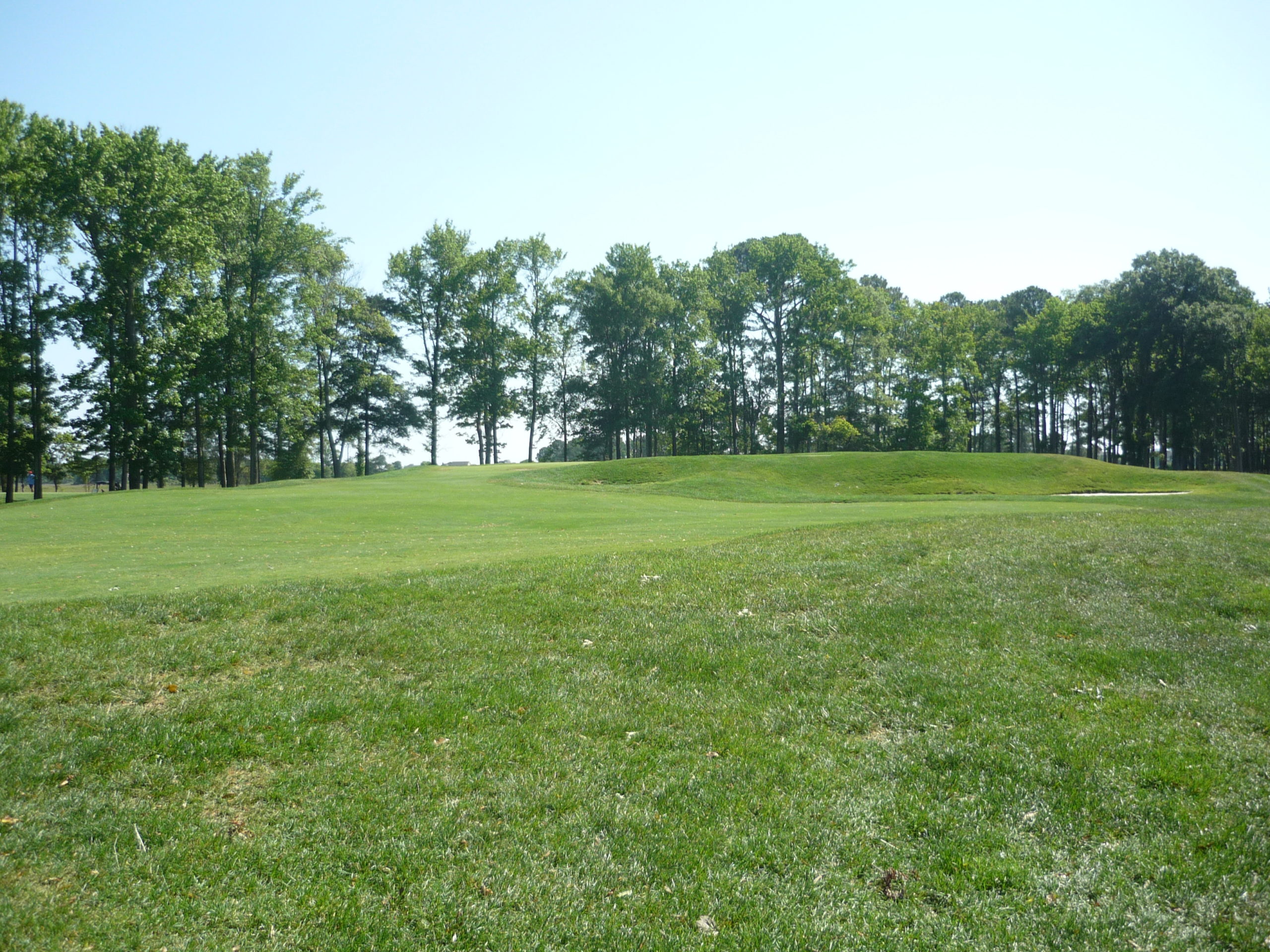
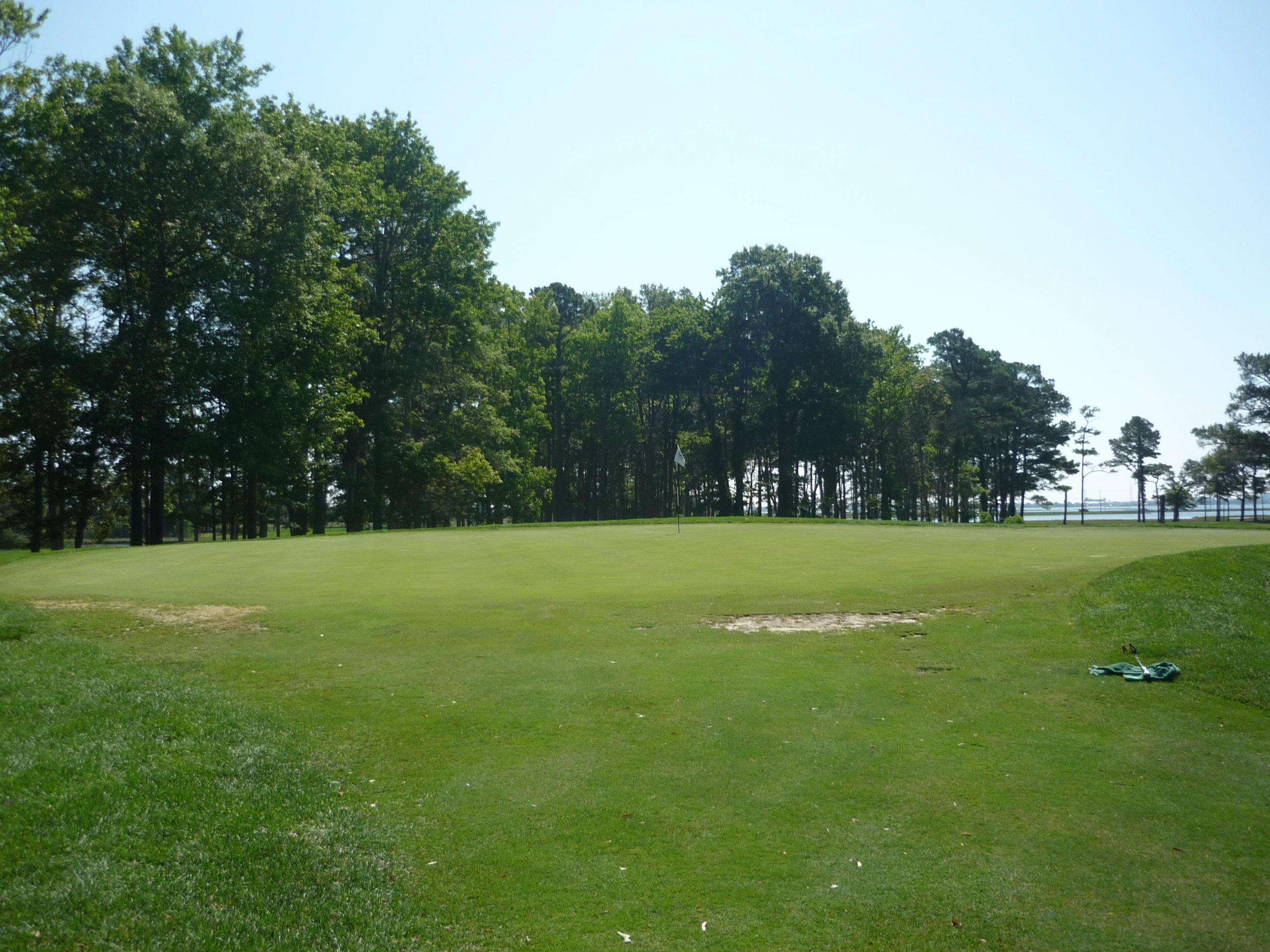
The view below is from behind the green looking back towards the tee.
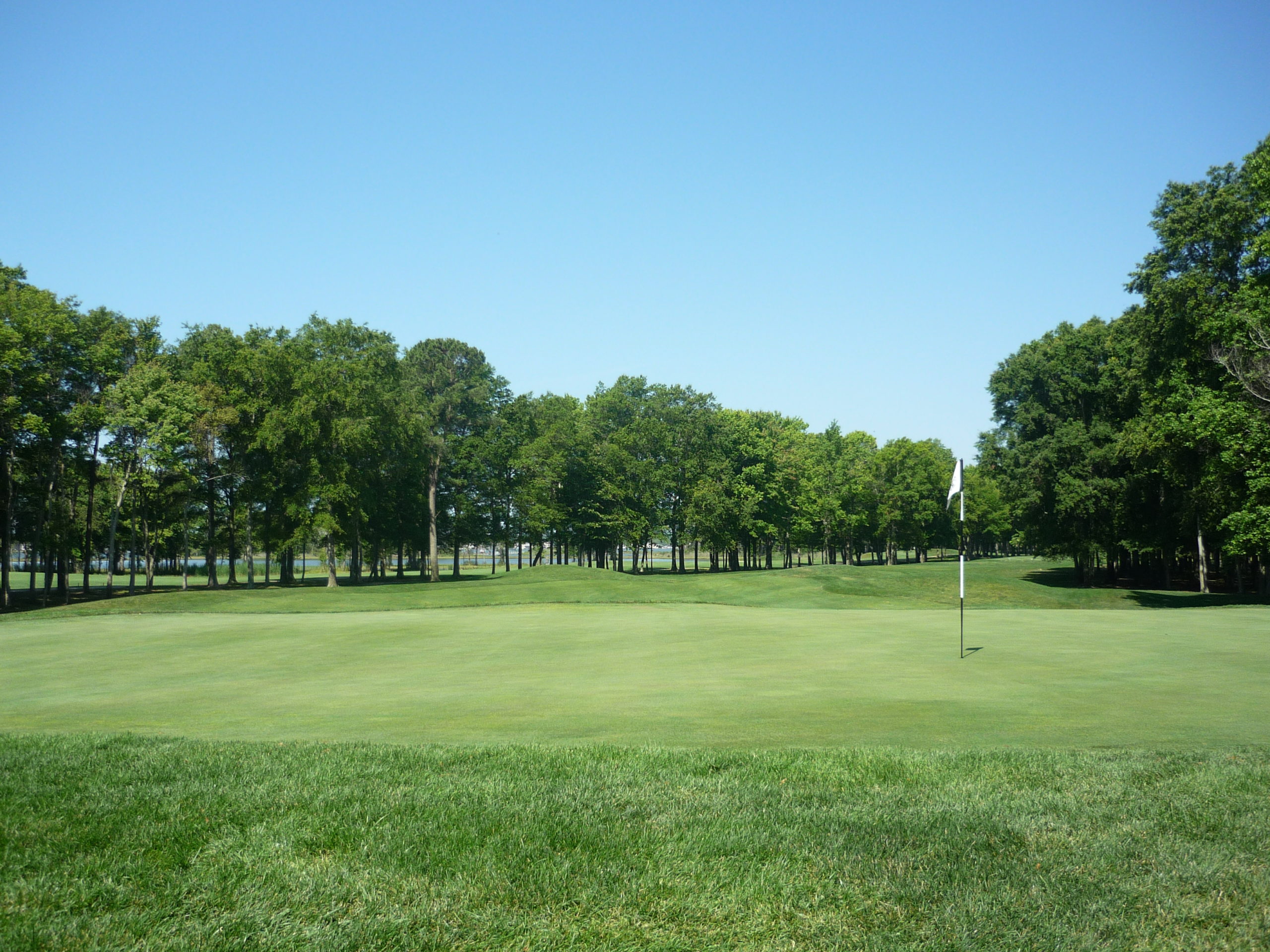
Hole 11 – 152 yards – Par 3
The green on this par three is wider in the back than the front so if the pin is back you can be a bit more aggressive. Misses in either direction will end up well below the putting surface.
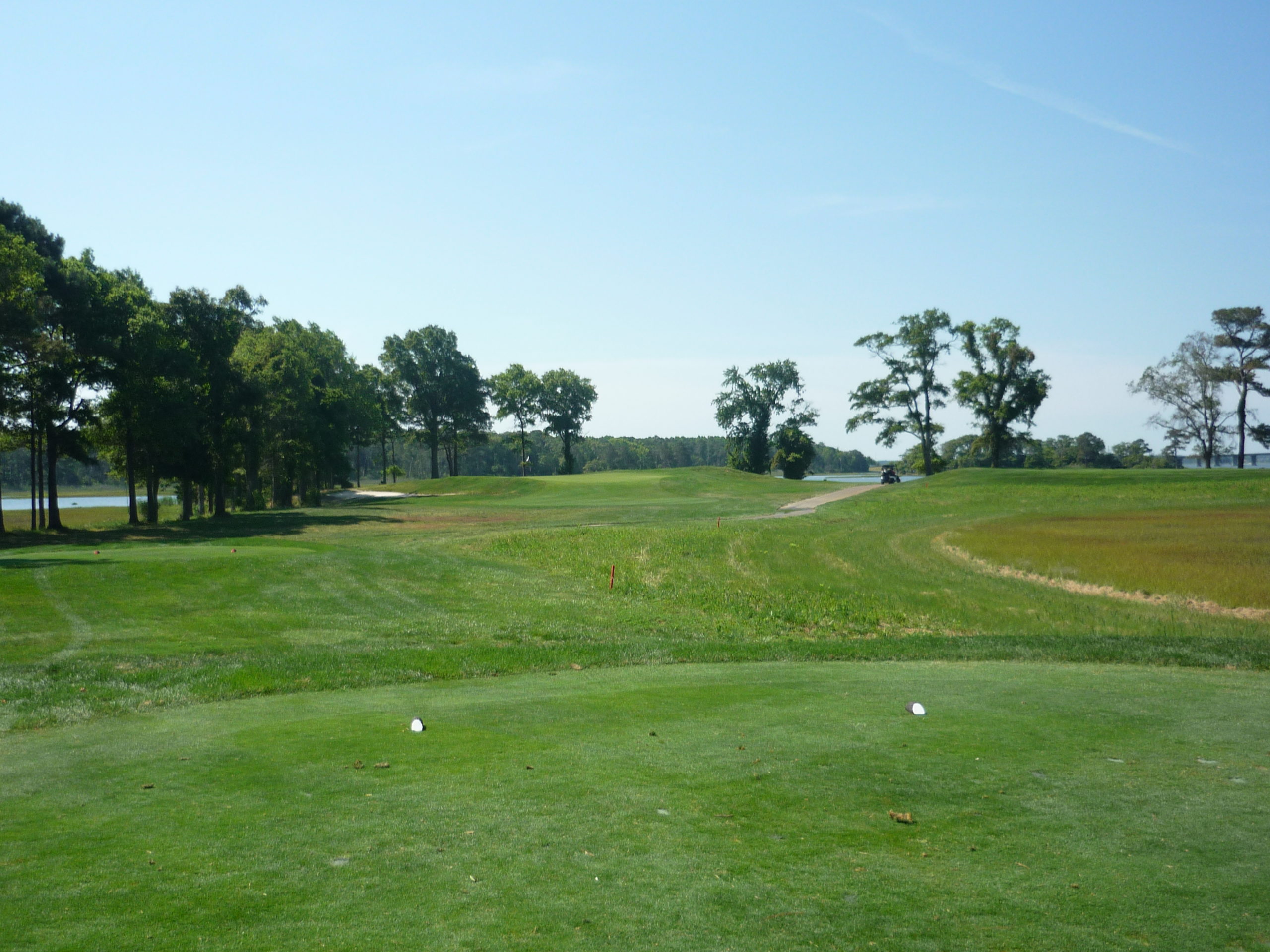
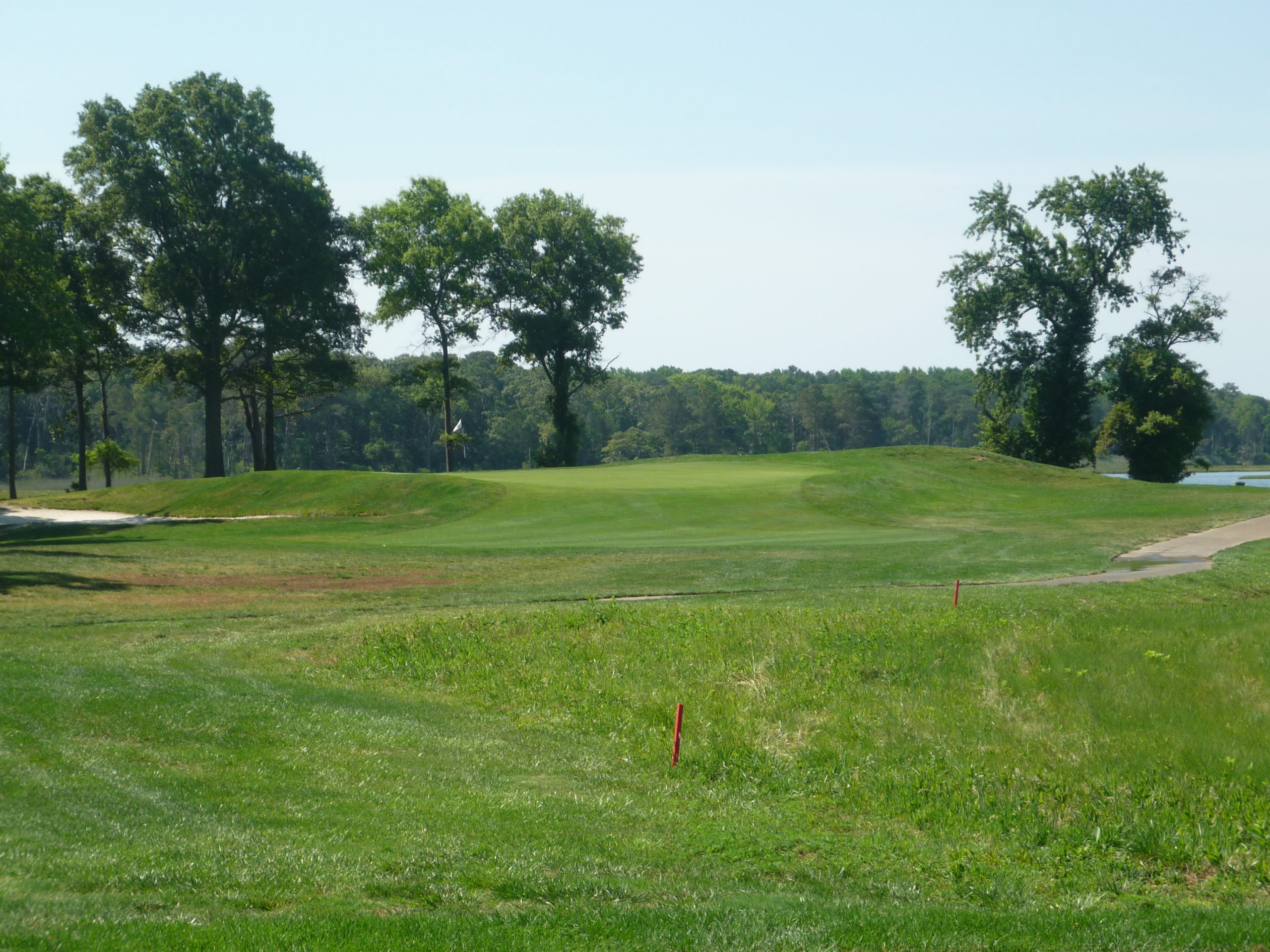
Hole 12 – 531 yards – Par 5
The water asserts itself for most of this hole. The carry off the tee isn’t that long but the hazard cuts back in on the left side. Your first two shots will need to be accurate to stay out of trouble.
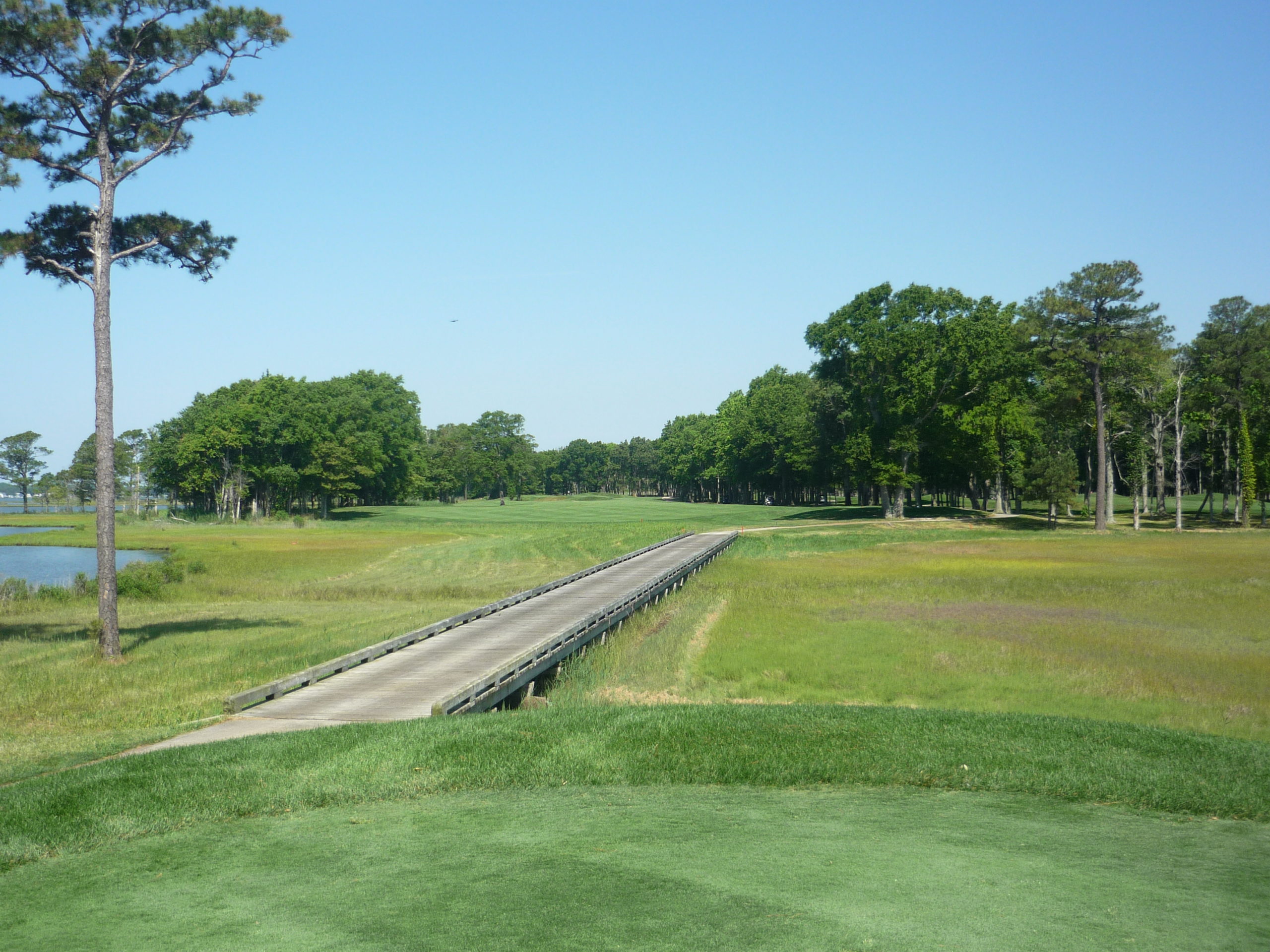
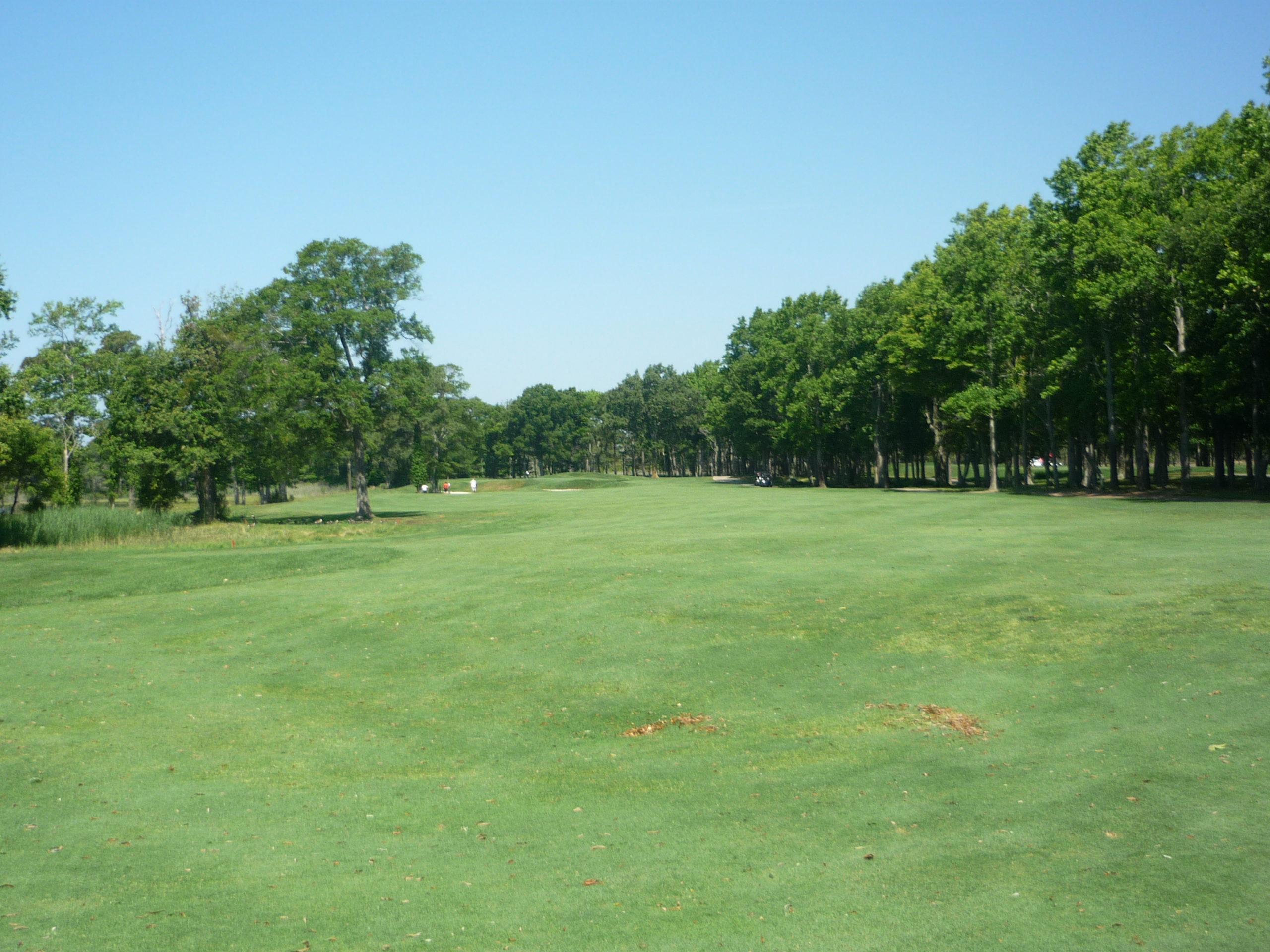
Due to the topography, most of the green is hidden from view. What you can’t see is a narrow green with a kicker in the front section.
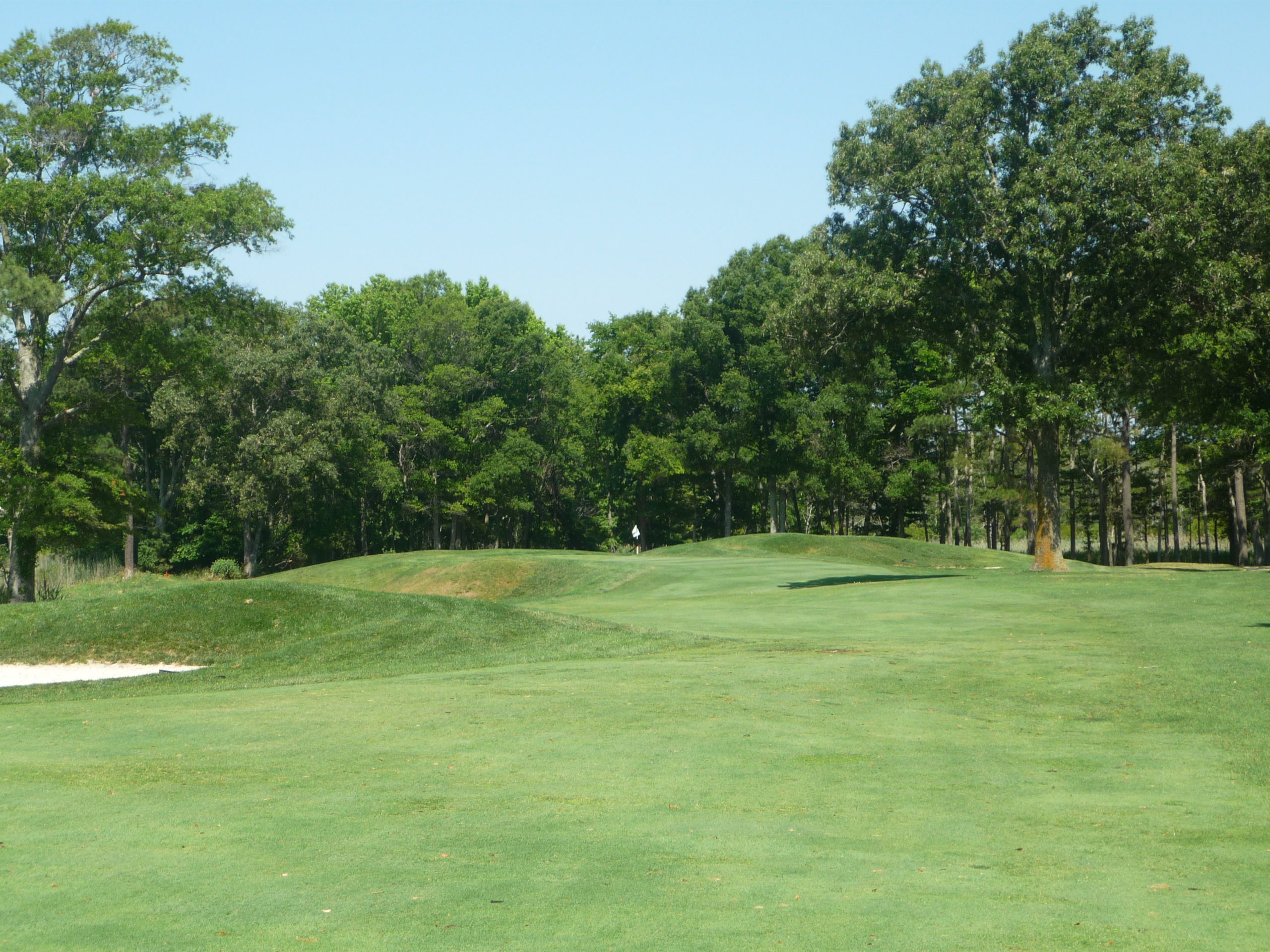
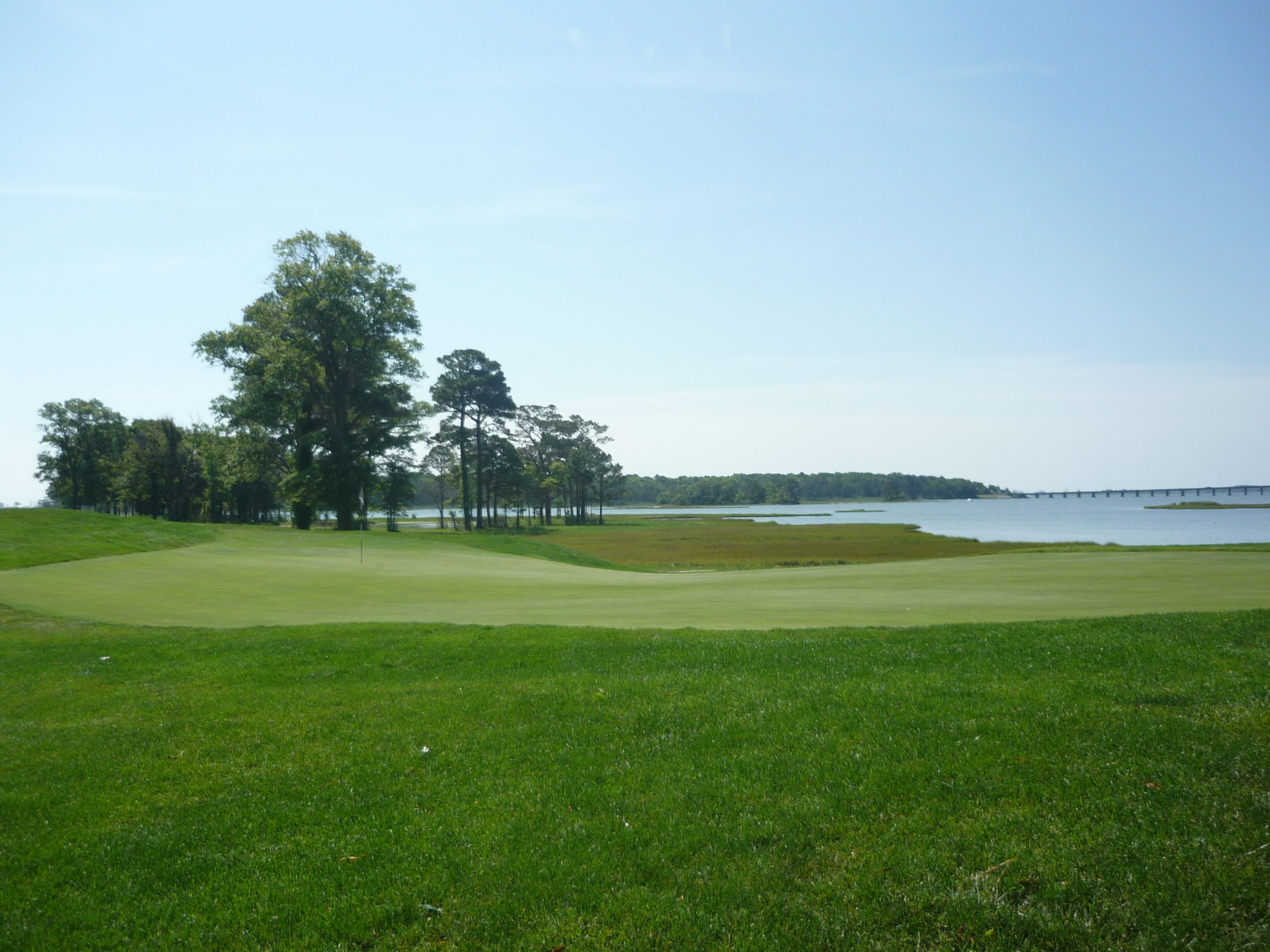
Hole 13 – 161 yards – Par 3
More railroad ties surround the large front bunker here. Don’t get too intimidated though because the green is a large target.
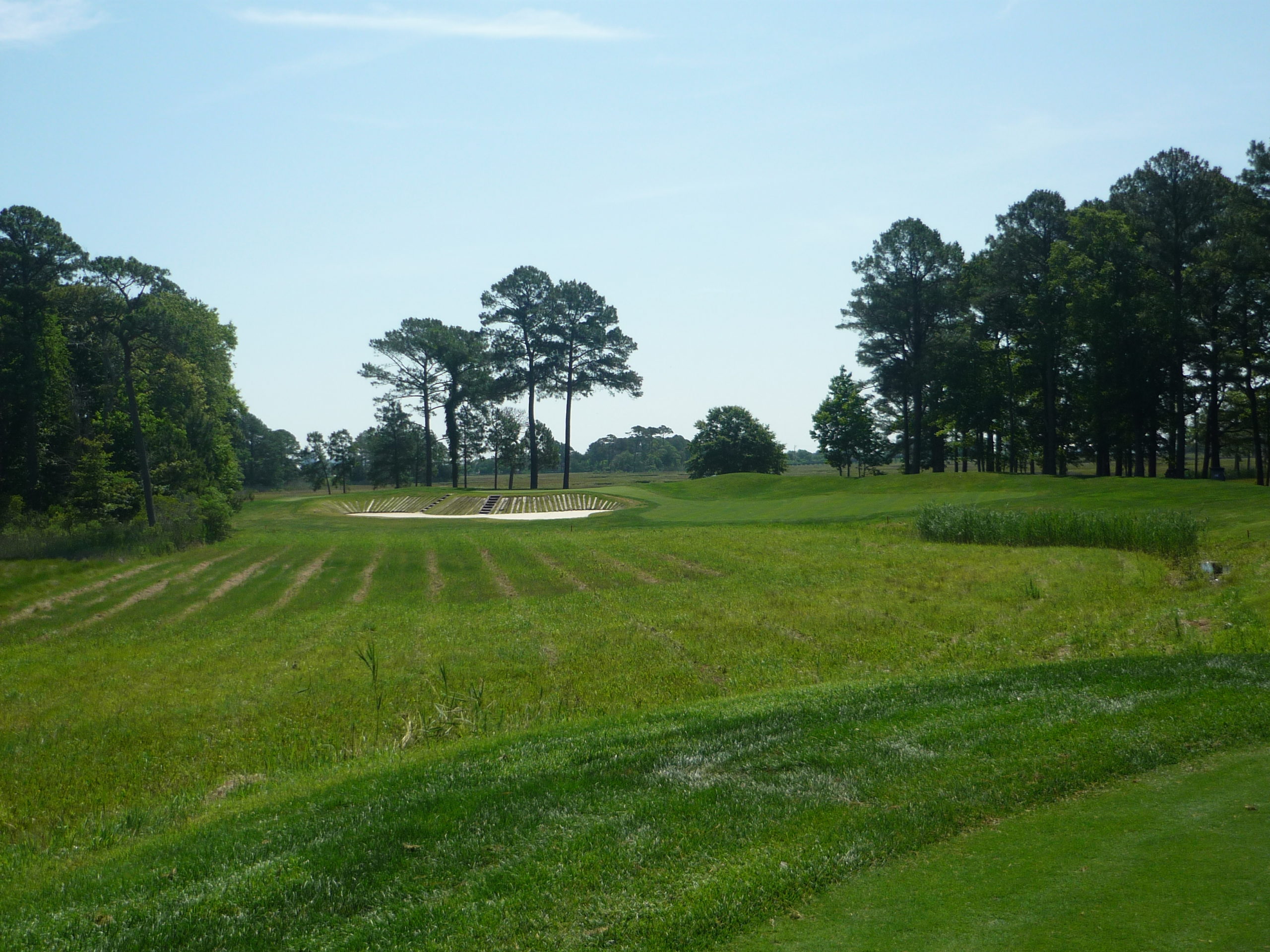
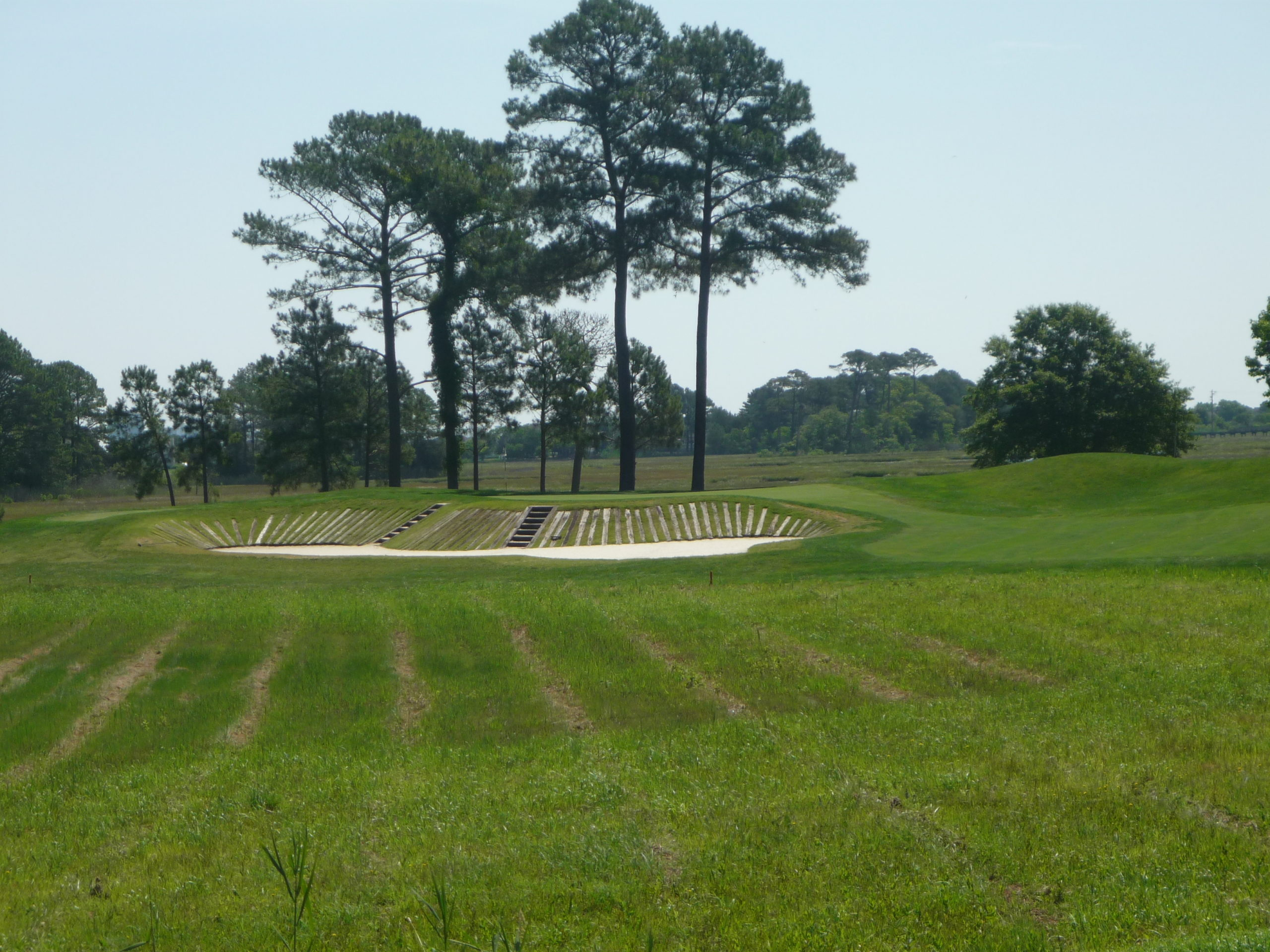
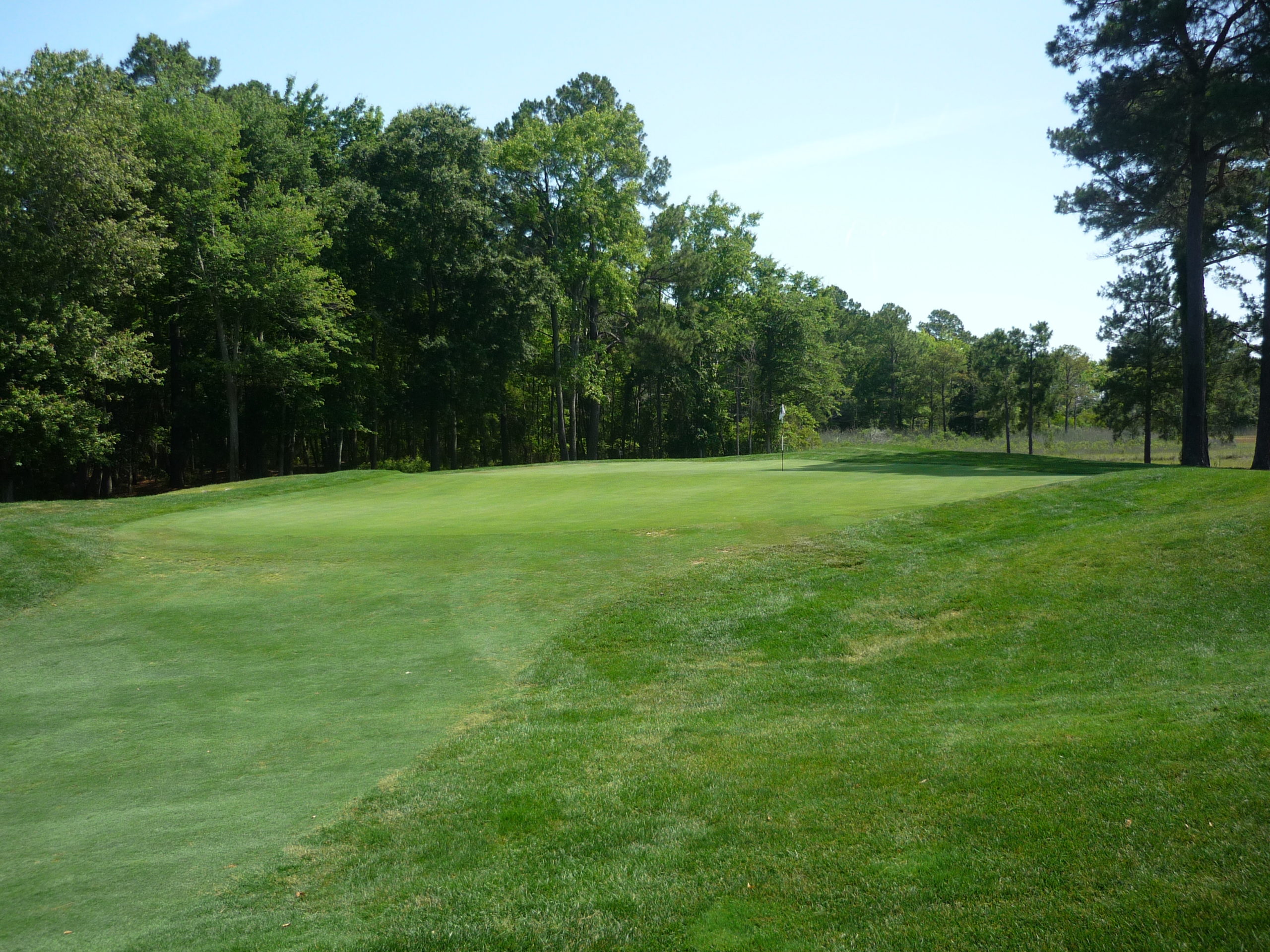
Hole 14 – 392 yards – Par 4
We’re back out of the trees and the fairway predictably widens. Other than that, this hole is pretty straightforward.
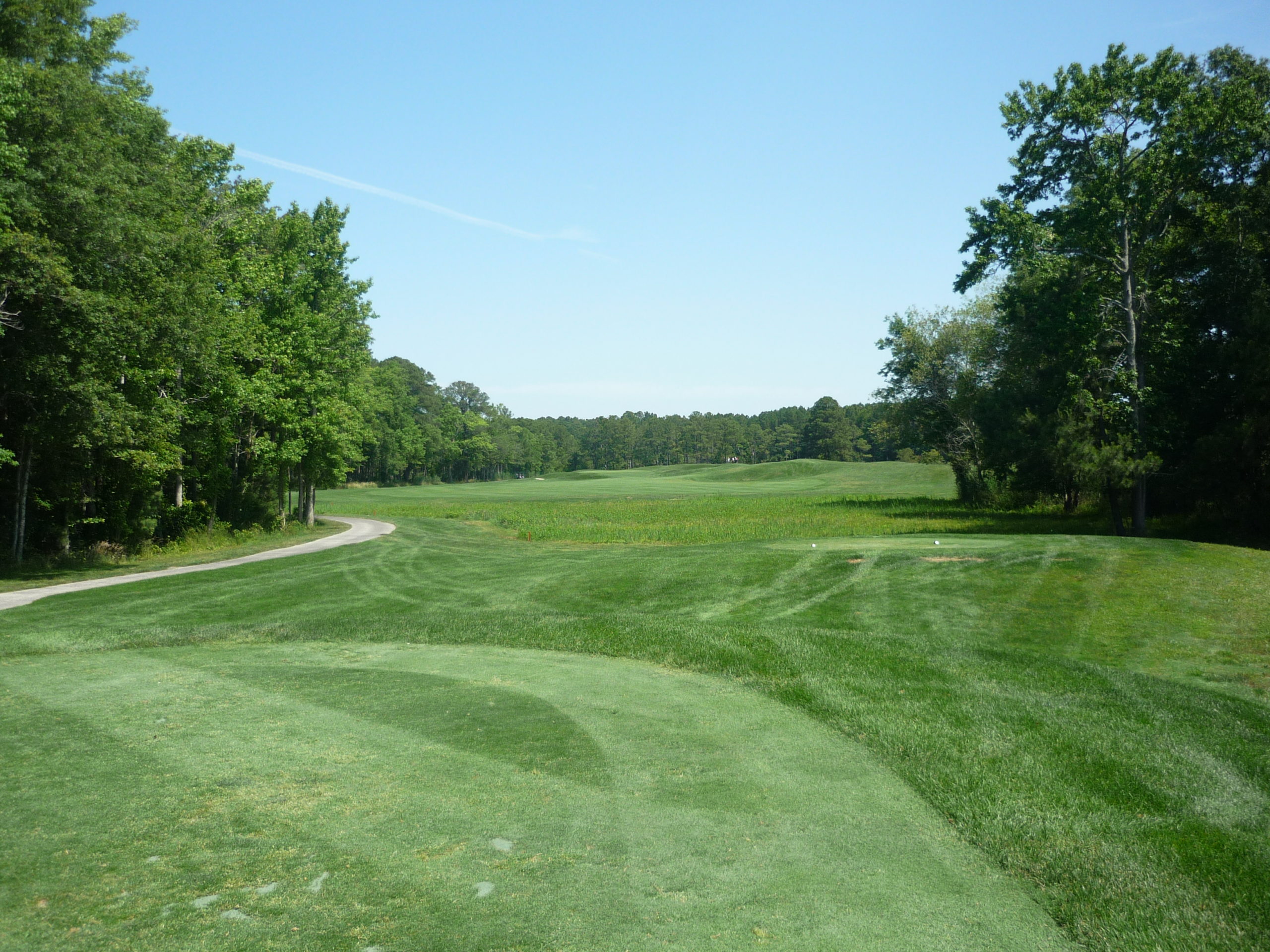
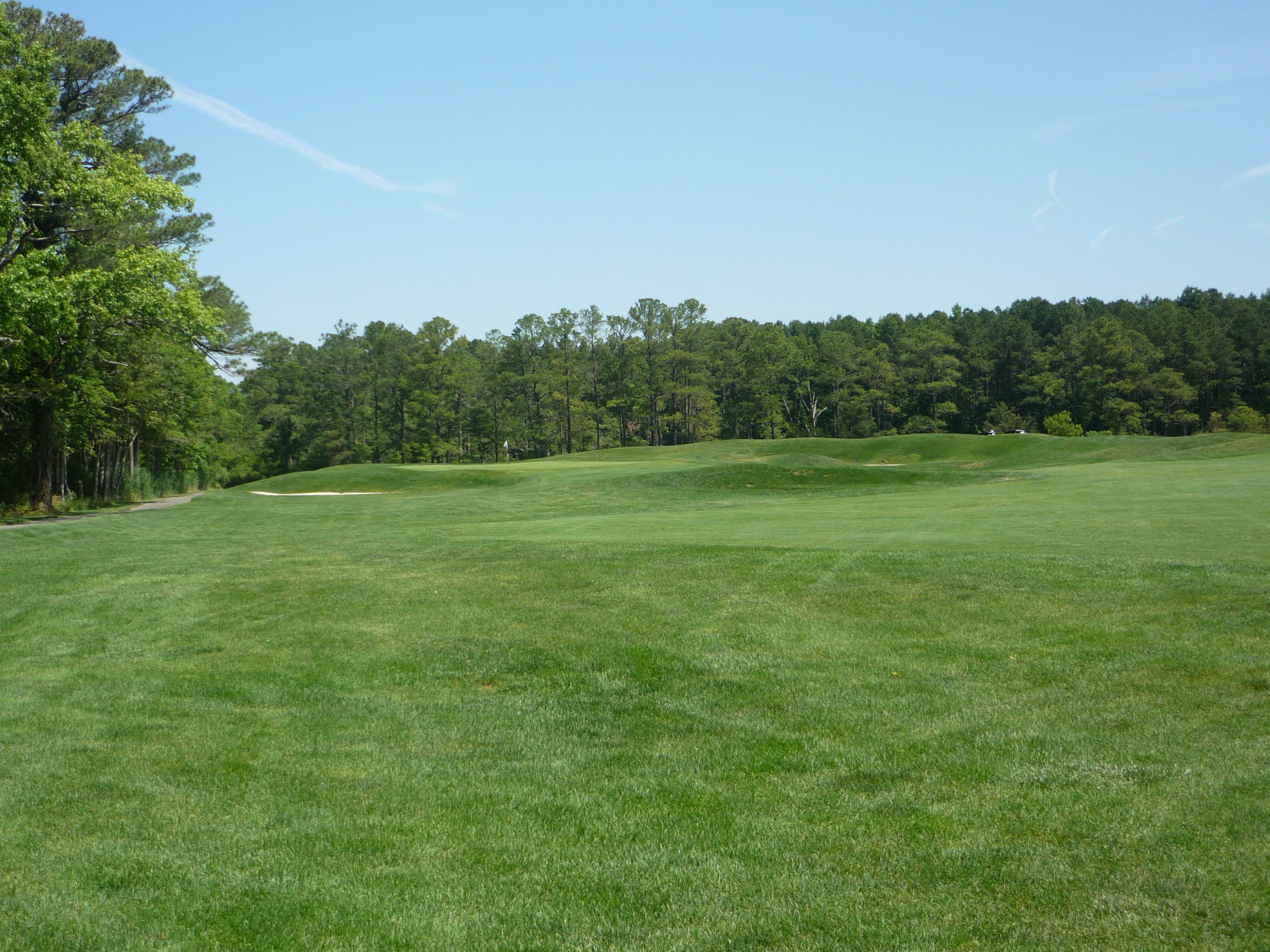
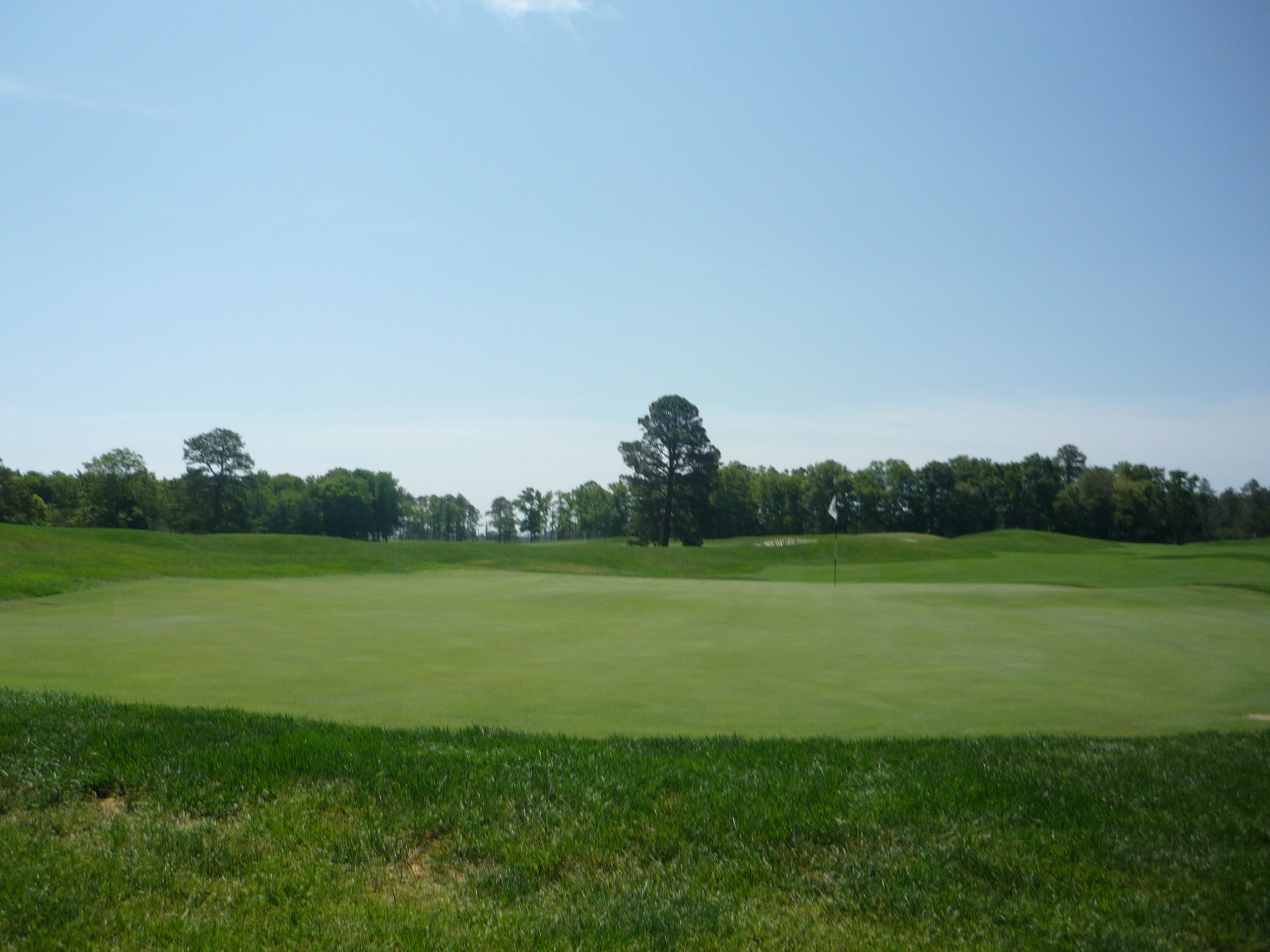
Hole 15 – 390 yards – Par 4
The water cuts in on the left side of this dogleg left and must be accounted for on the drive.
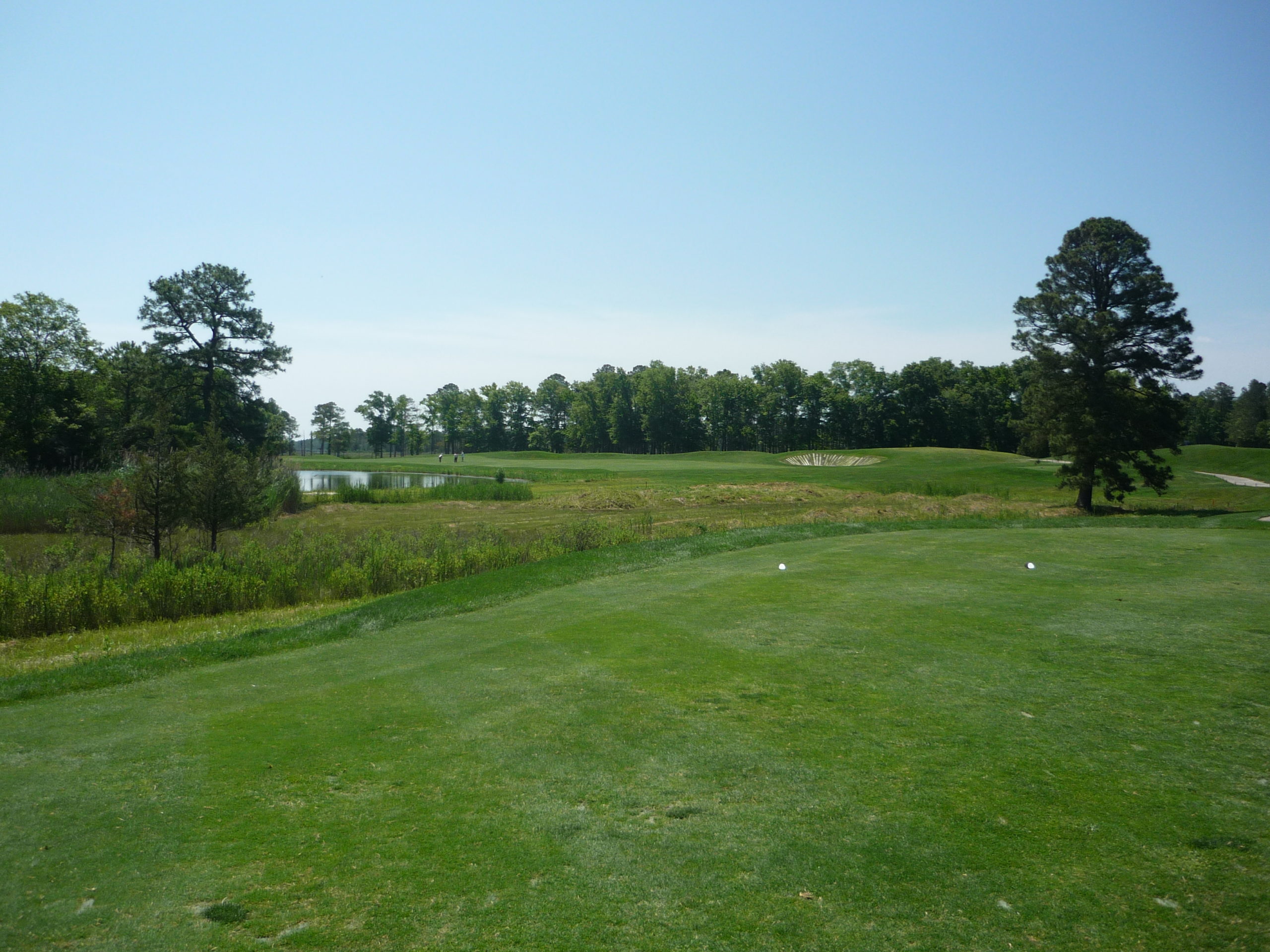
From this spot, it is a green-light situation.
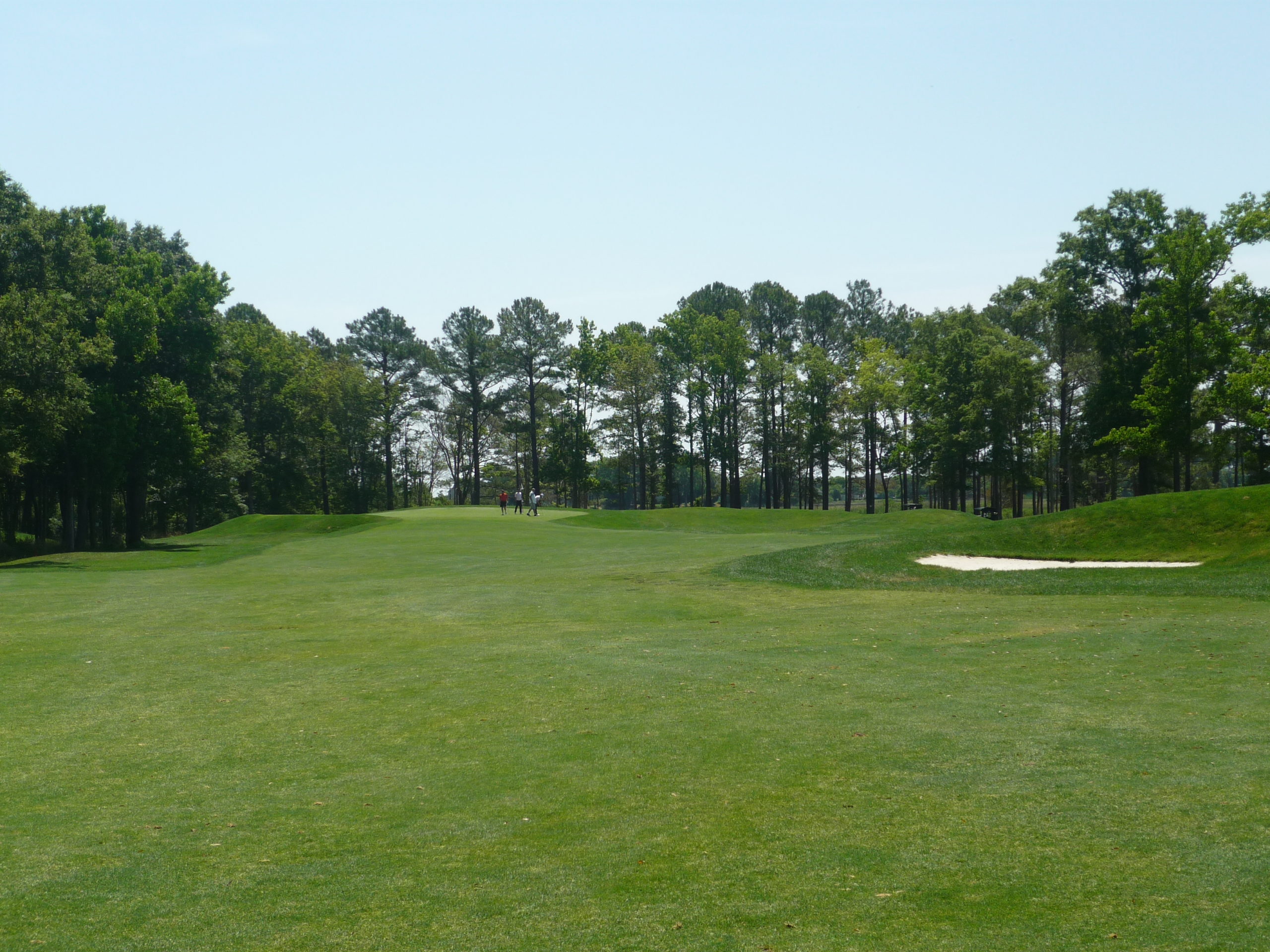
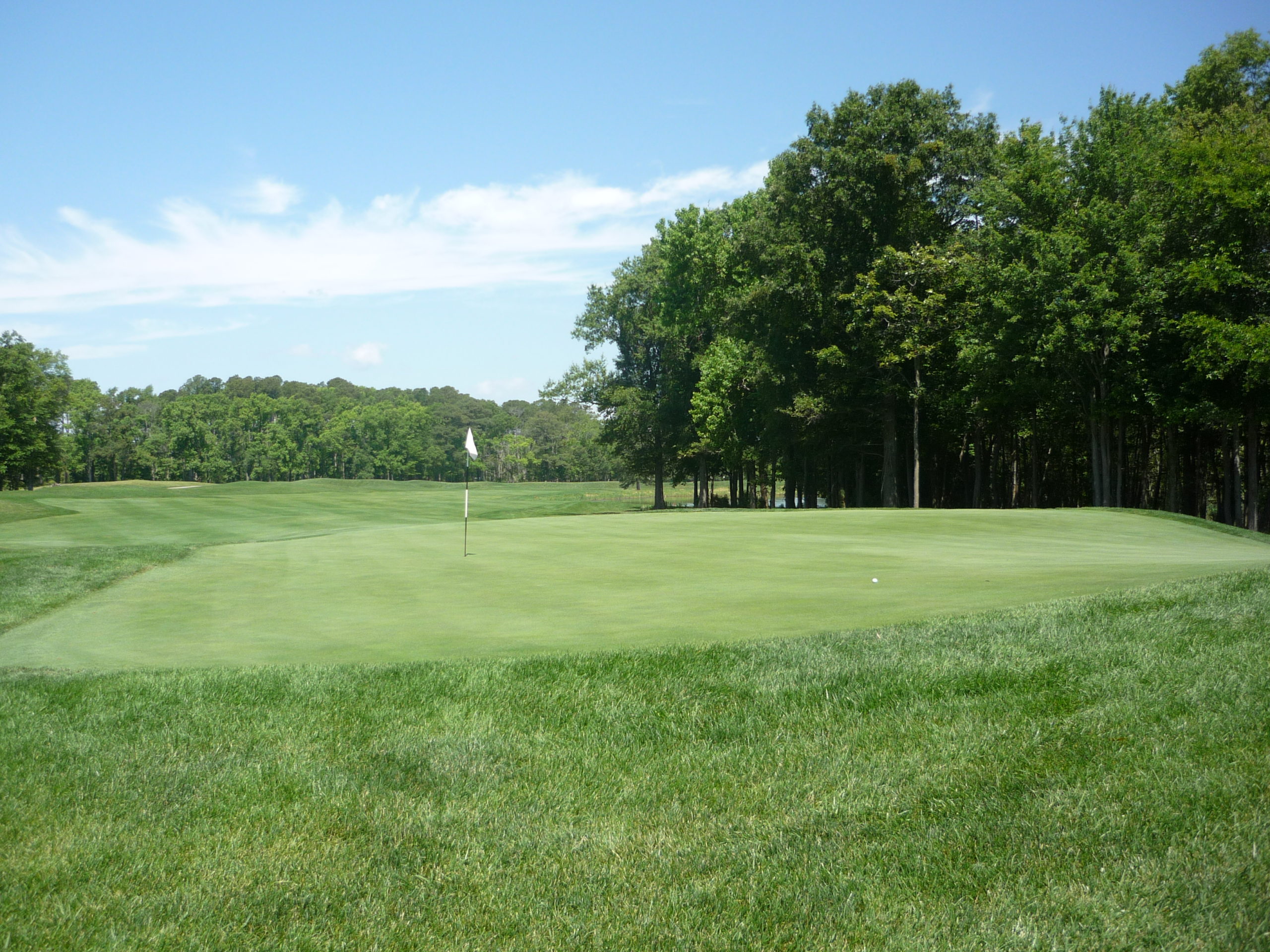
Hole 16 – 333 yards – Par 4
You can see the entirety of this hole from the tee box as it bends slightly to the right. The fairway runs out on the left so a precise drive is required.
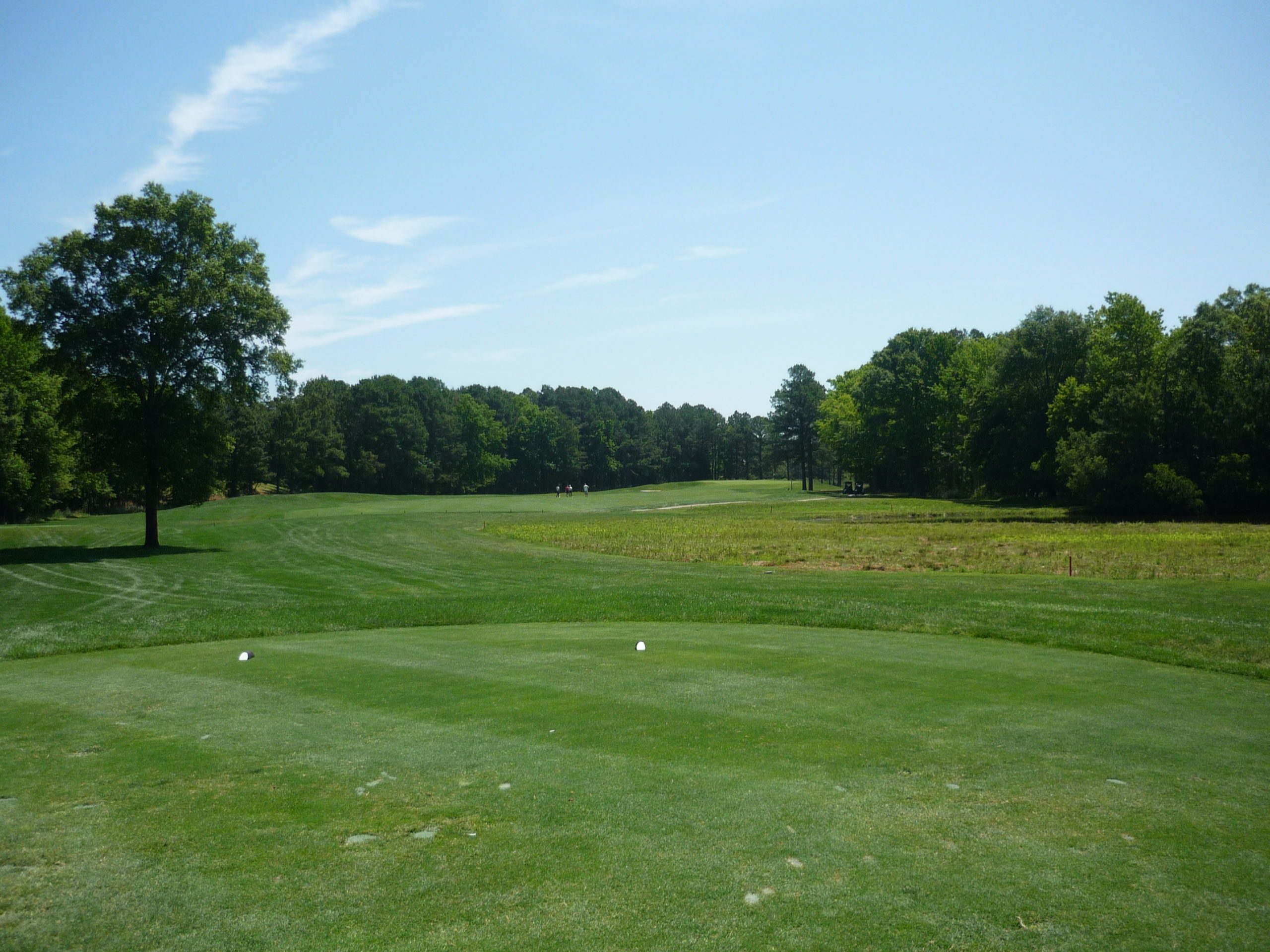
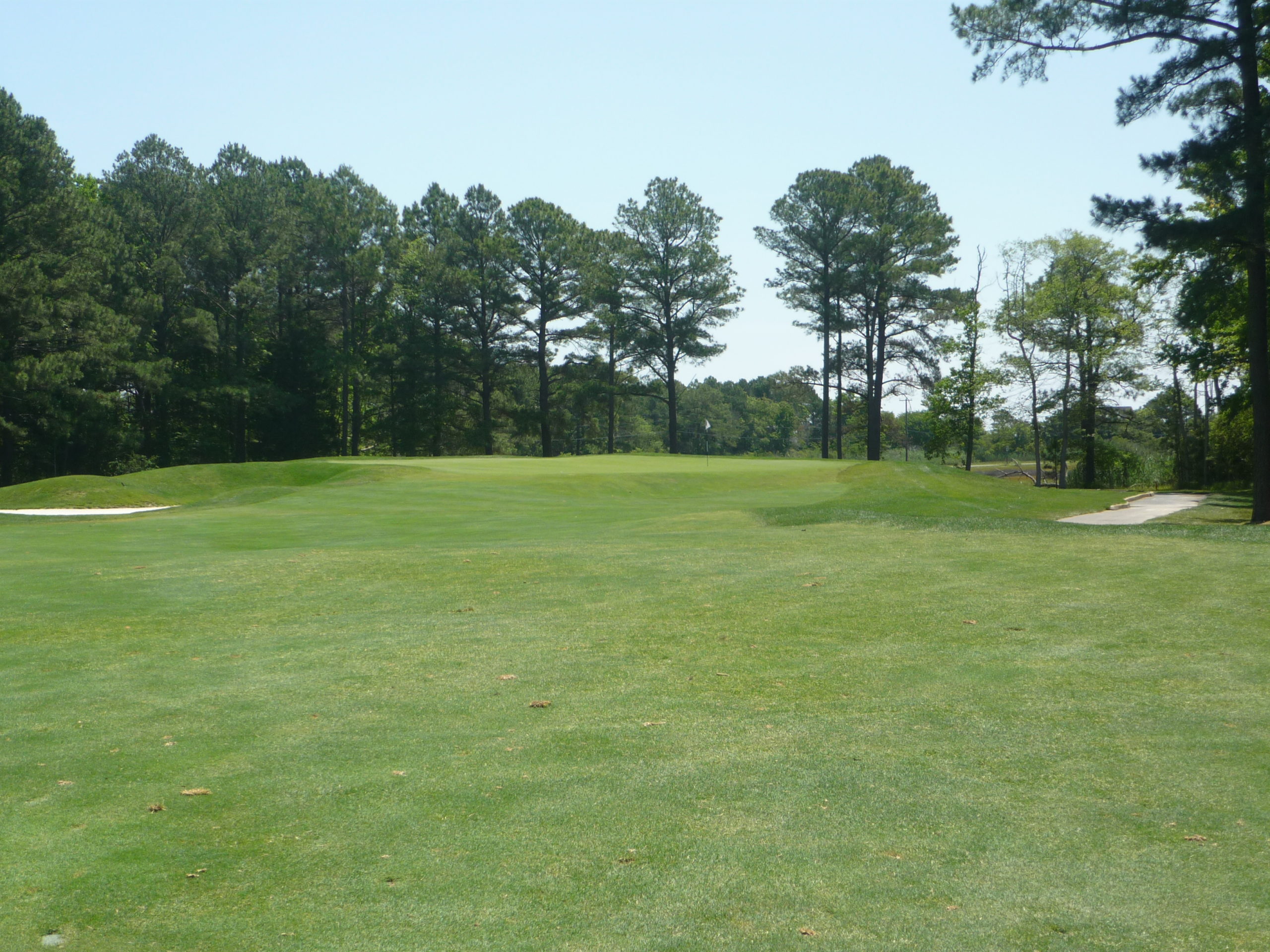
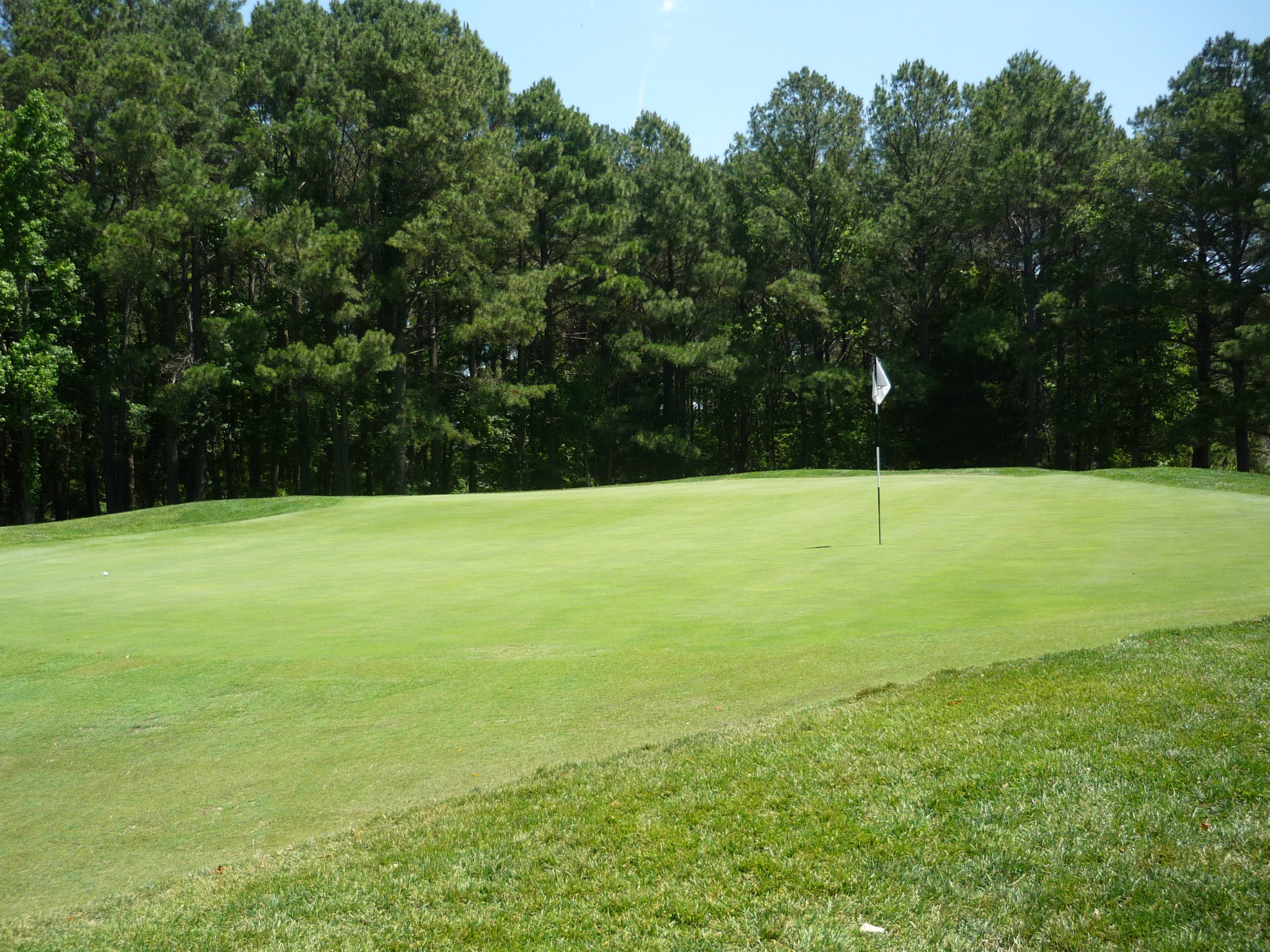
Hole 17 – 400 yards – Par 4
This is one of the tougher holes at the Links at Lighthouse Sound. You absolutely cannot miss on the left.
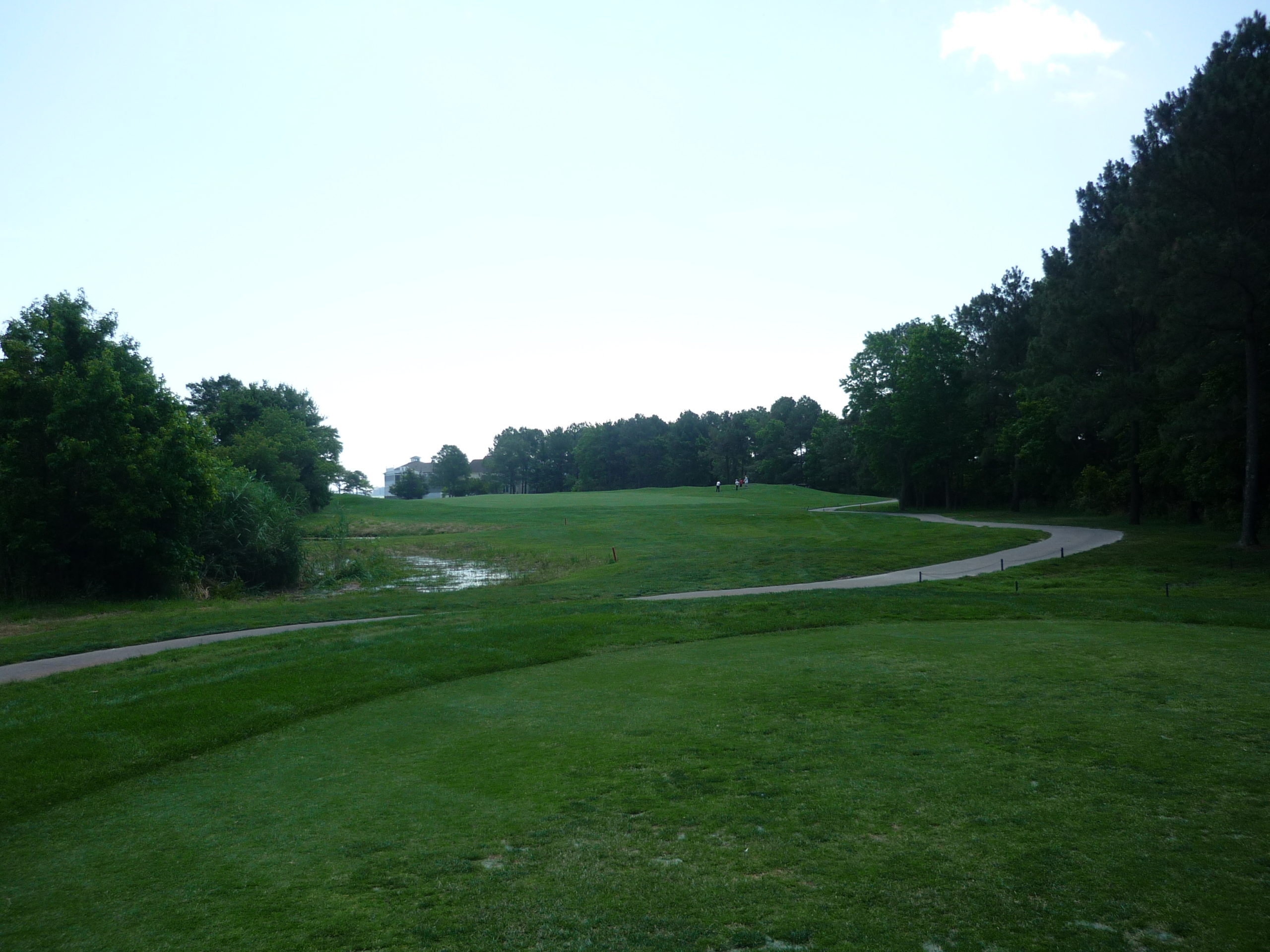
I hit a weak drive into the left rough and that is not where you want to be. There is a hazard on the left well short of the green that can come into play on a mishit.
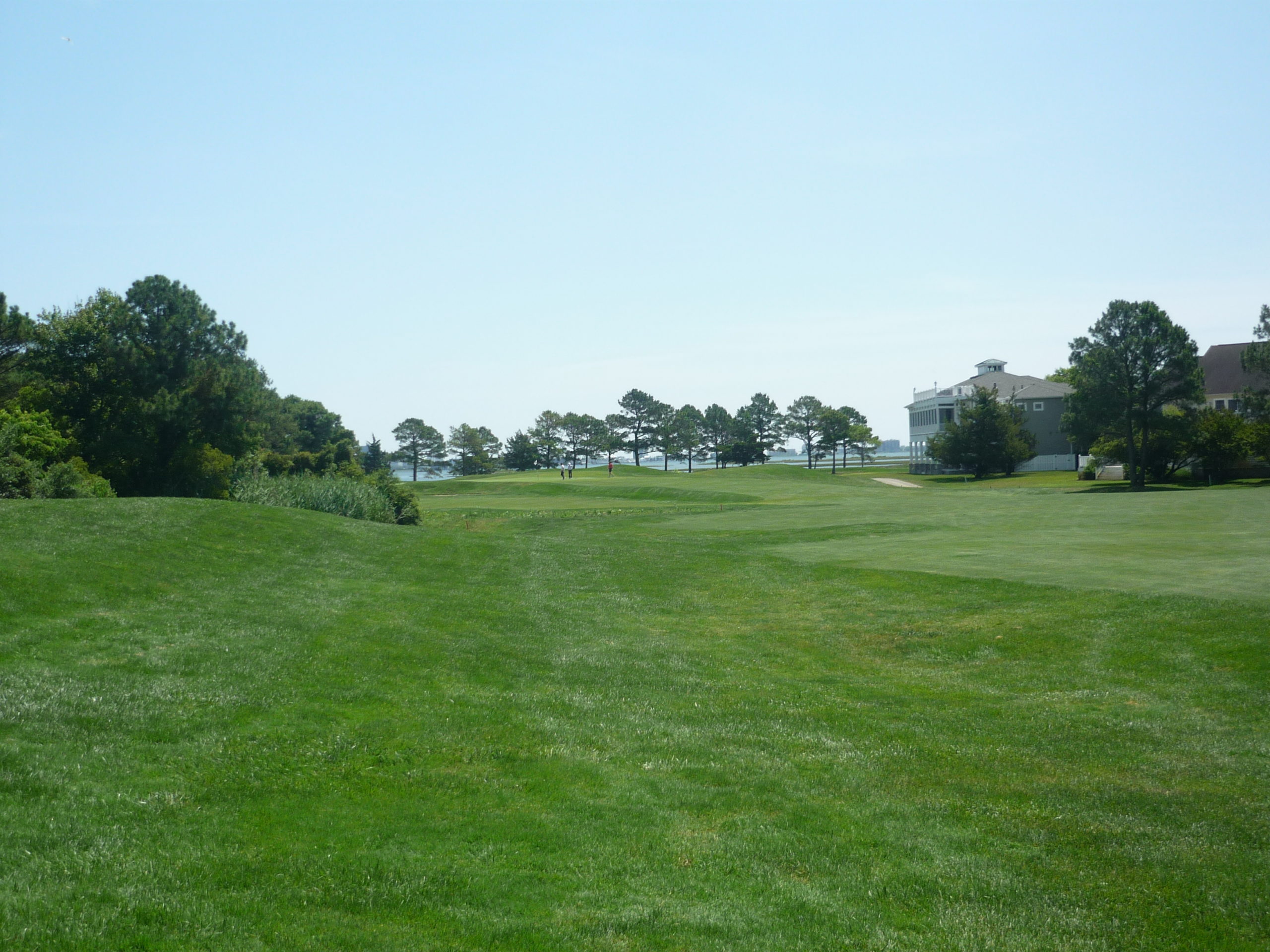
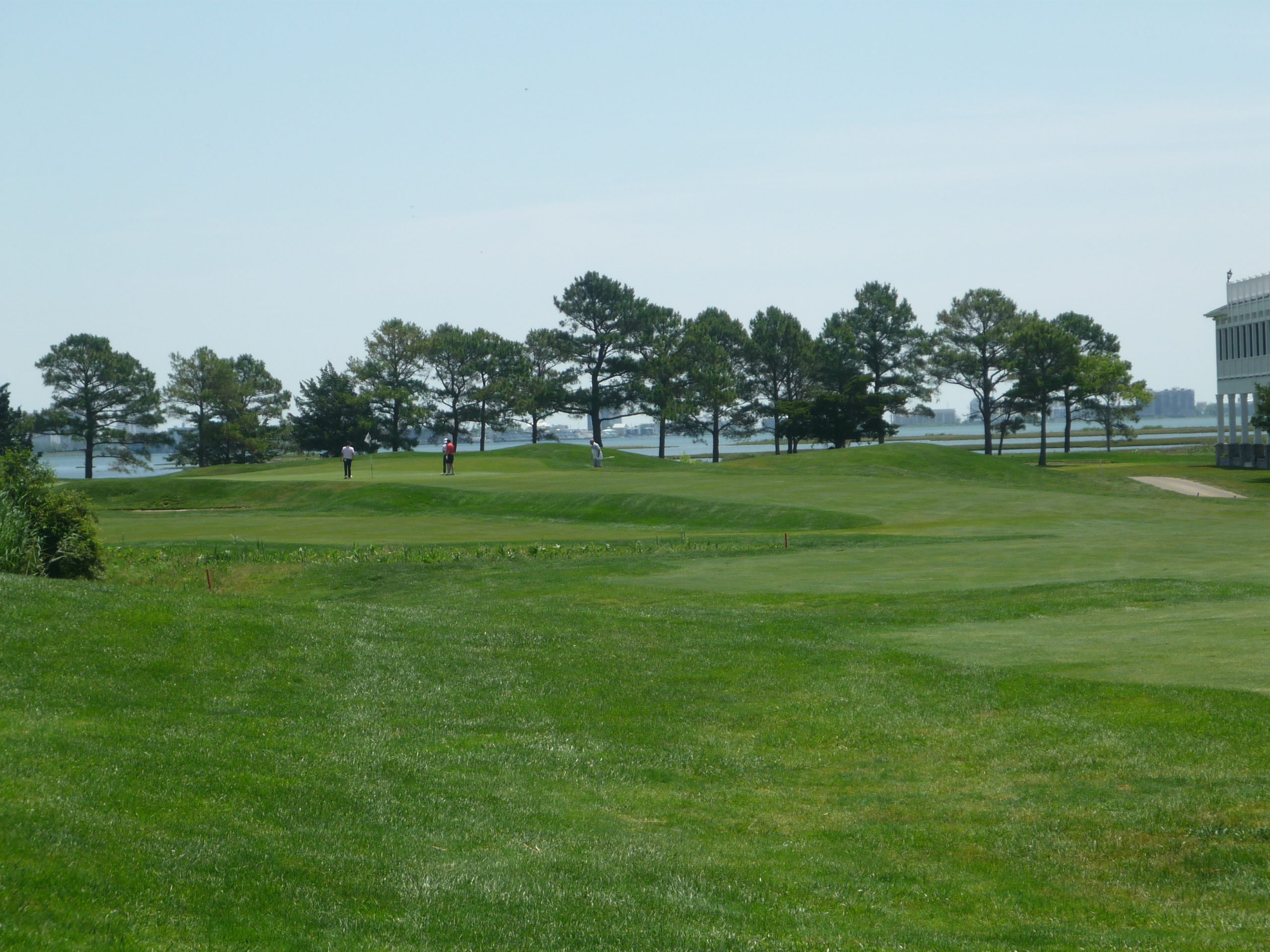
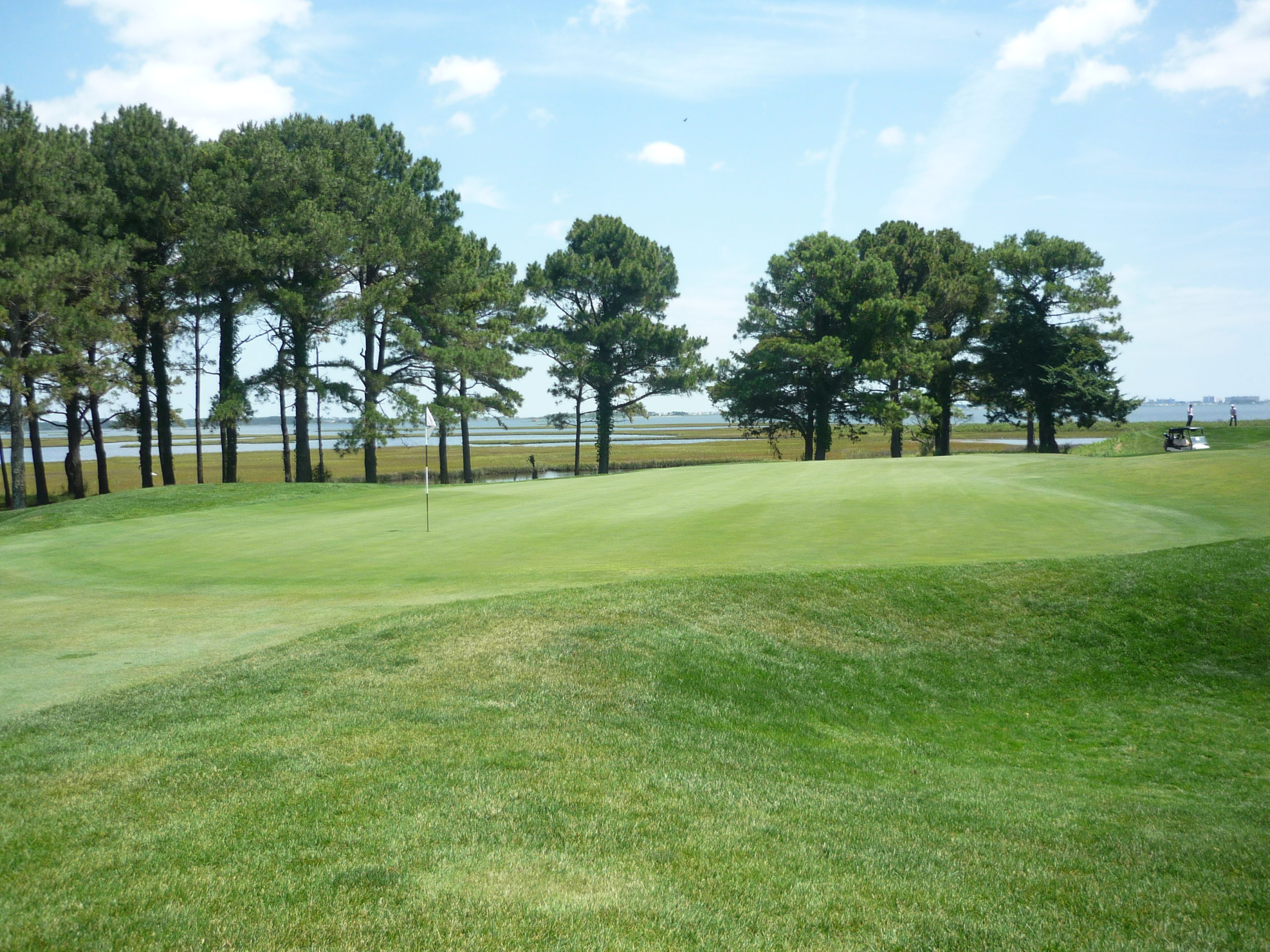
Hole 18 – 505 yards – Par 5
The finisher is a big, sweeping dogleg left. If you can force a drive up the left side the second shot will be considerably shorter. This is because the true yardage to the green is much shorter than the scorecard yardage. Be careful though because the water goes all up the left side.
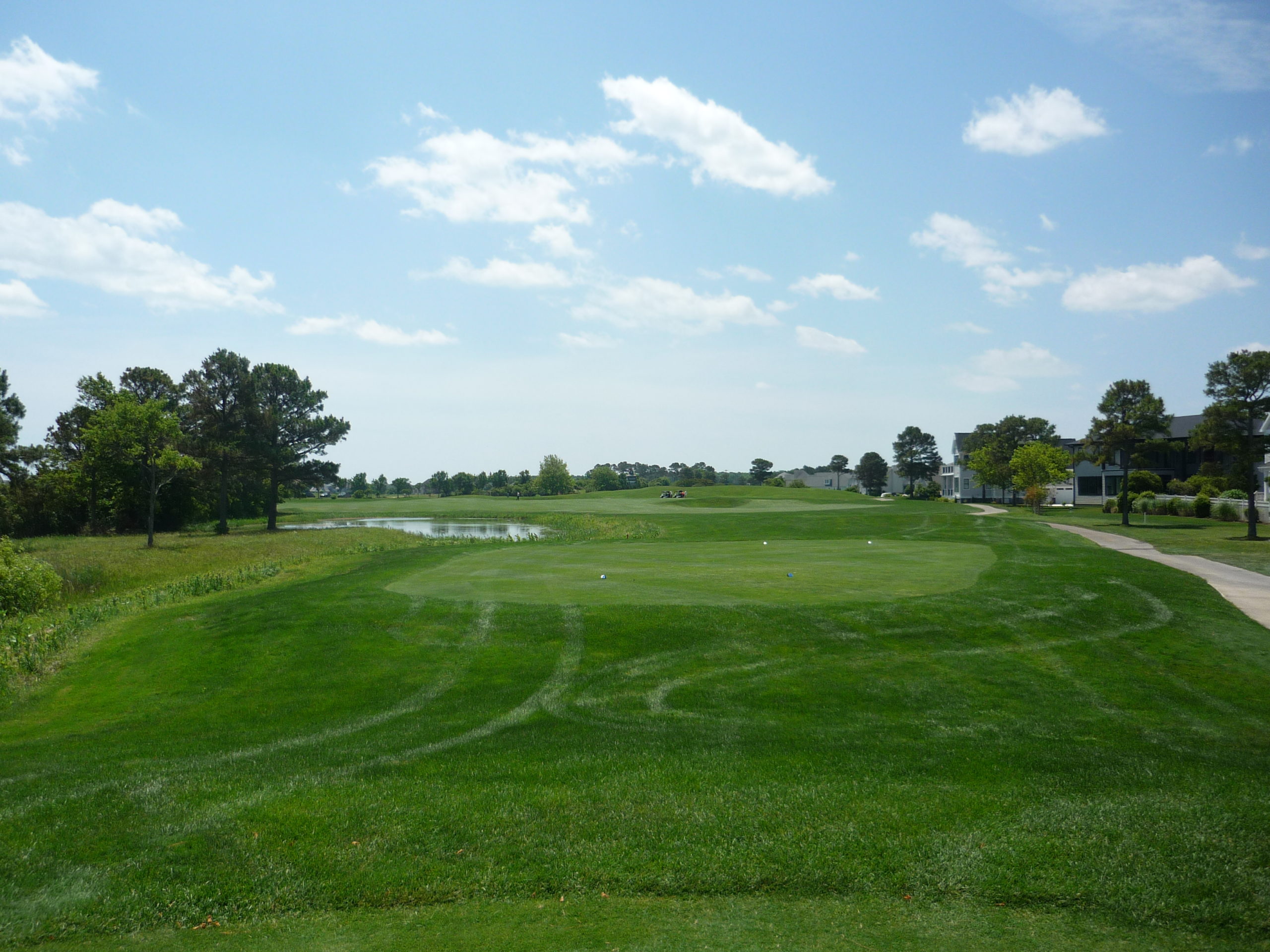
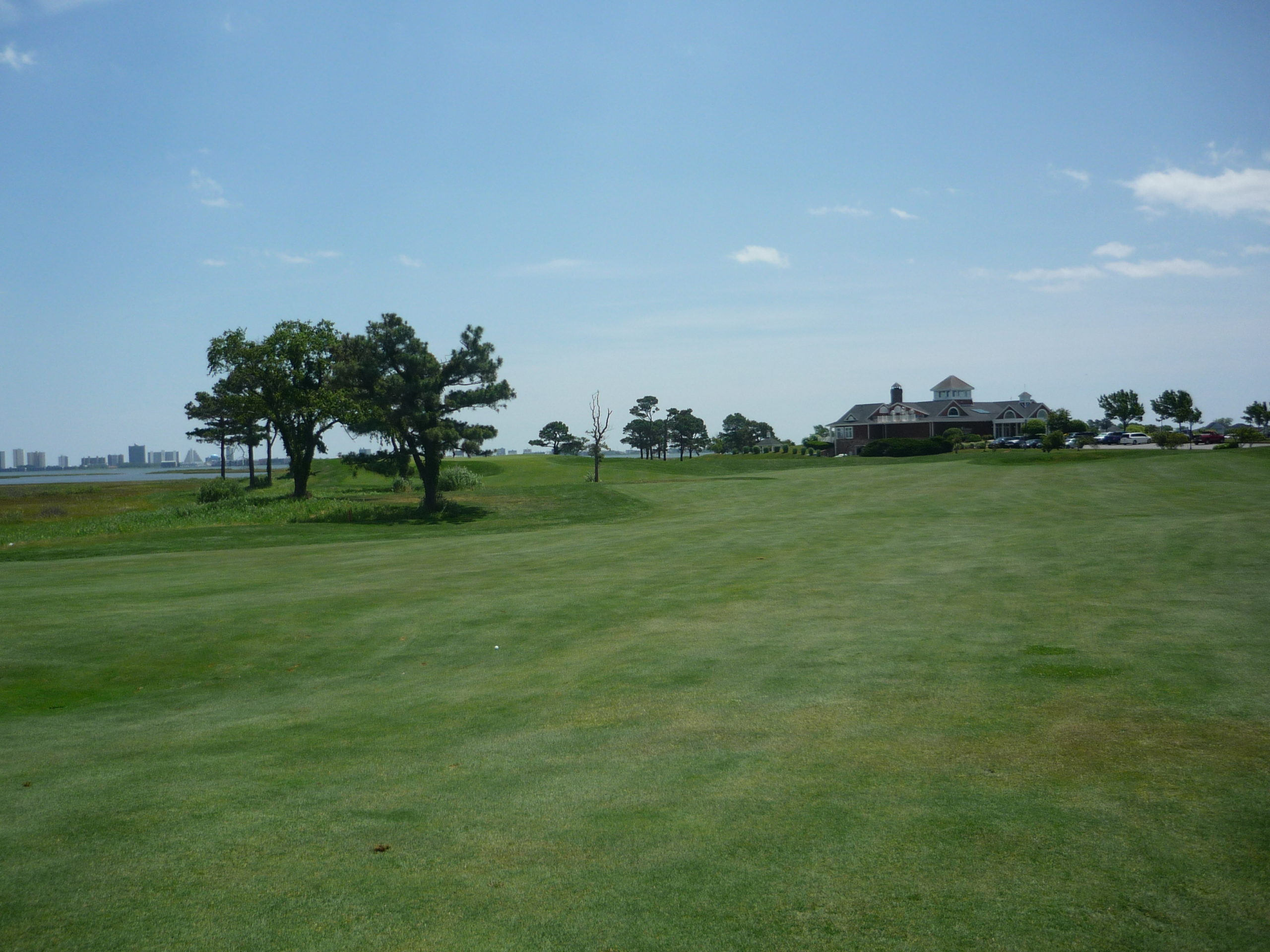
A perched green with a prime view of Ocean City is home to one of the cooler shots here.
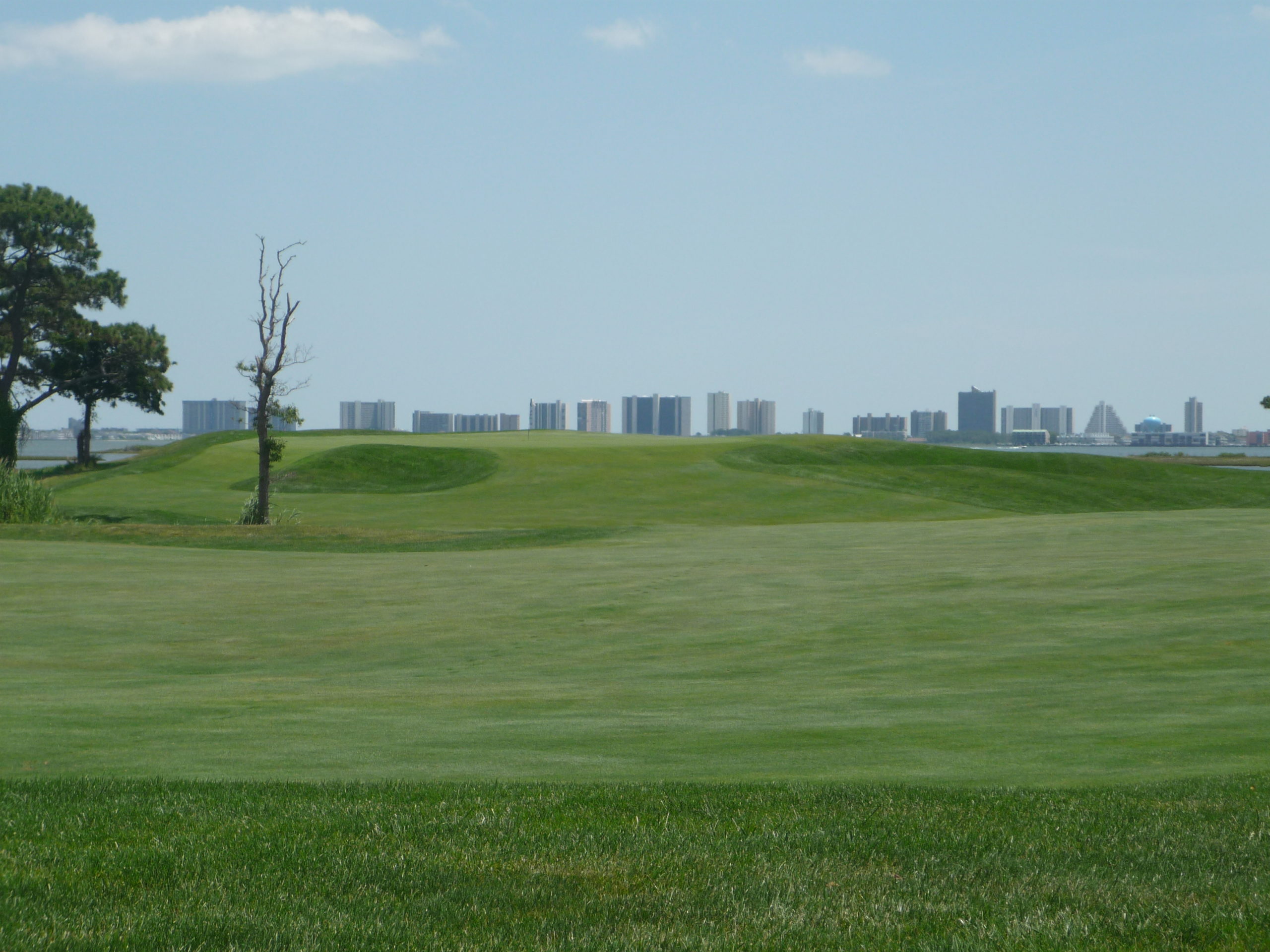
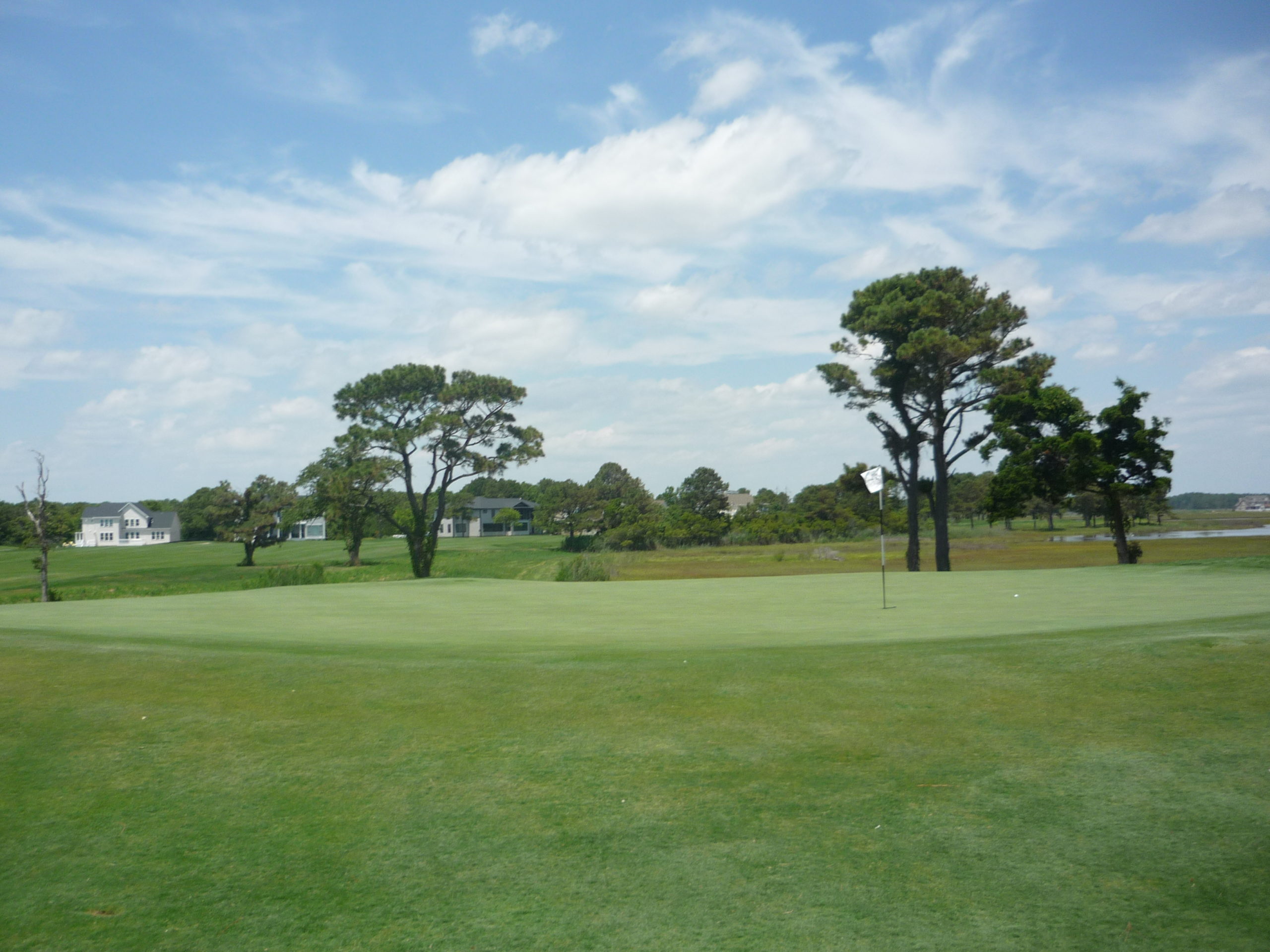
Take a minute to look around and notice your surroundings on this green!
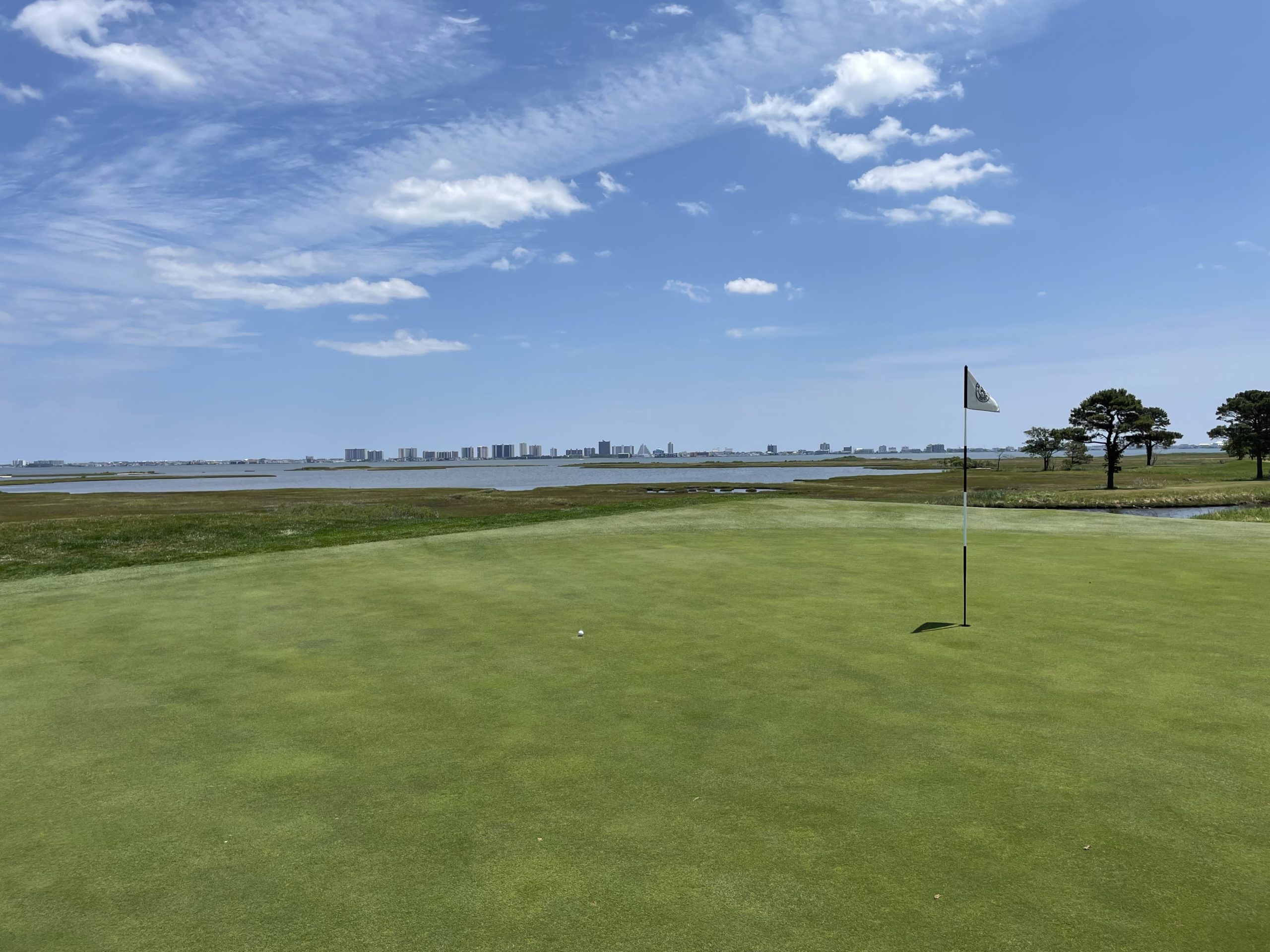
Due to the recent rain, The Links at Lighthouse sound wasn’t playing as it was designed. That was unfortunate but you can’t really do anything about the weather.
I enjoyed the holes that were out in the open and near the water. Aside from a few rough spots, those holes were the most interesting to me.
